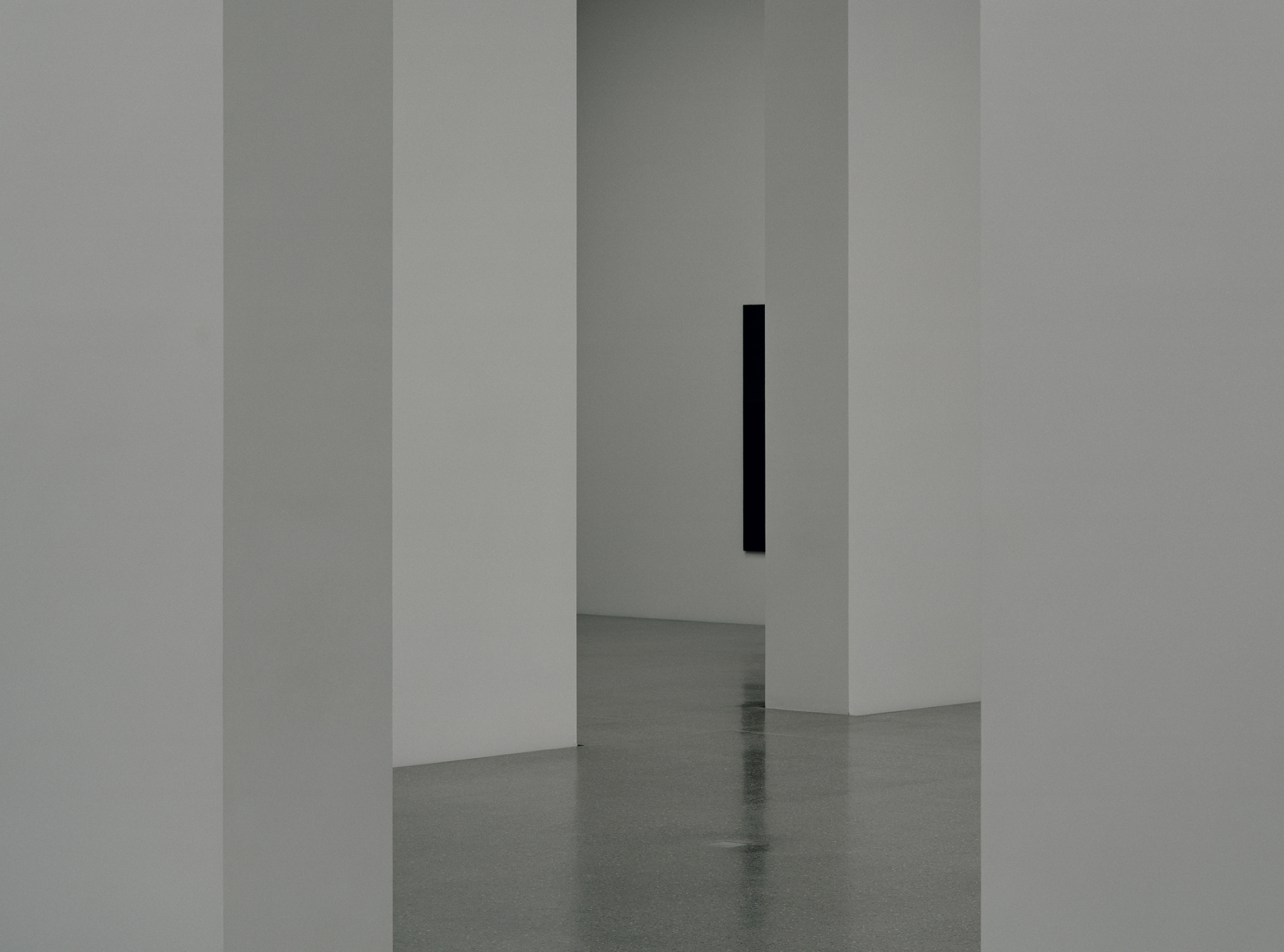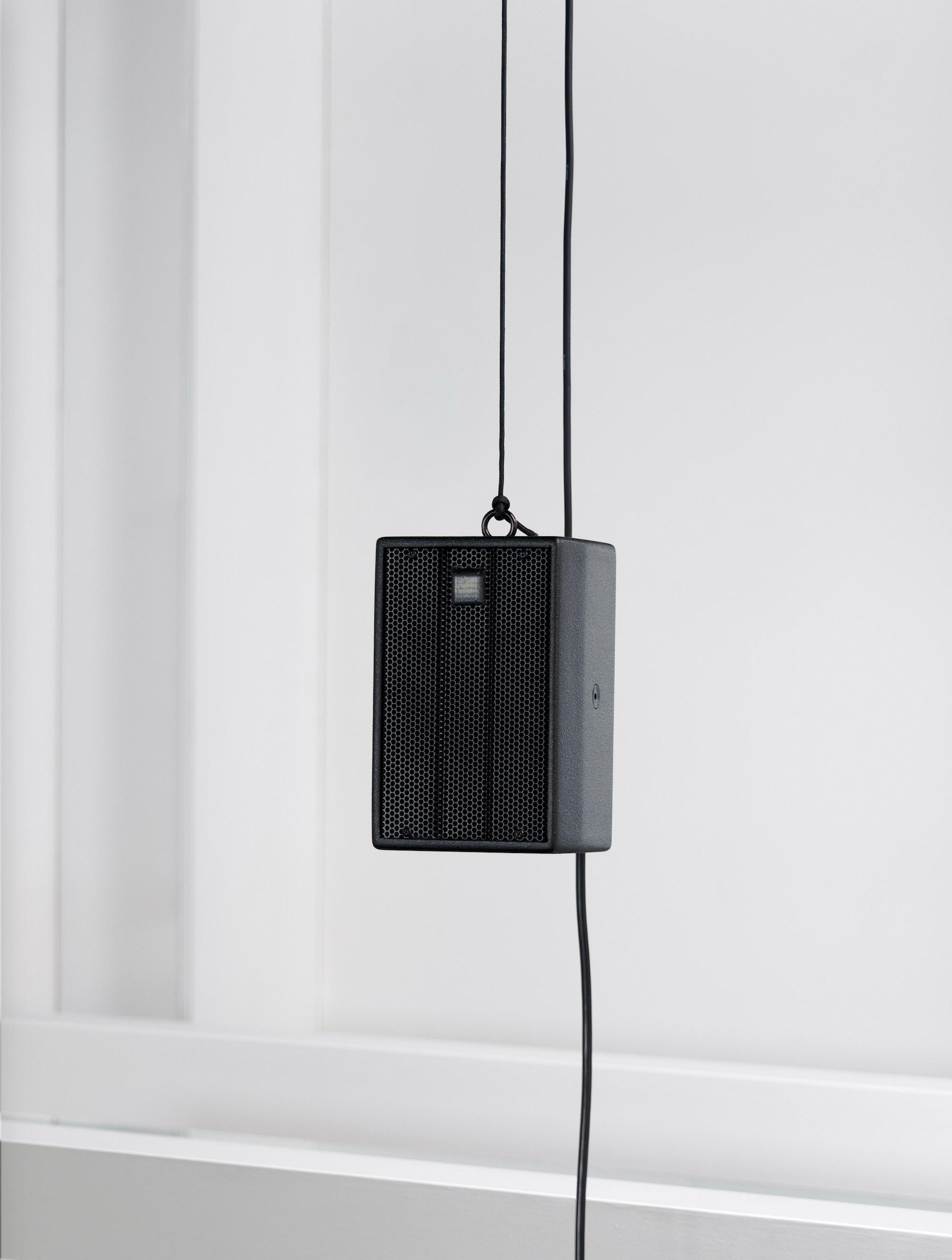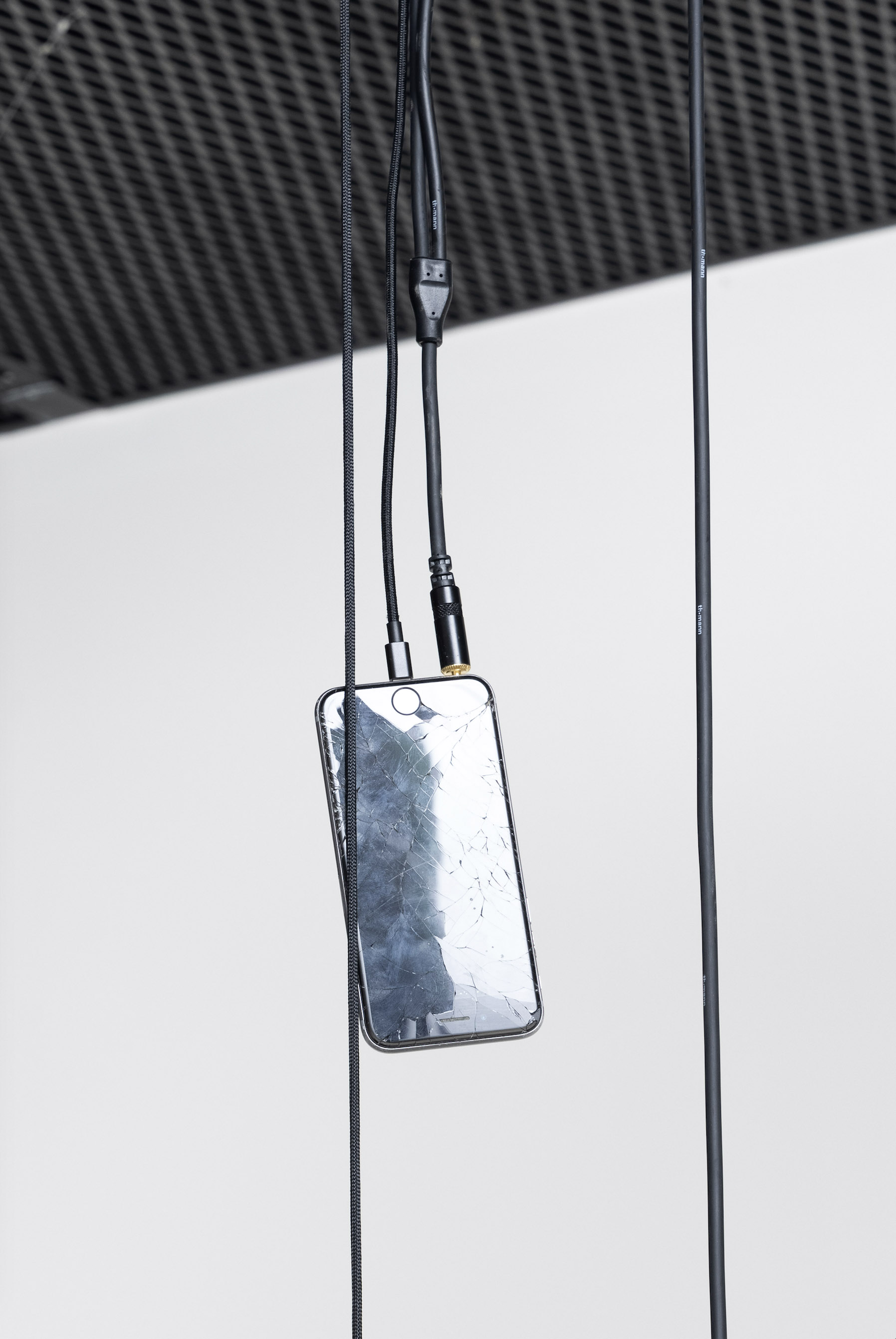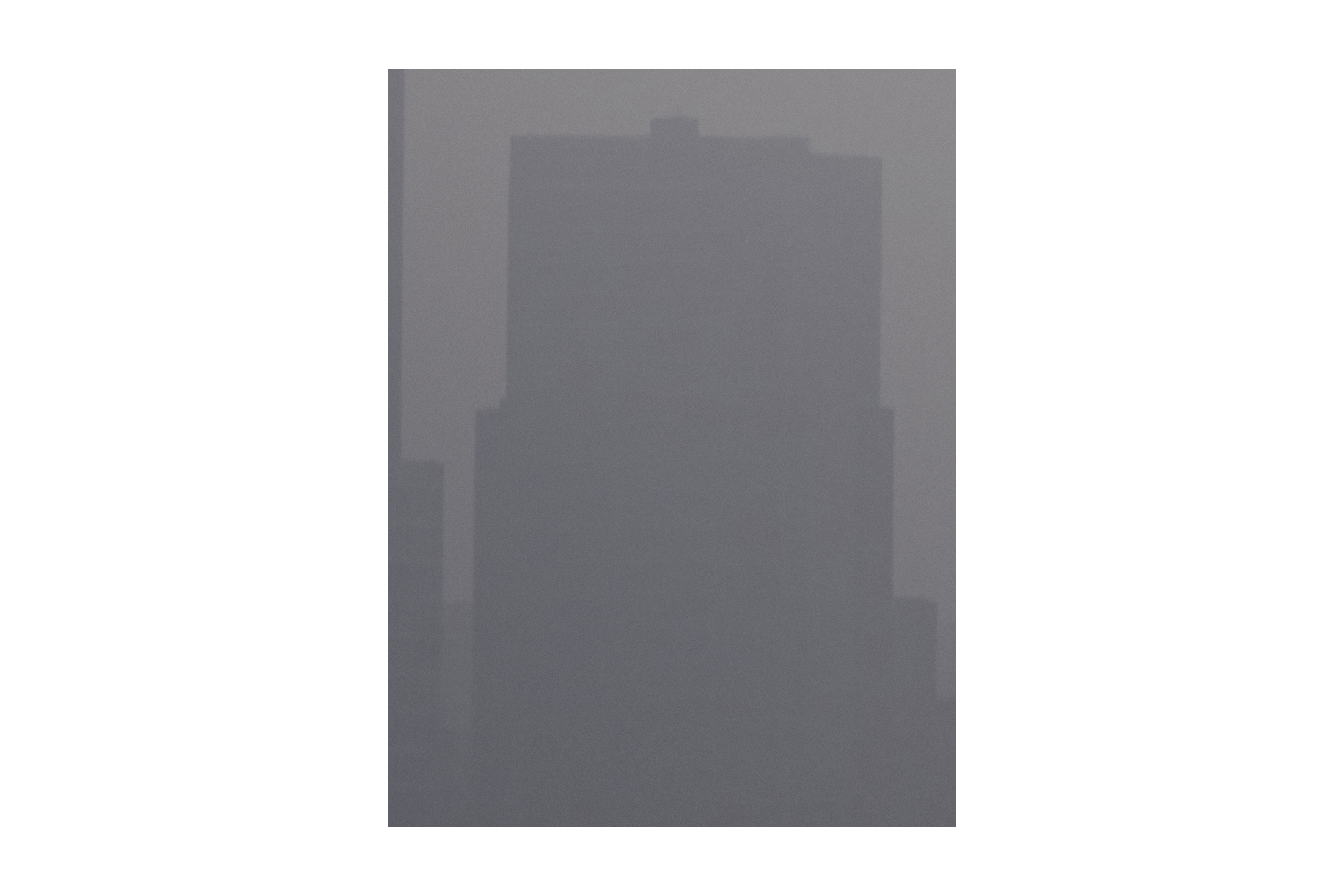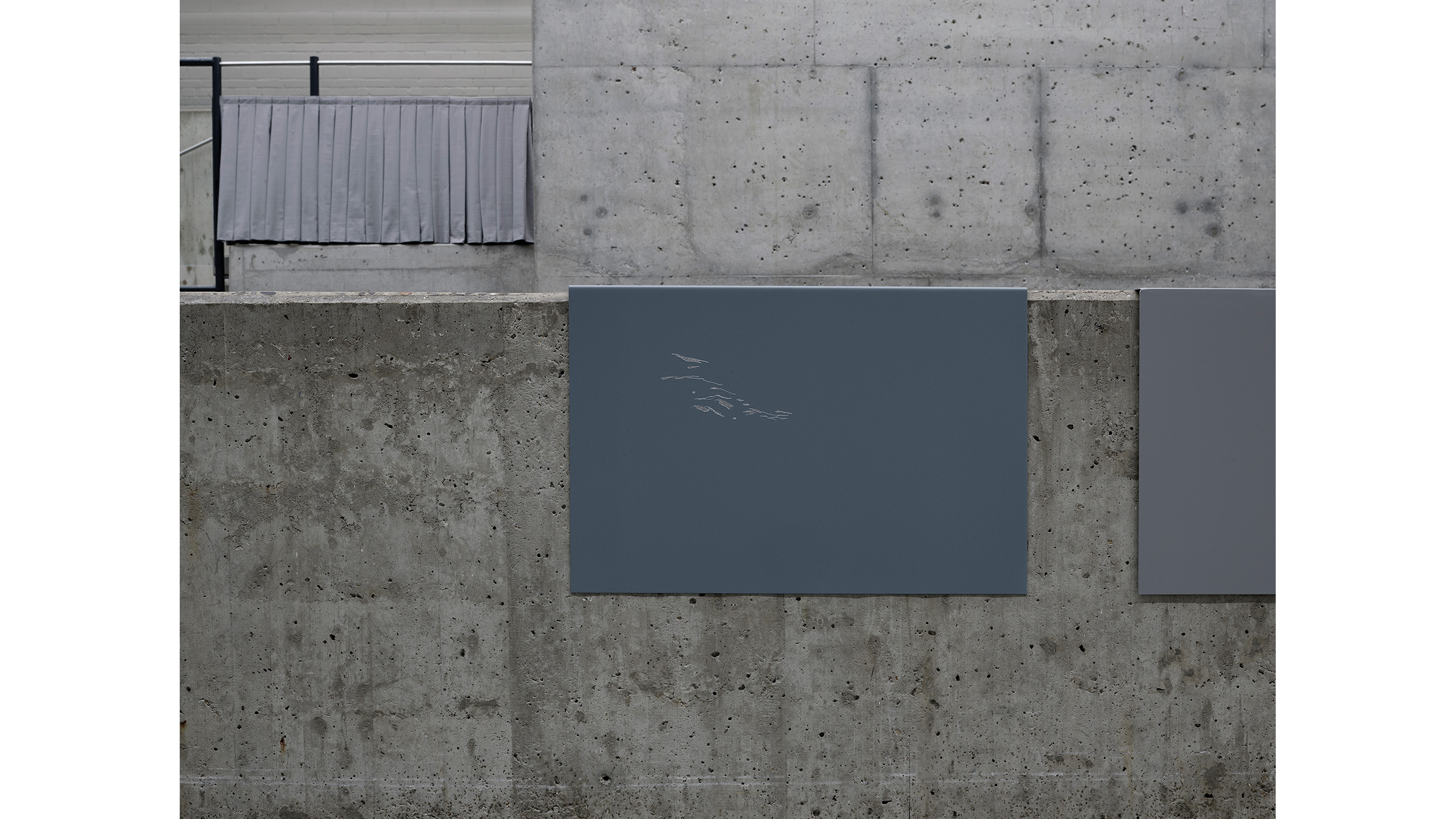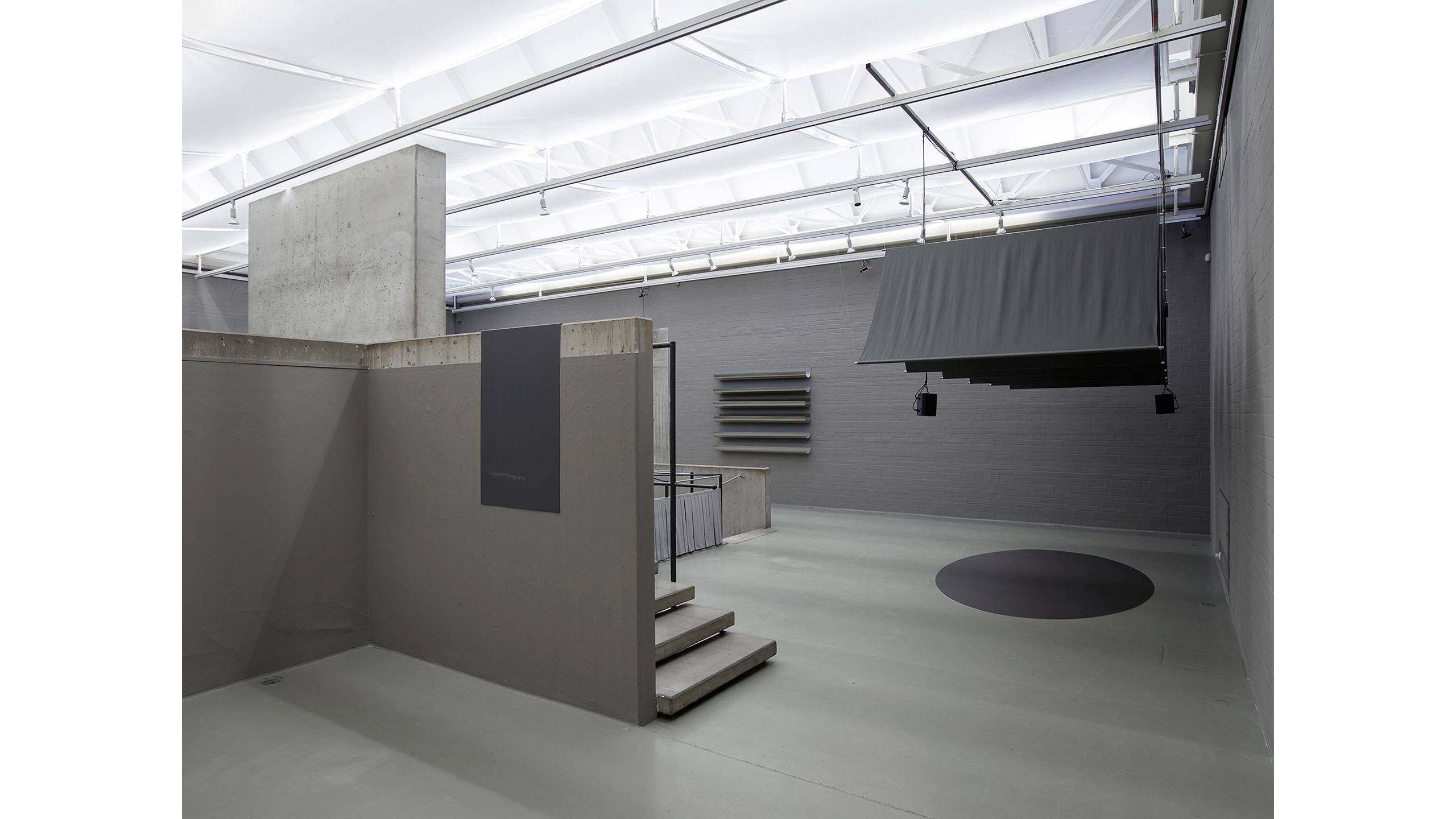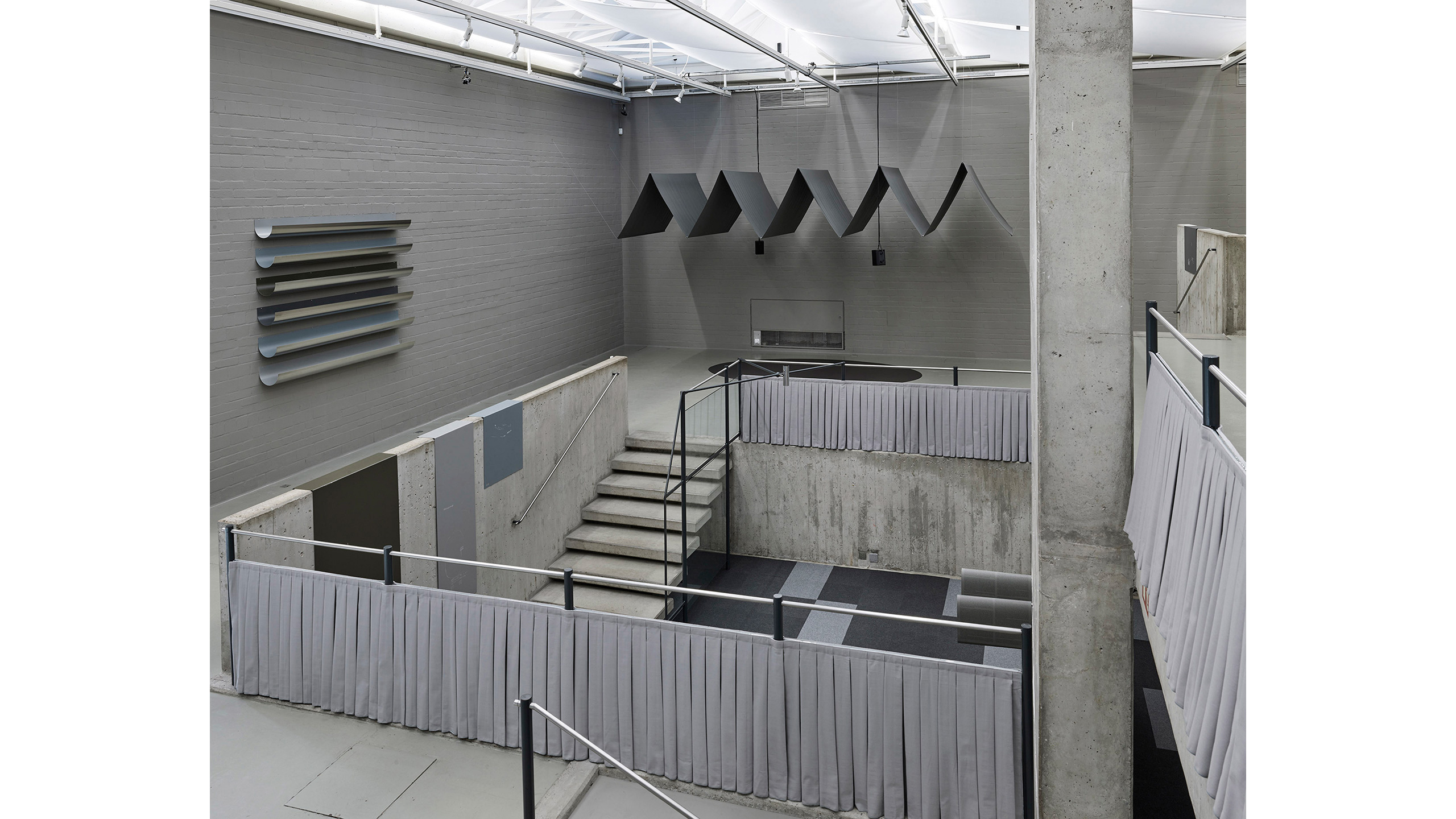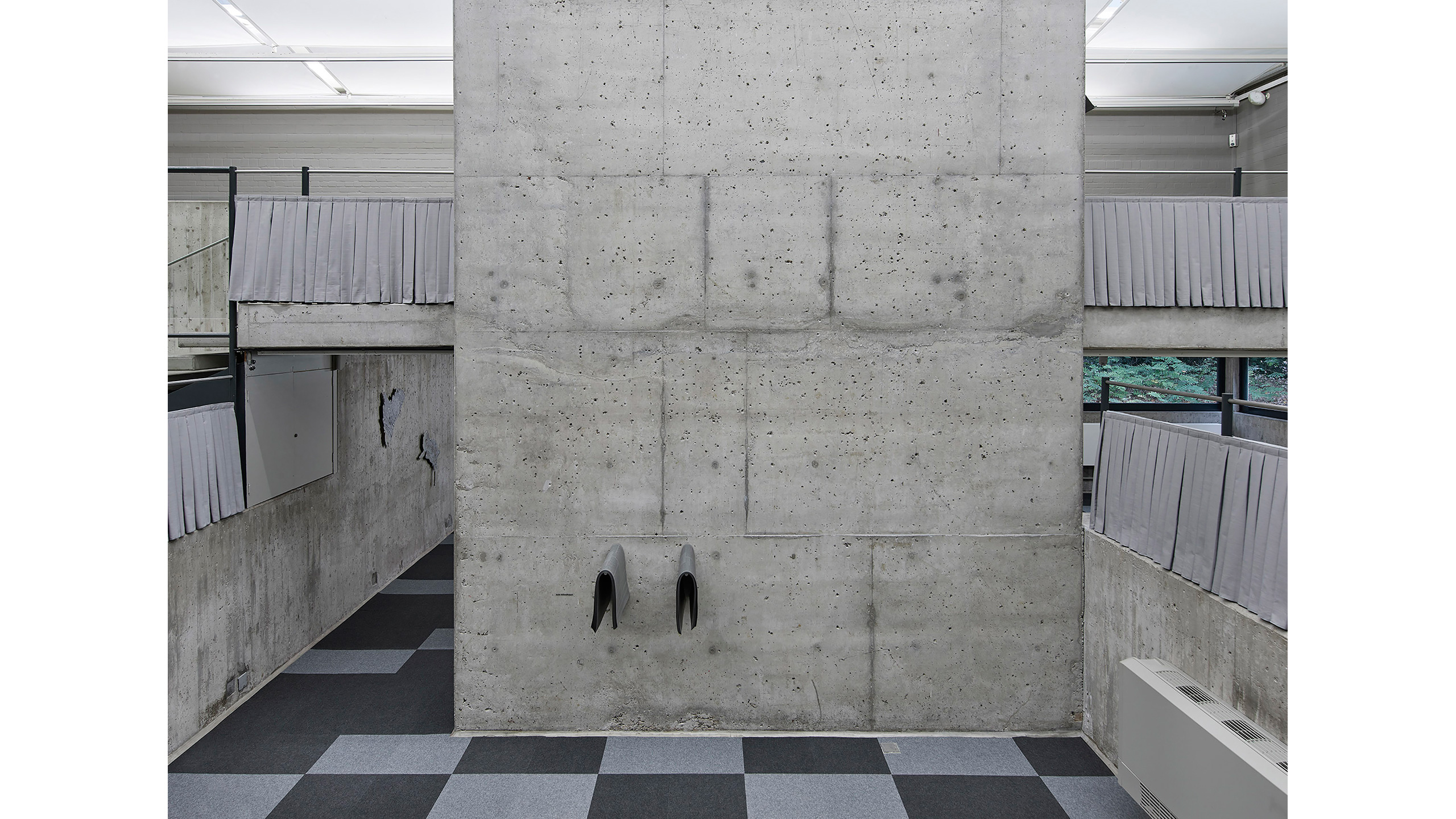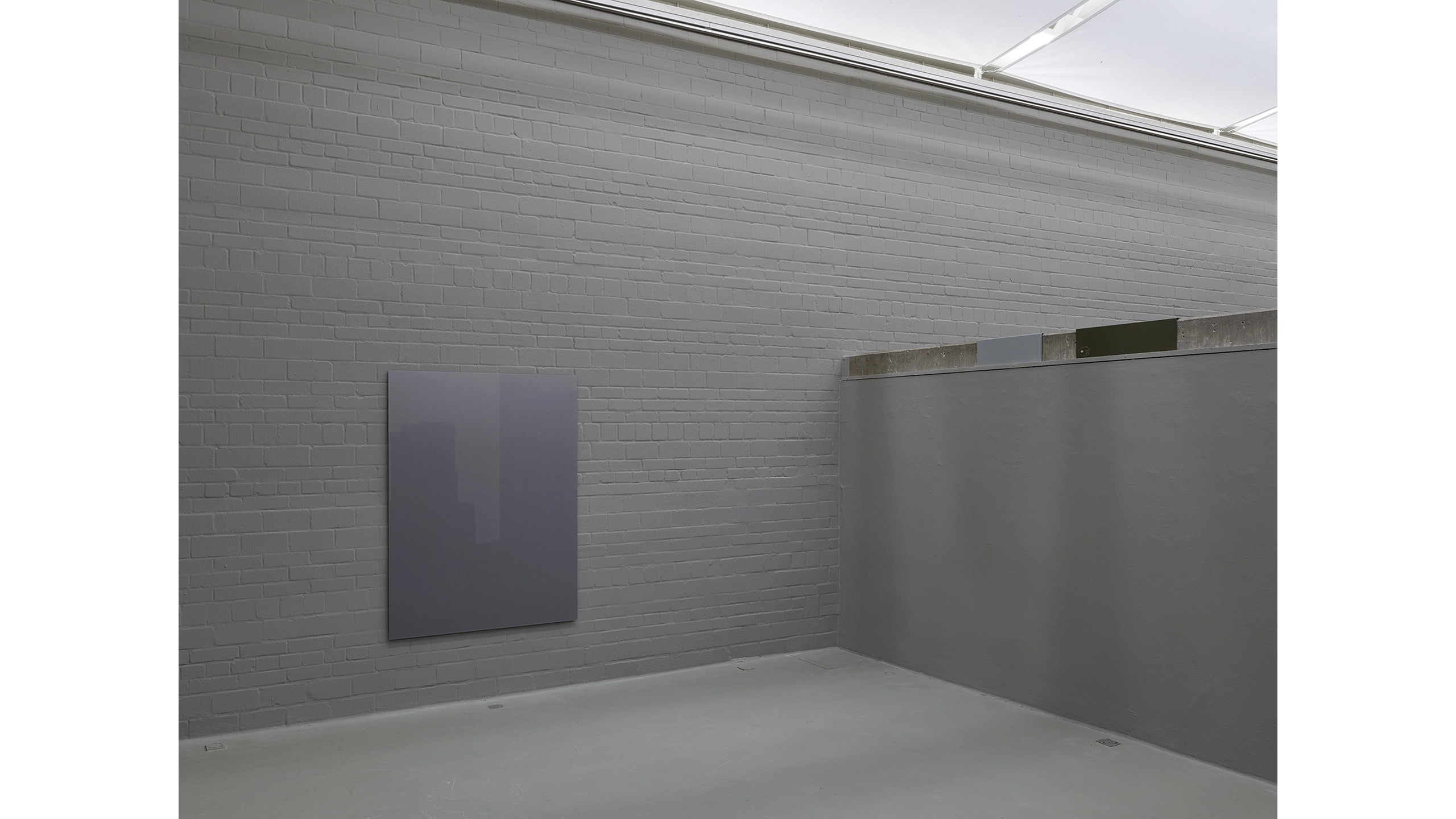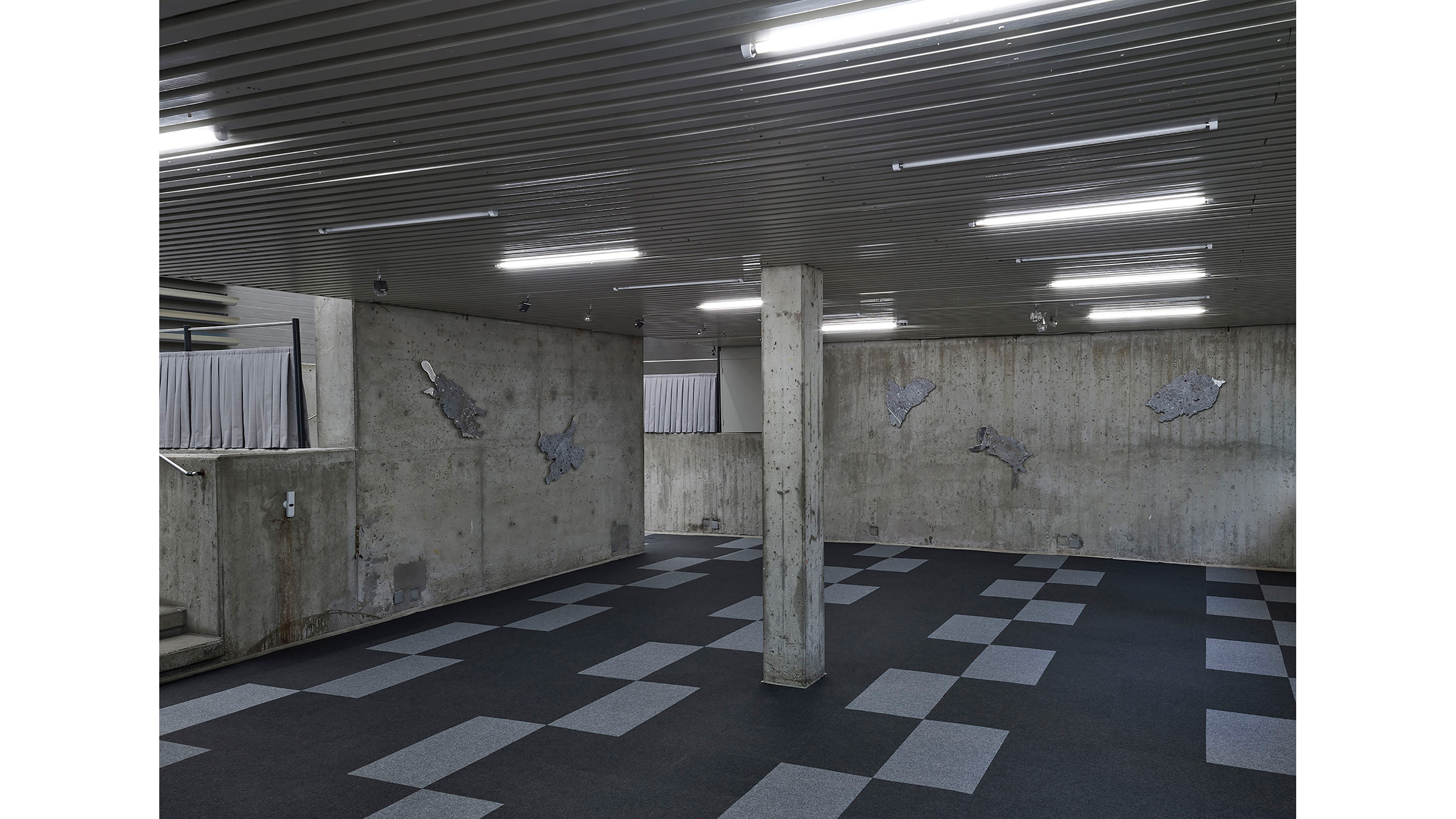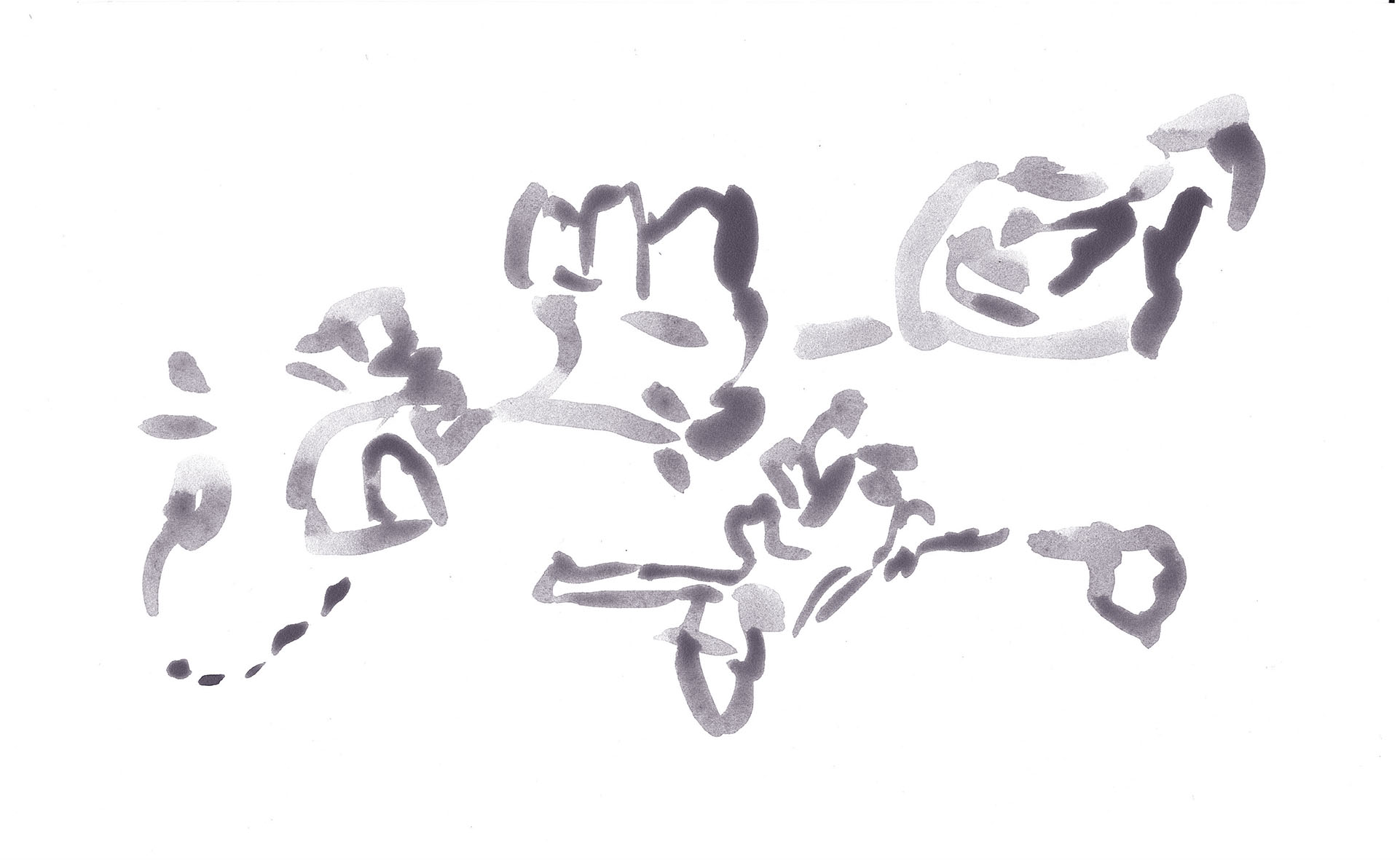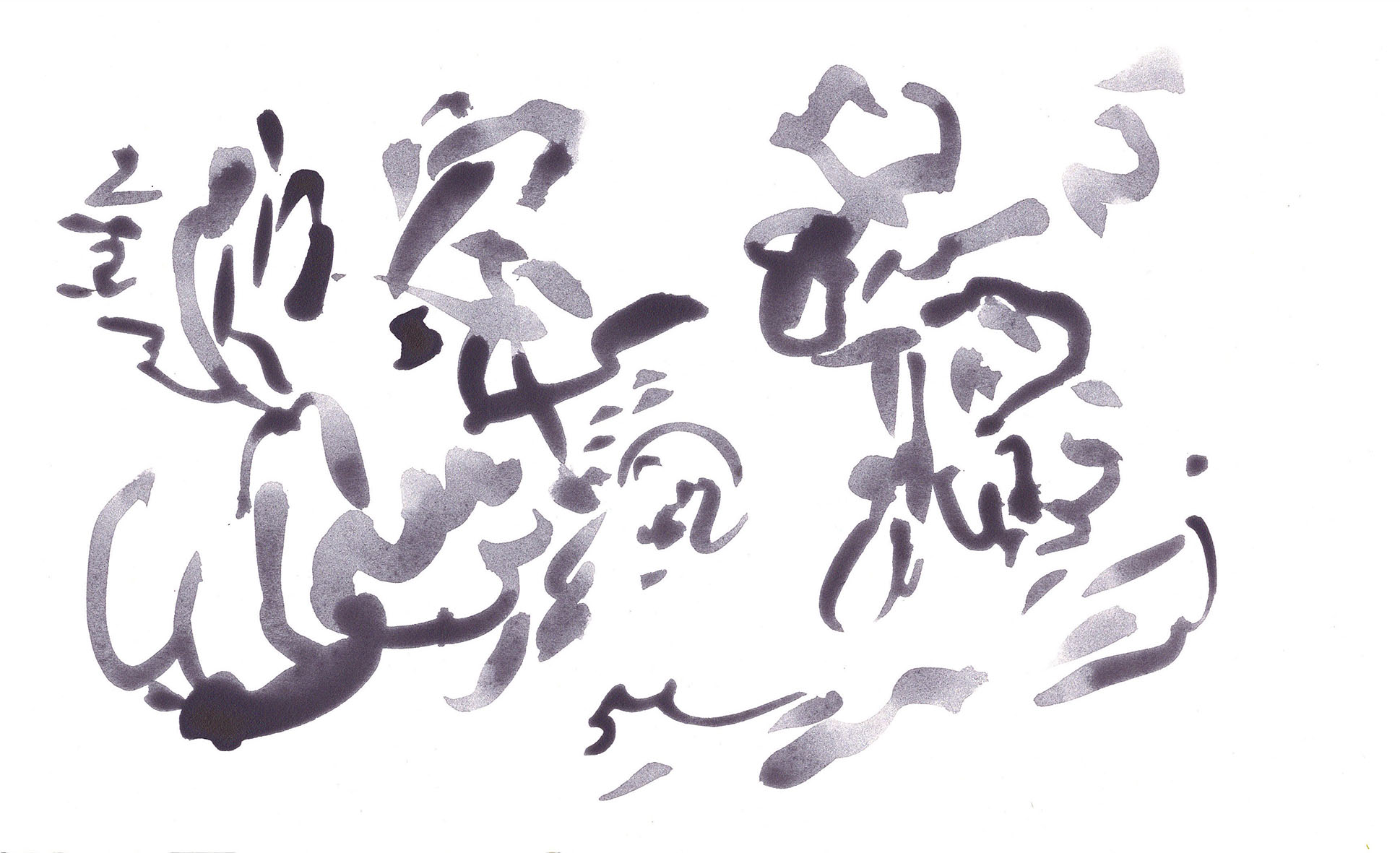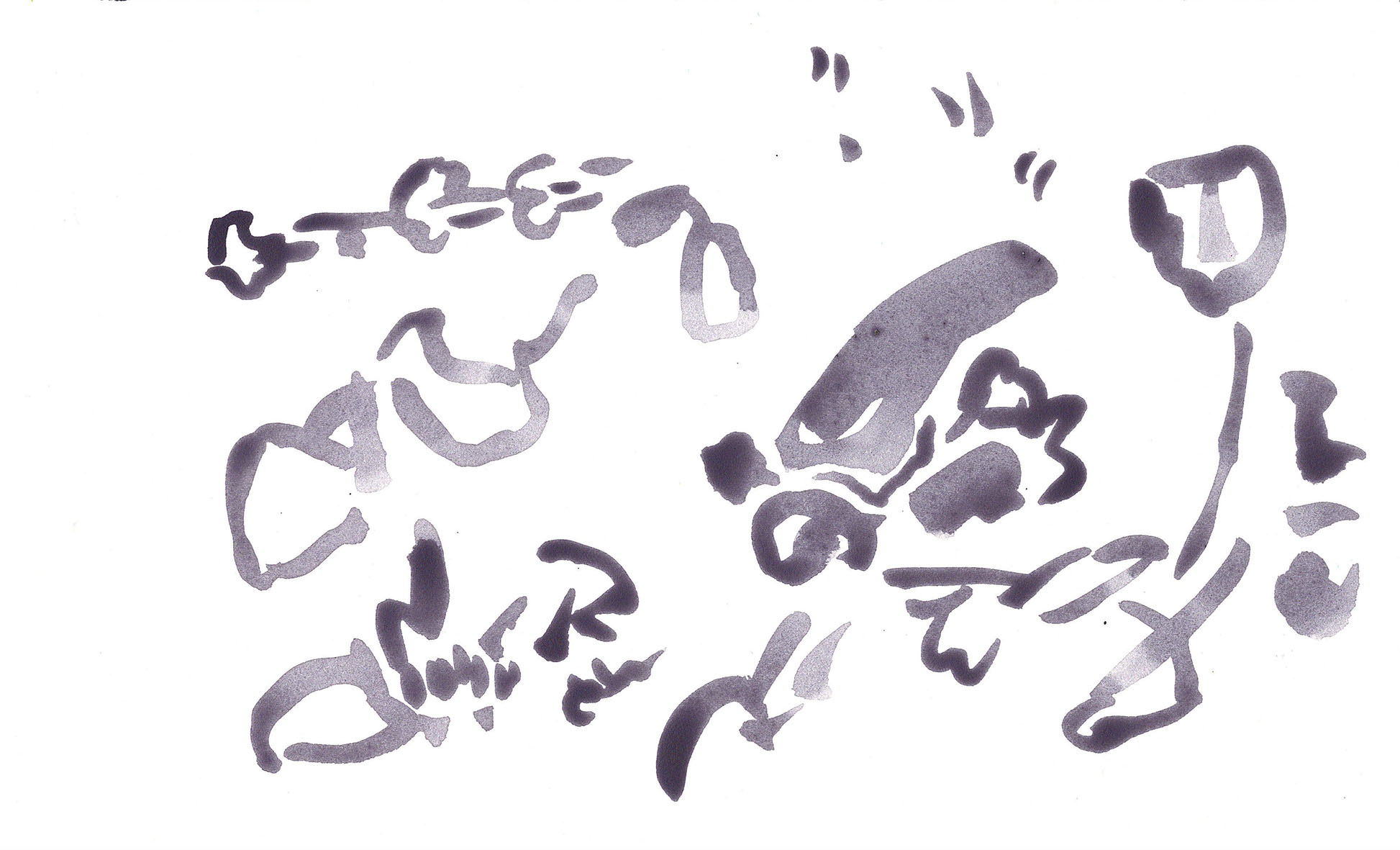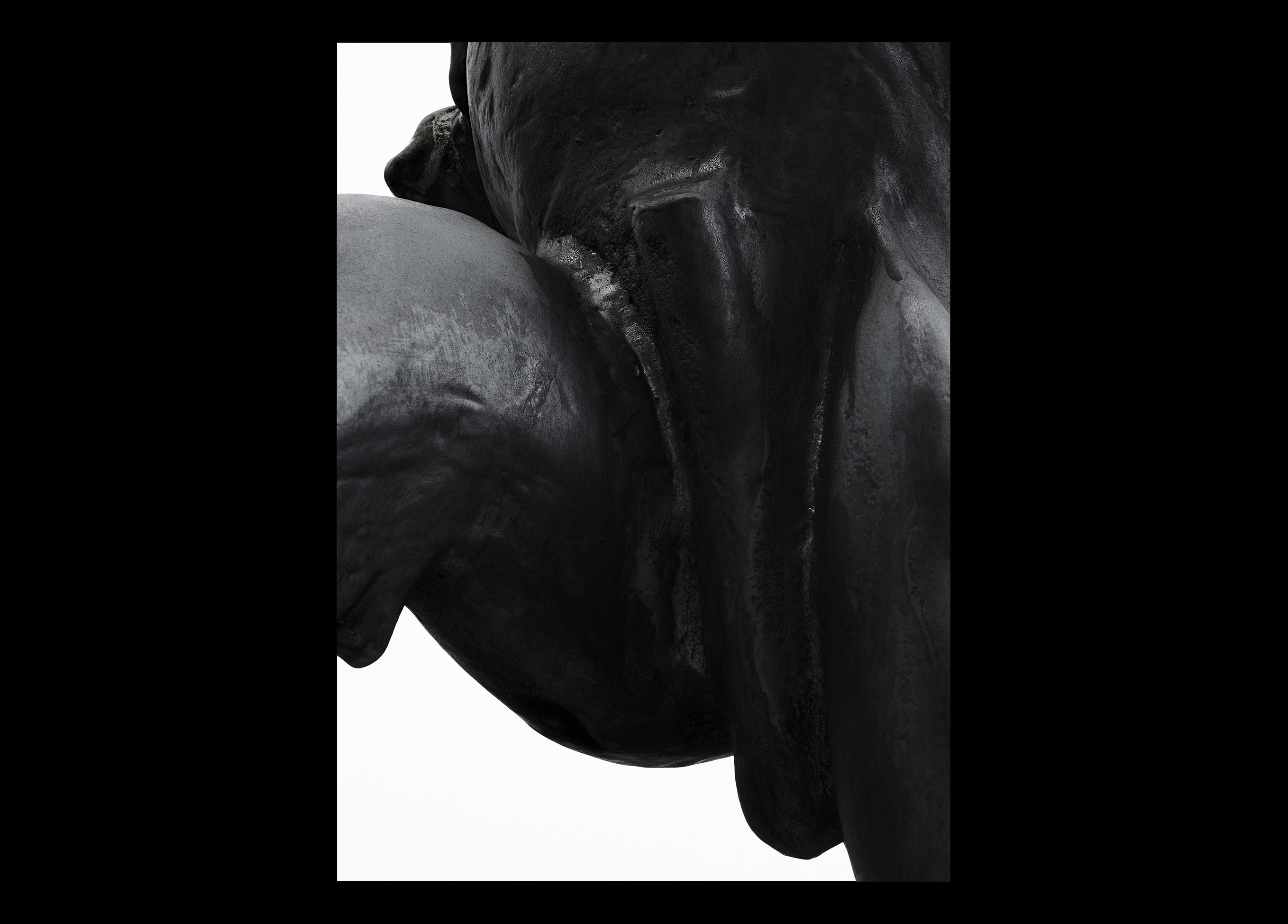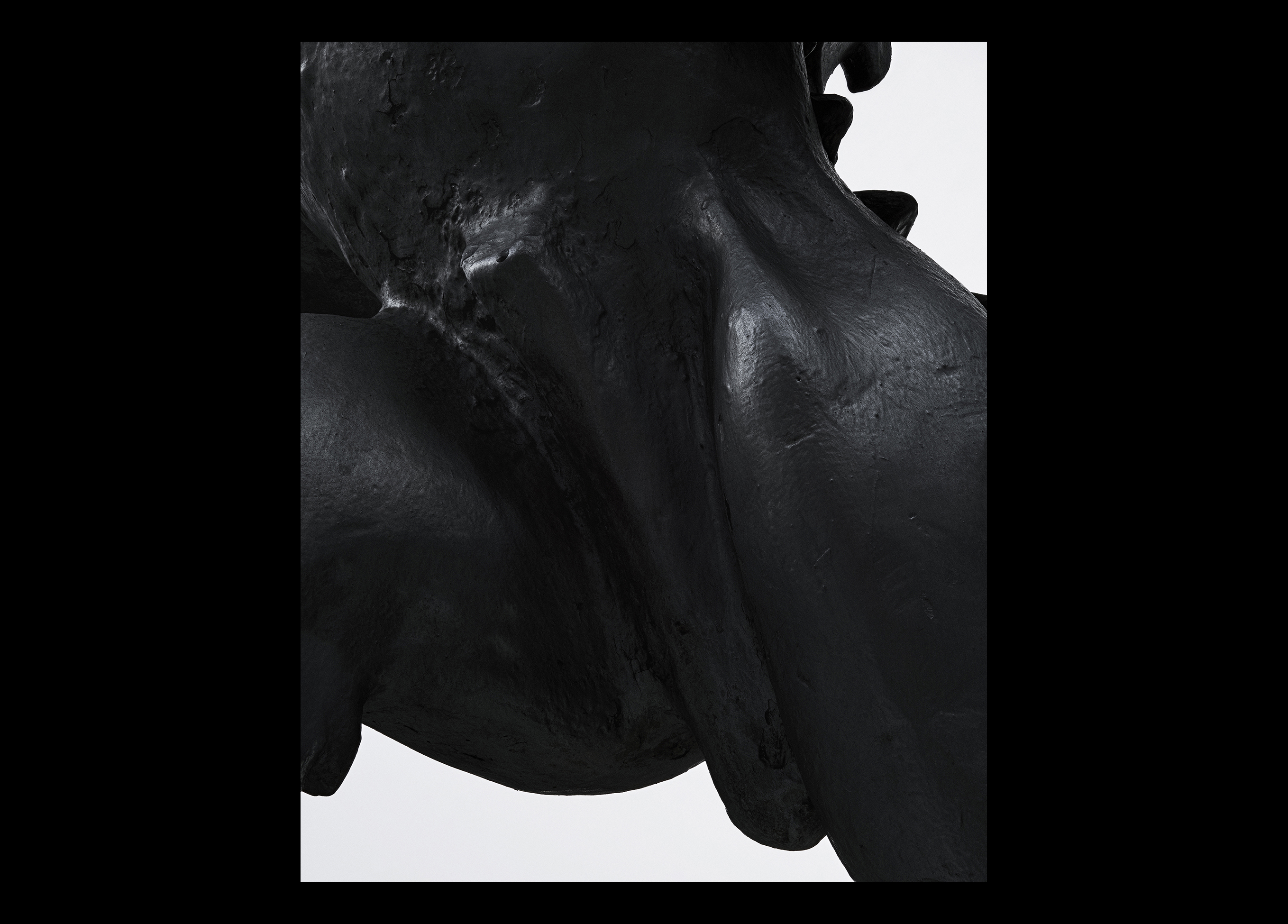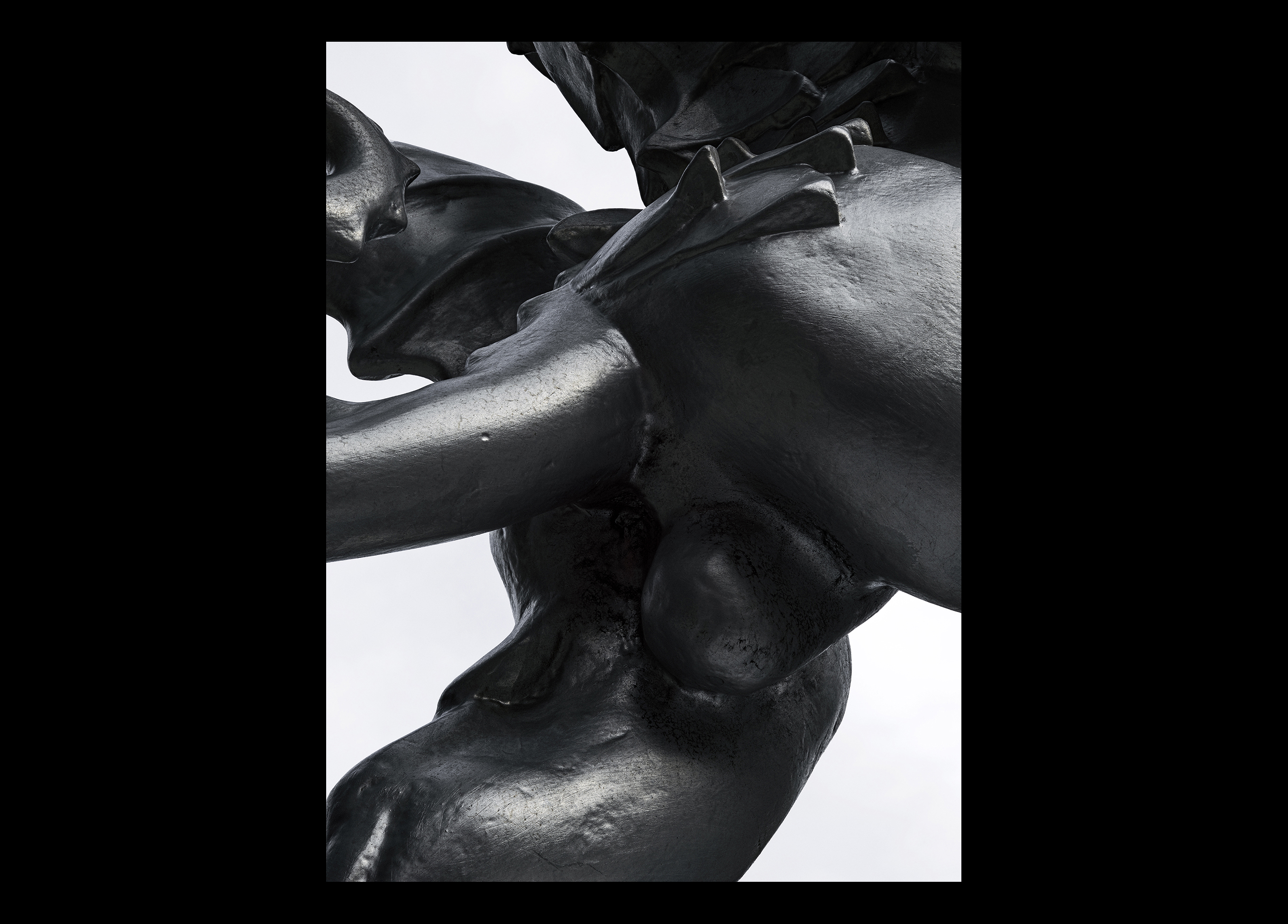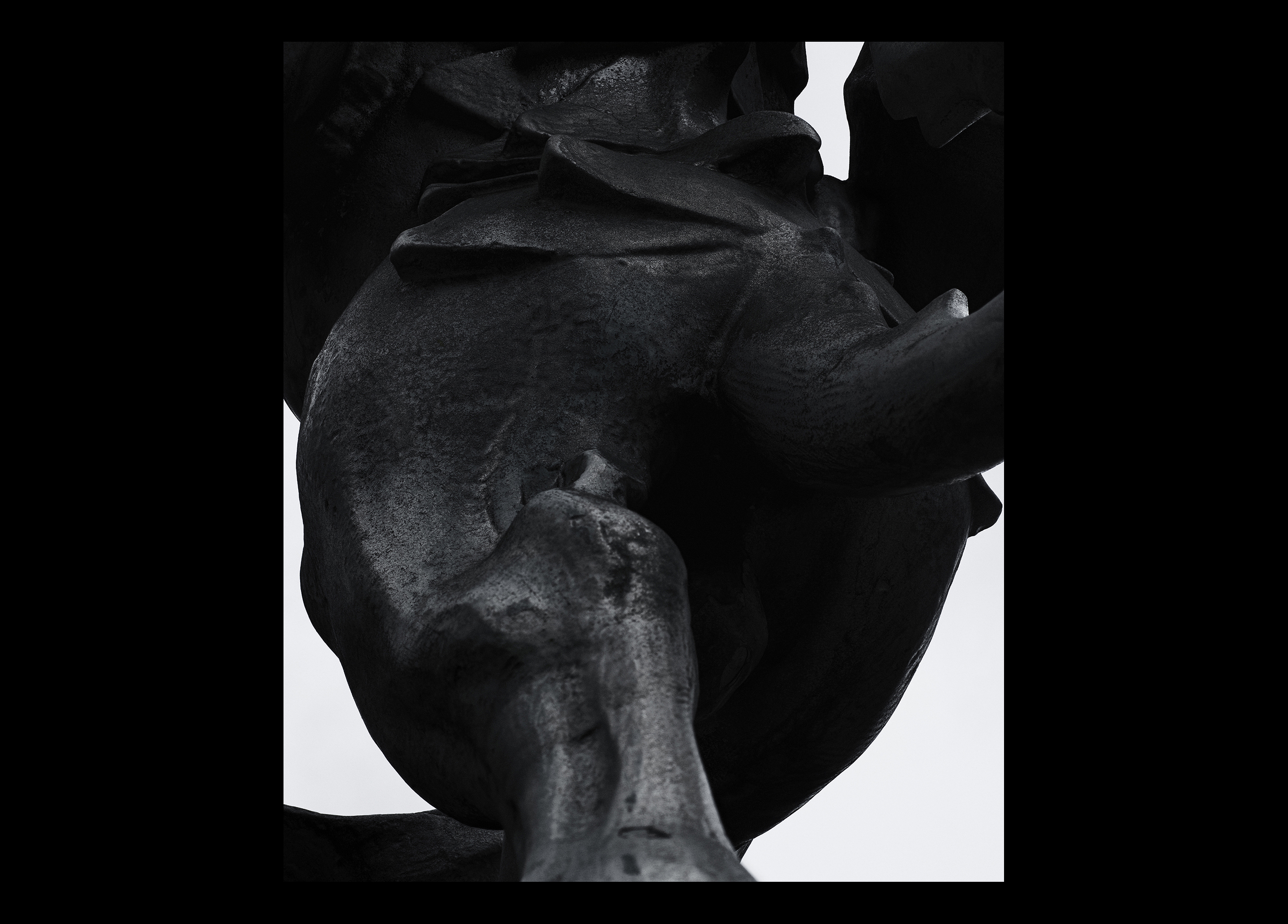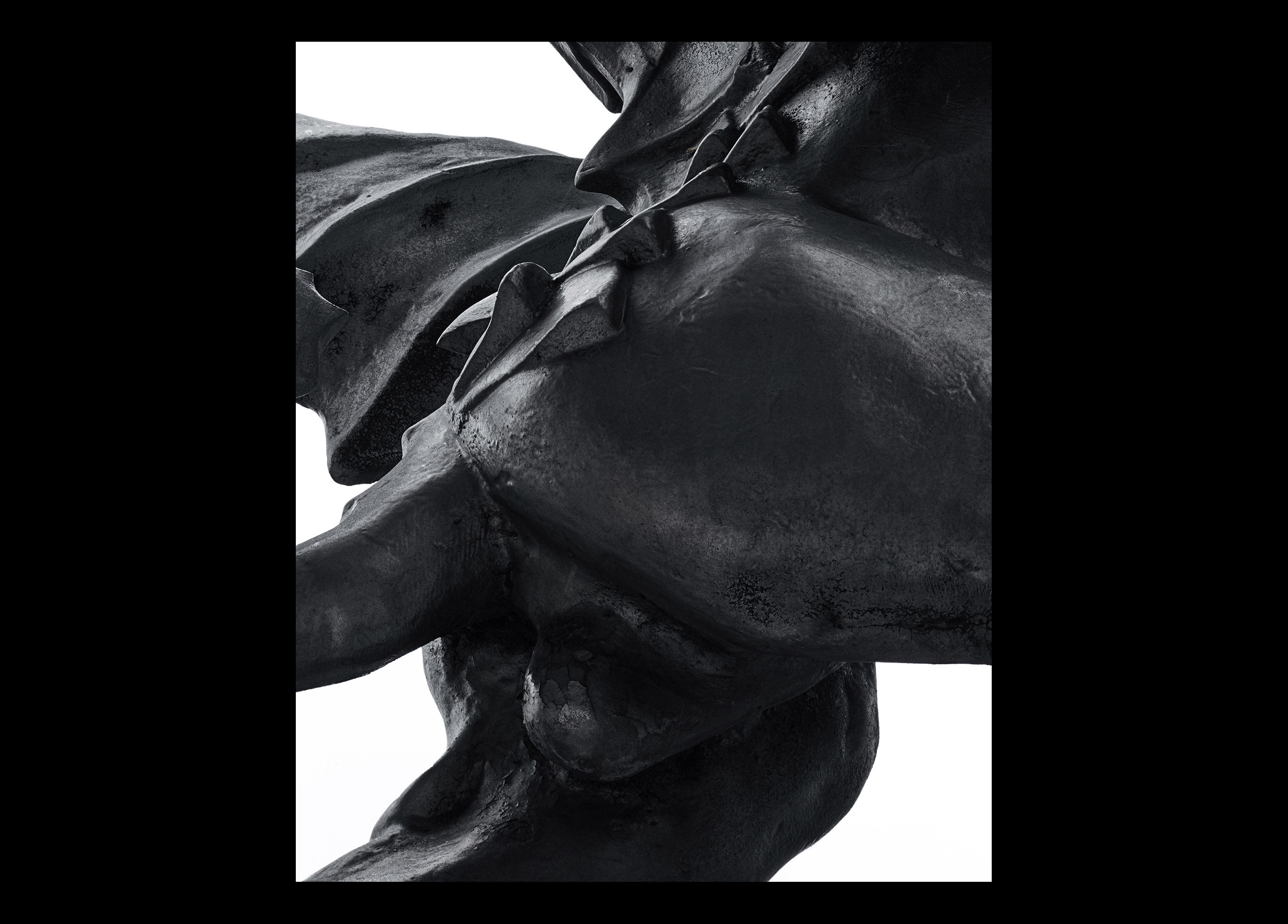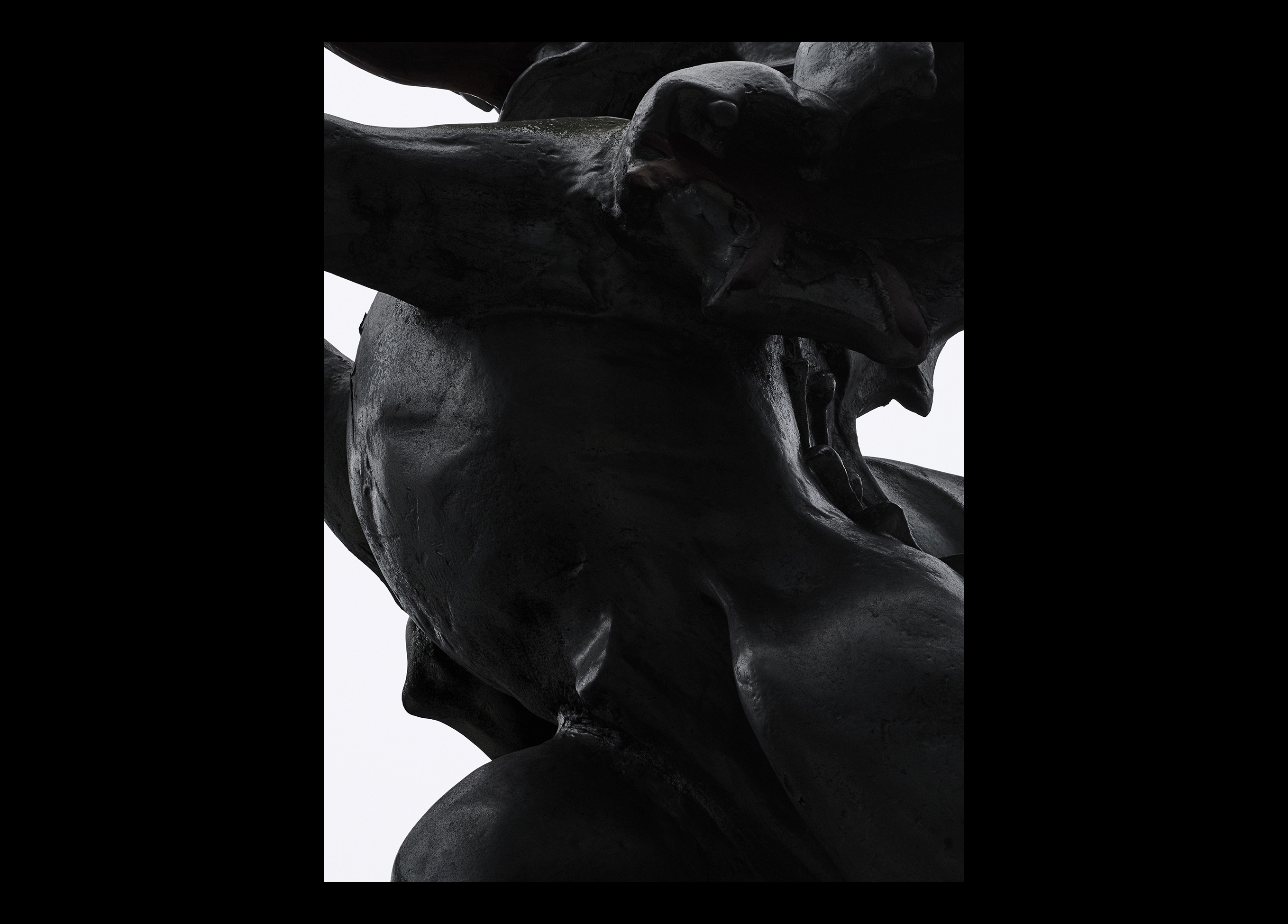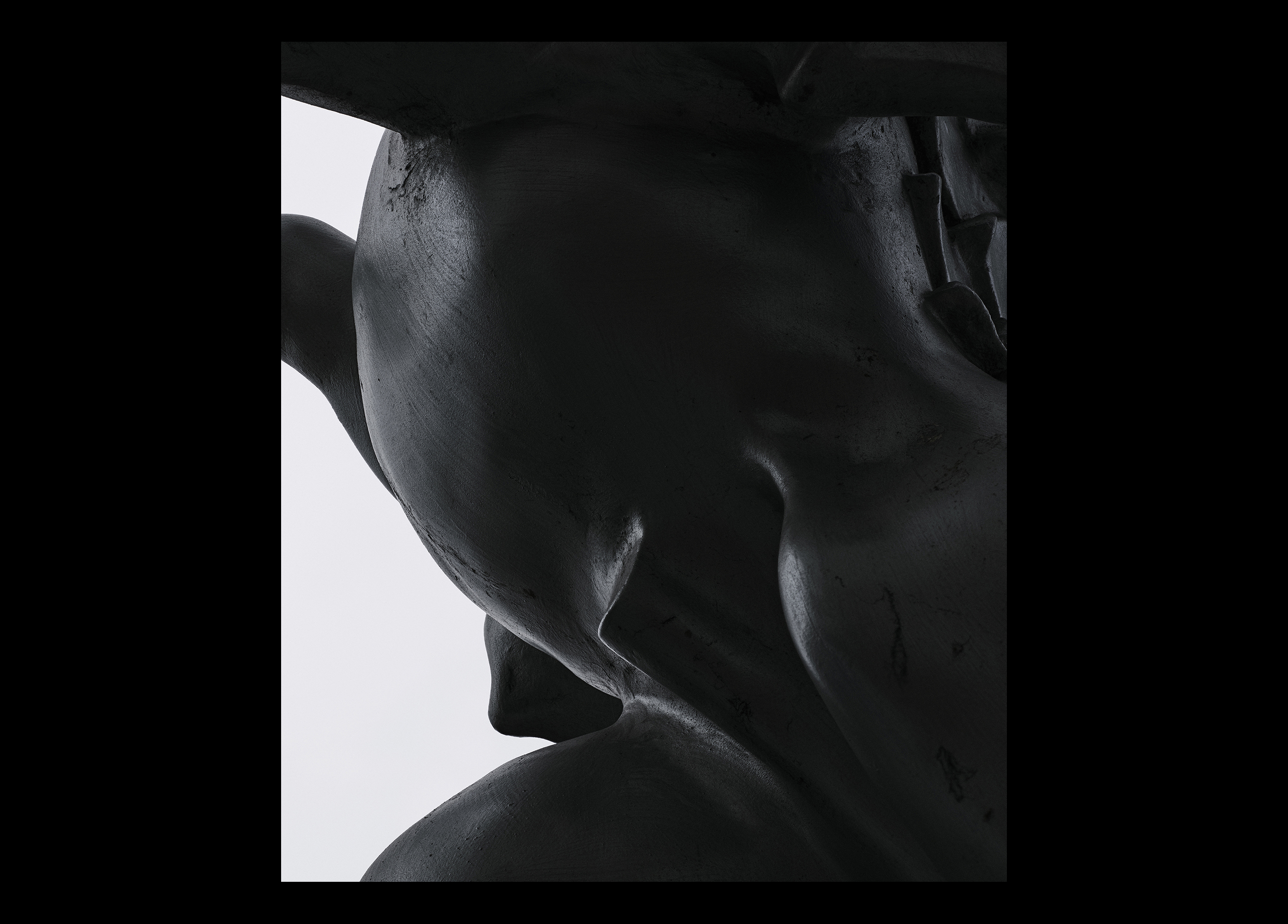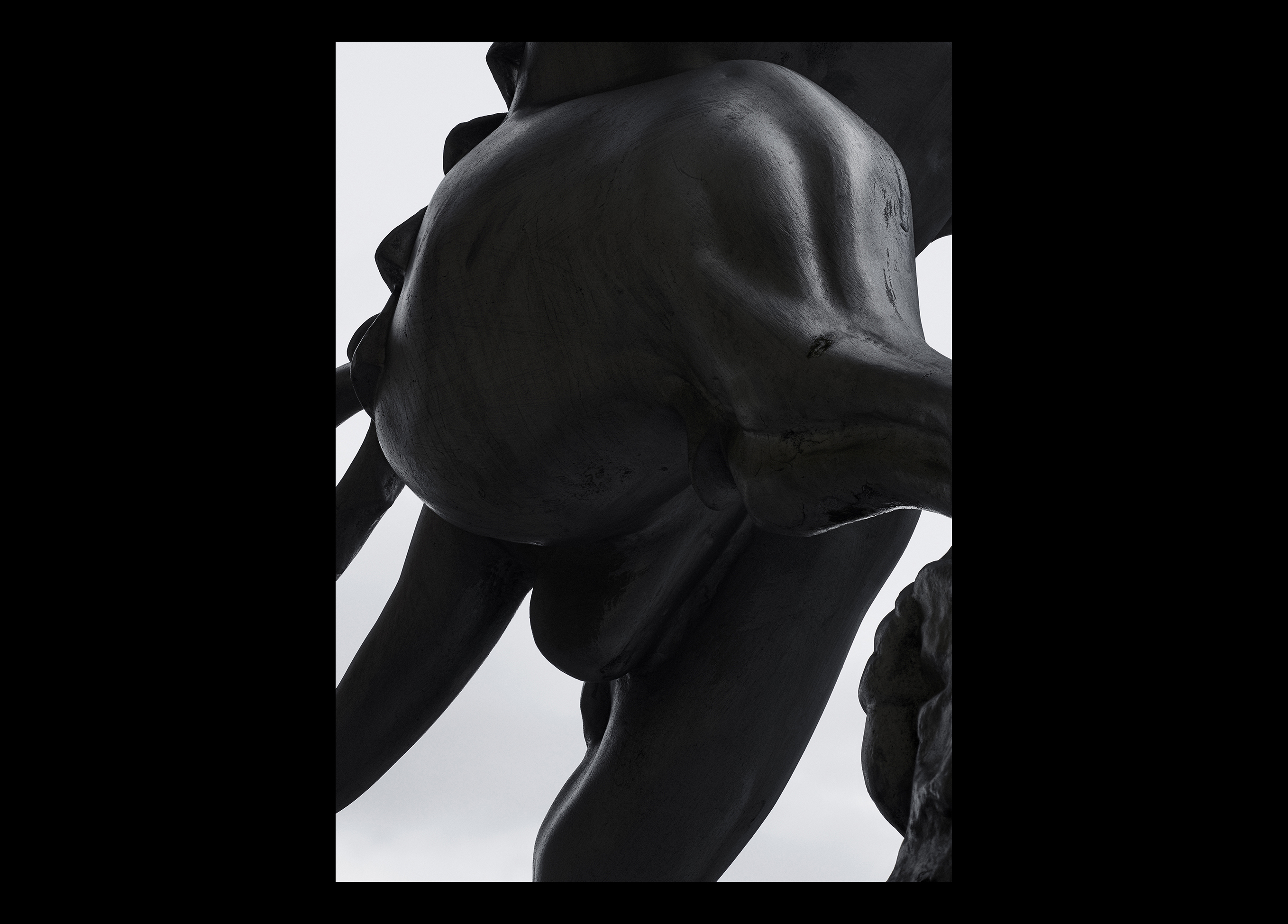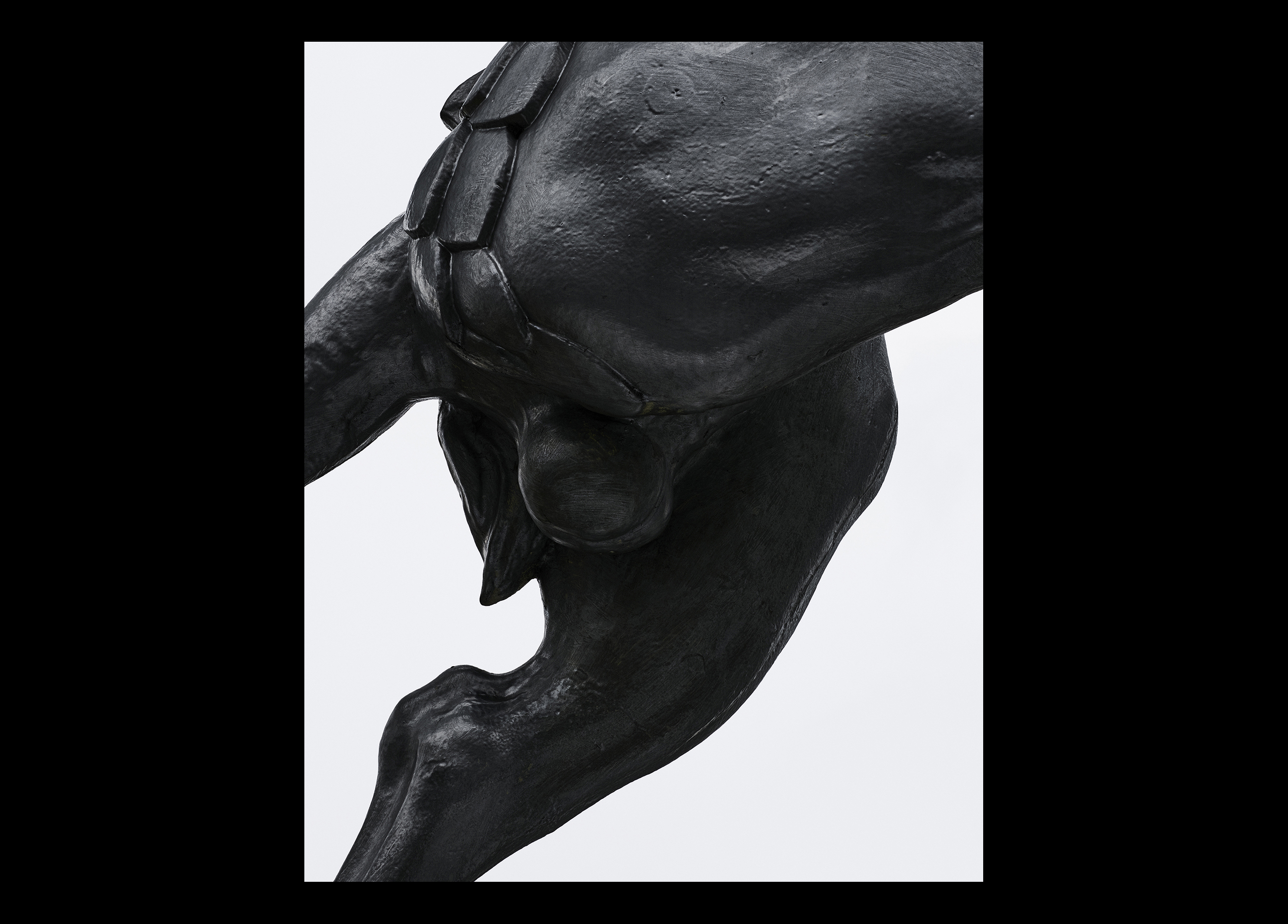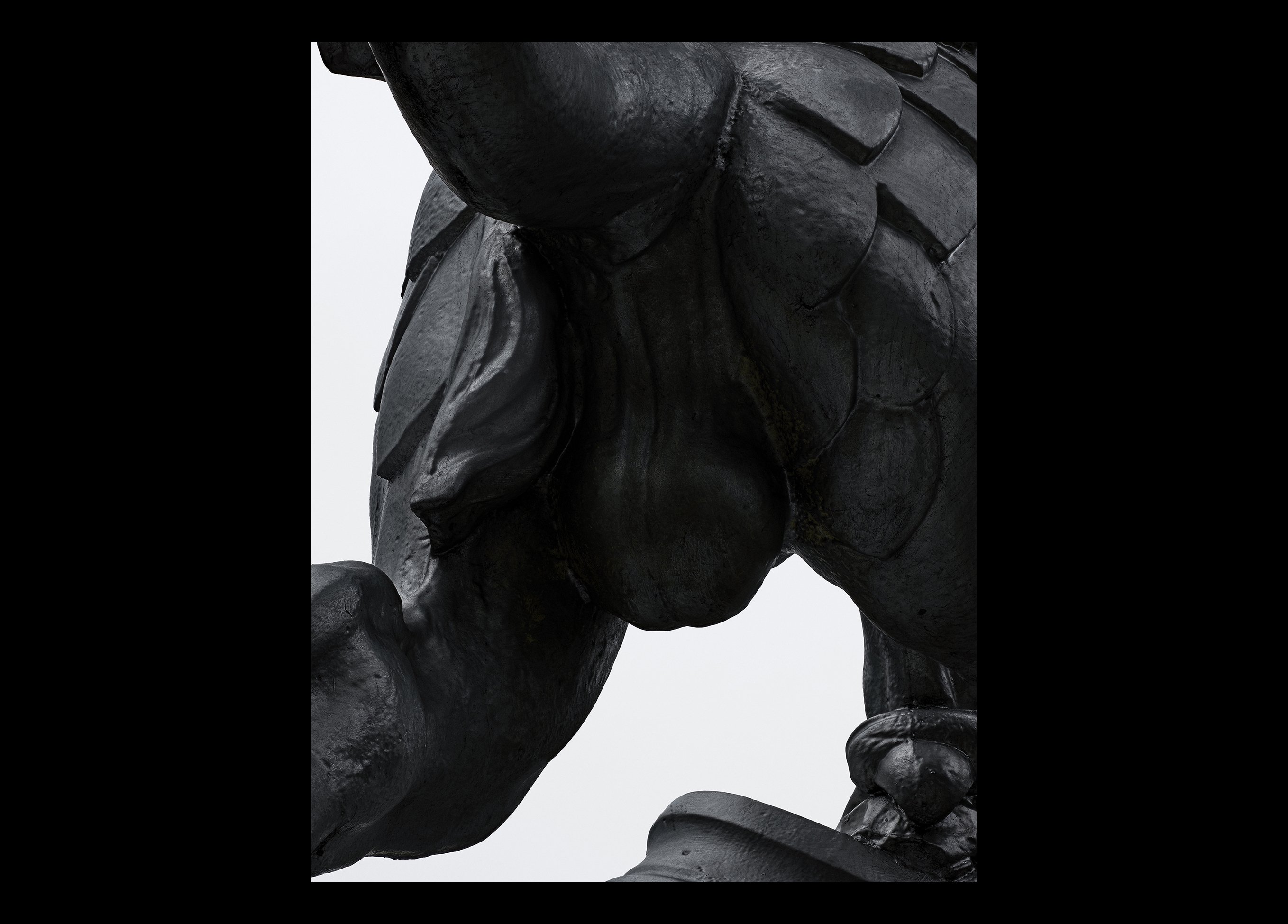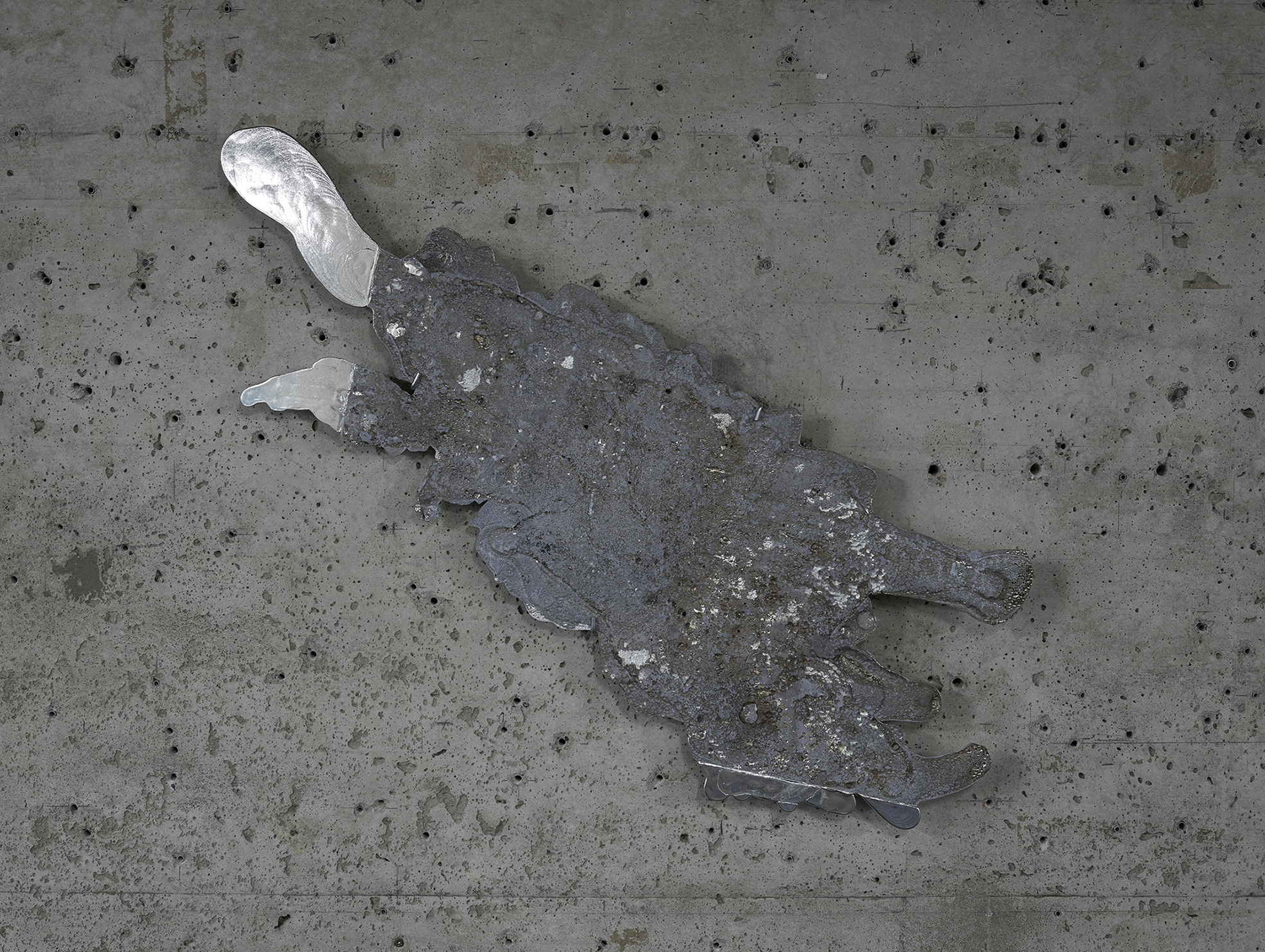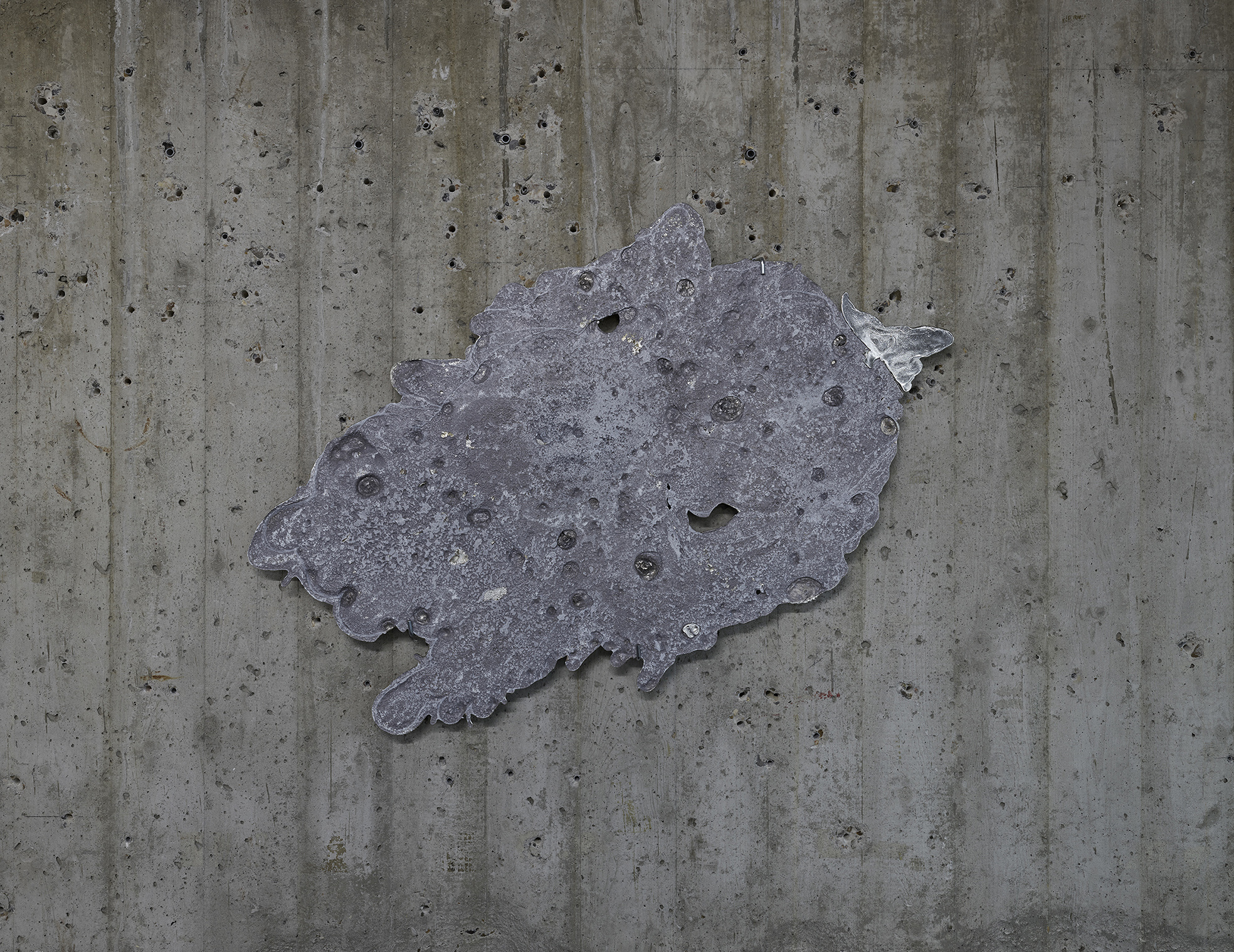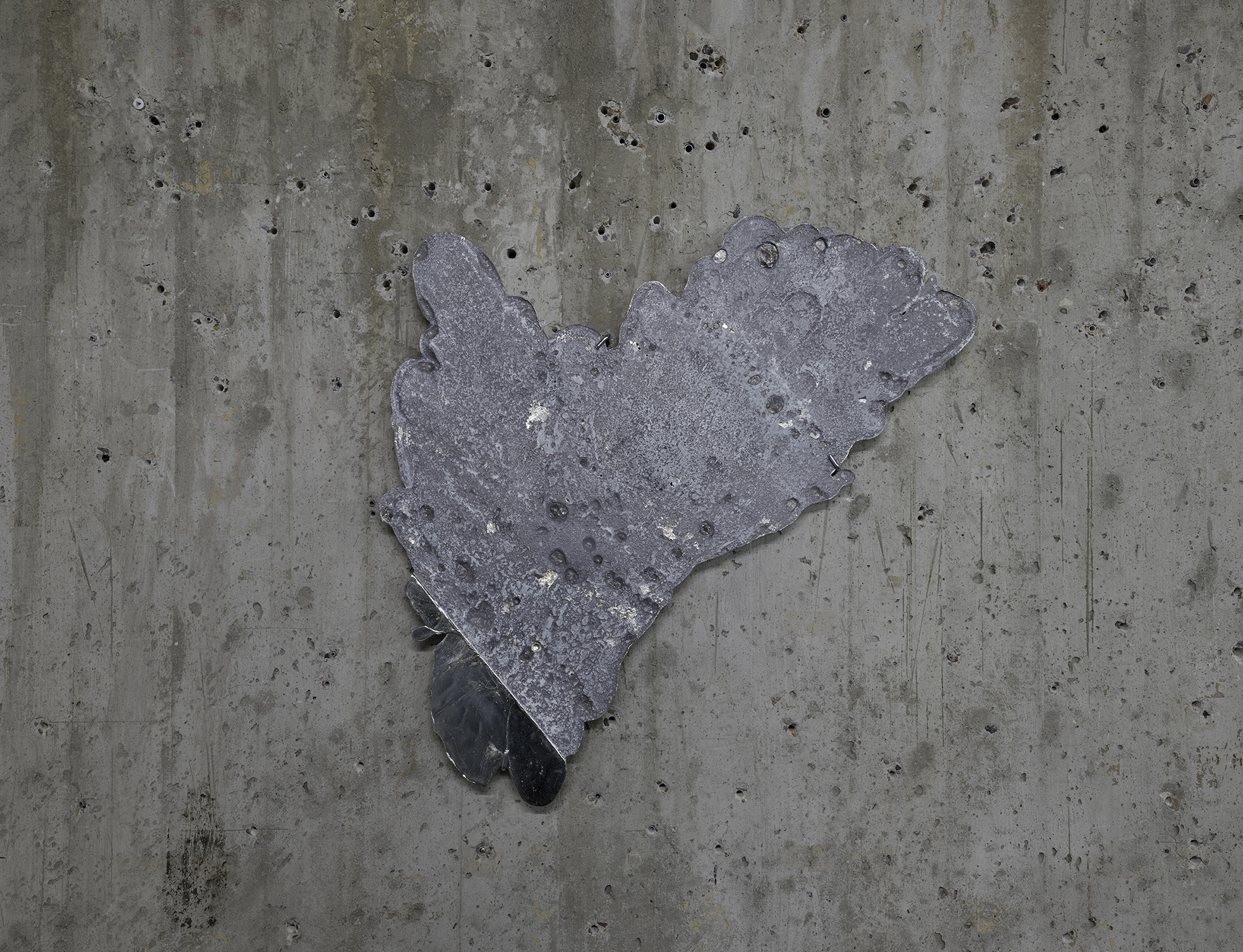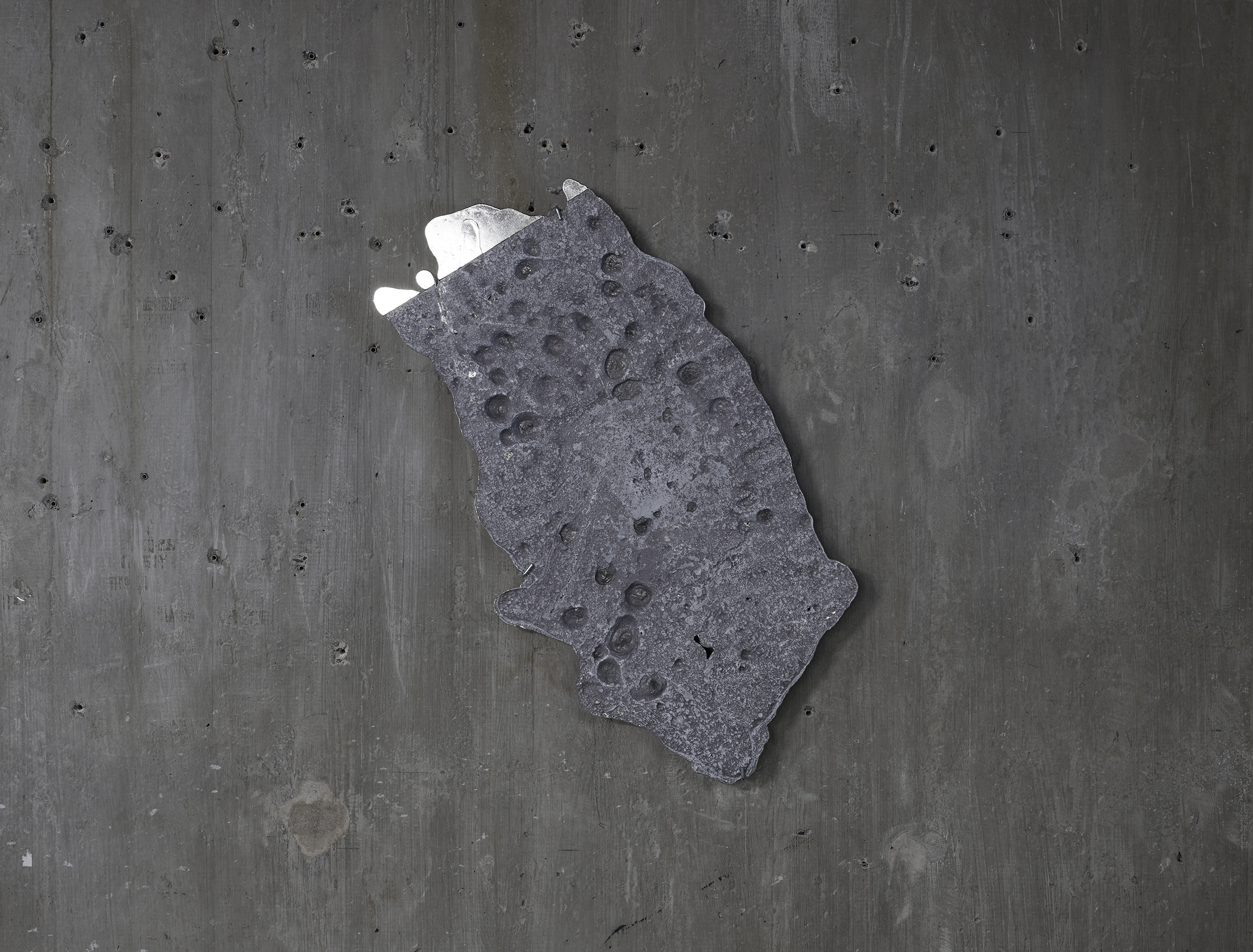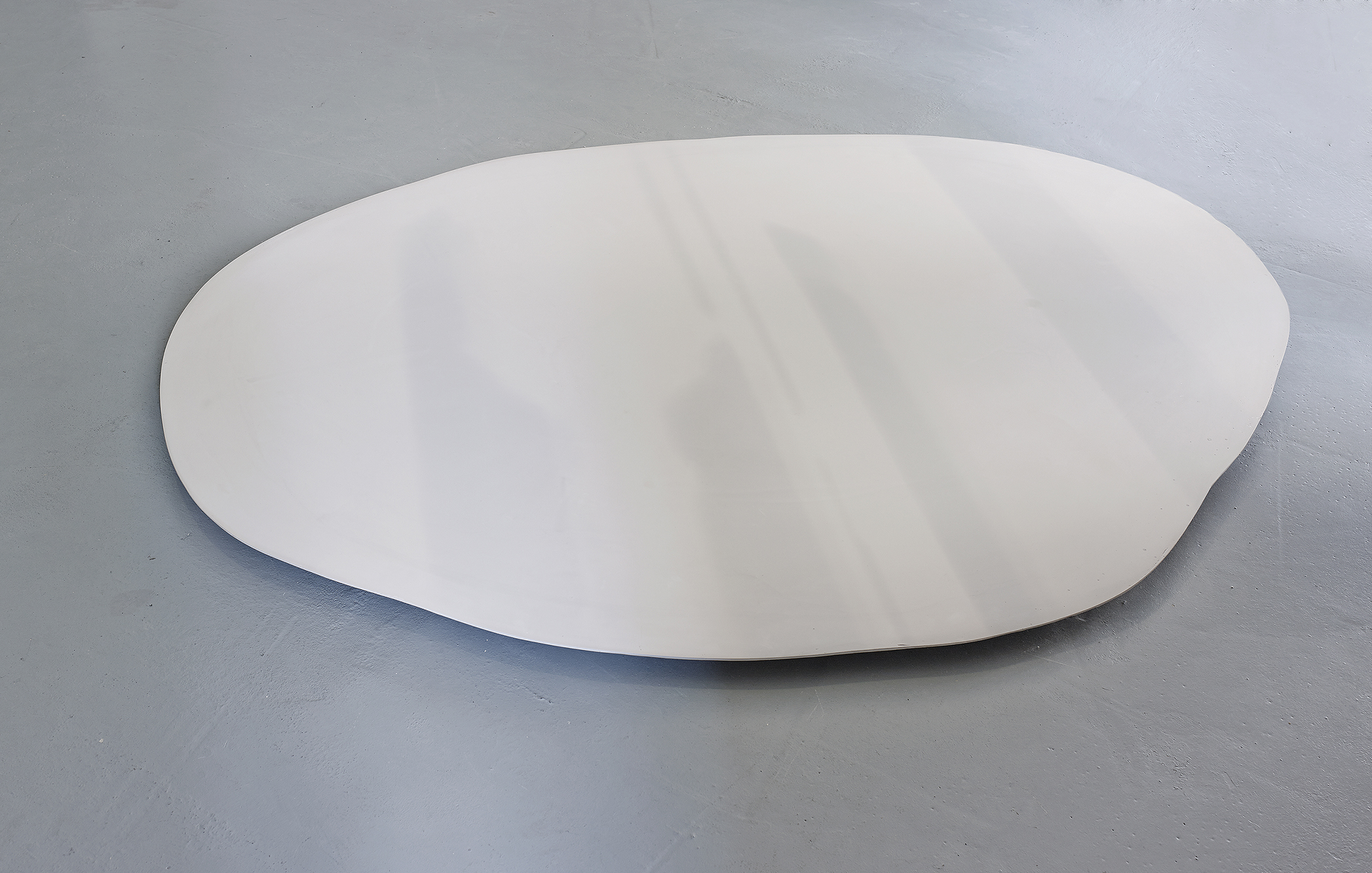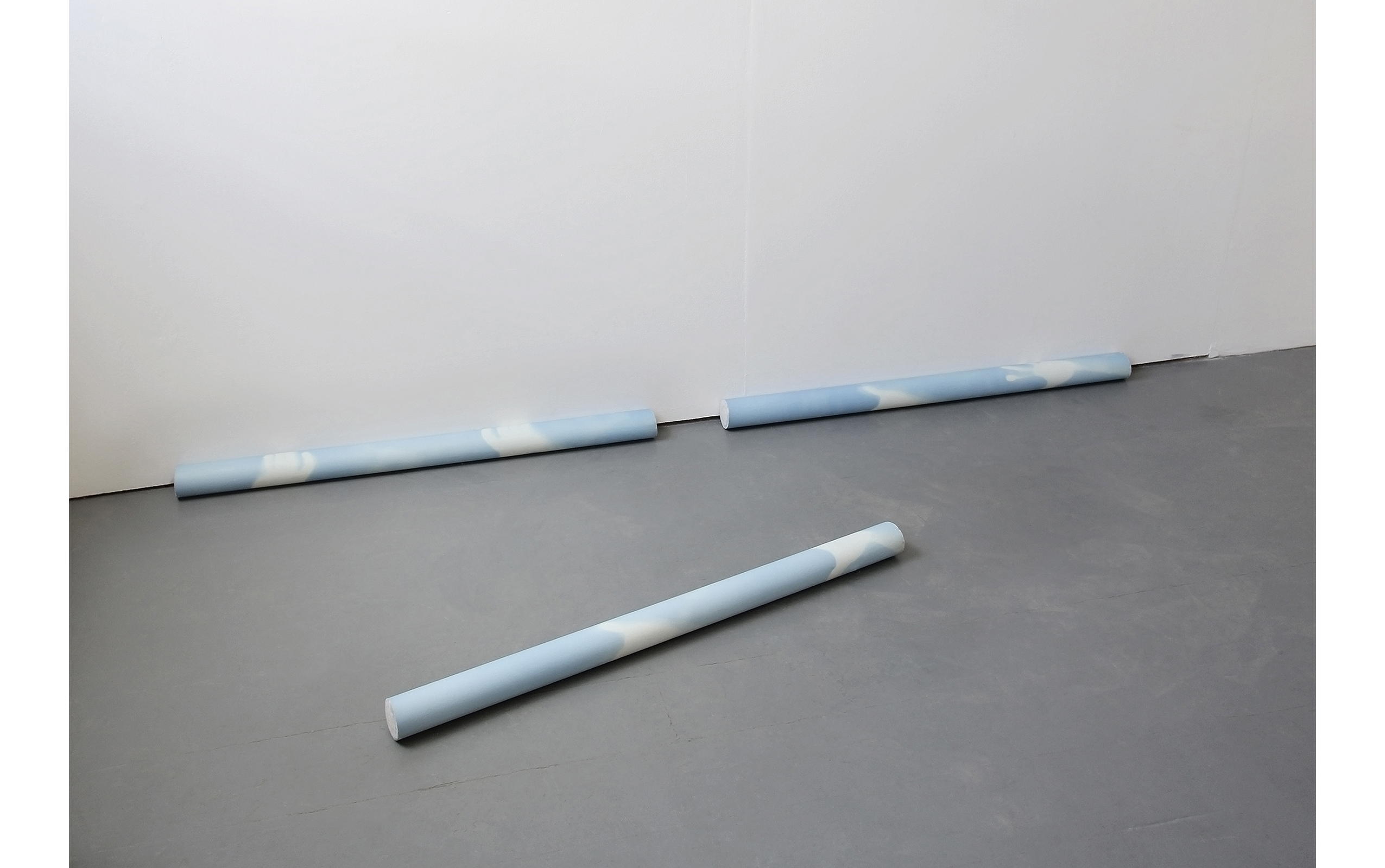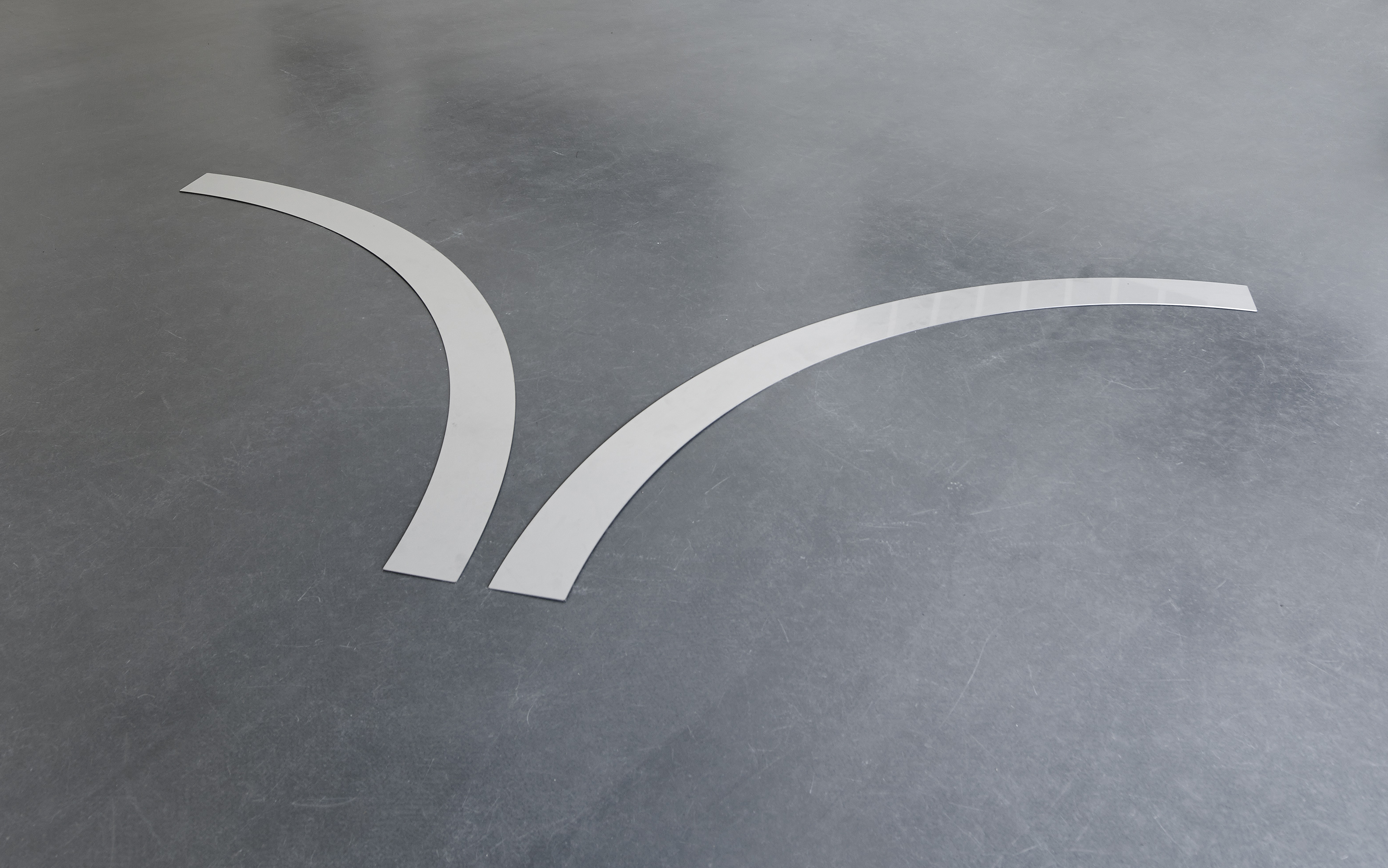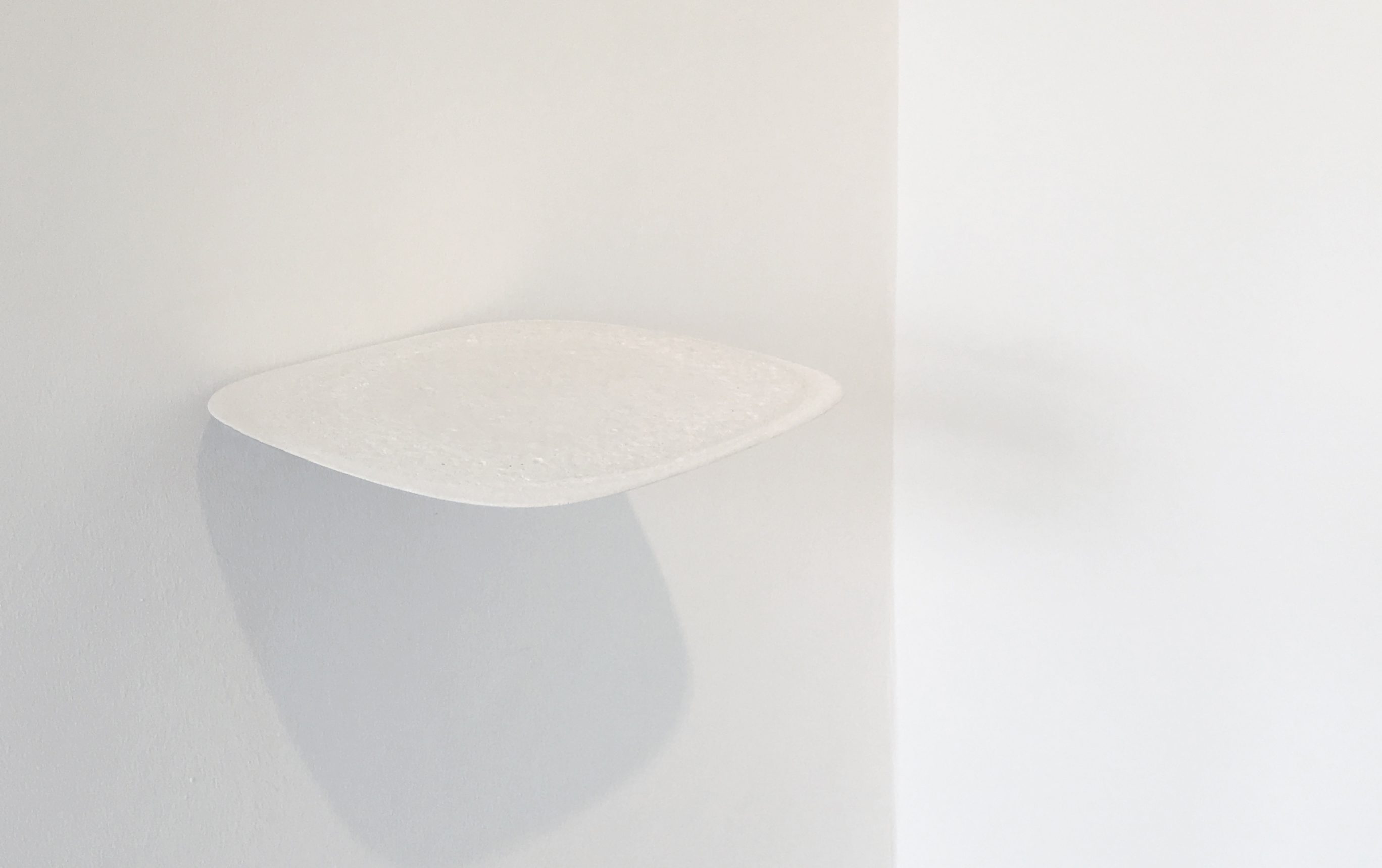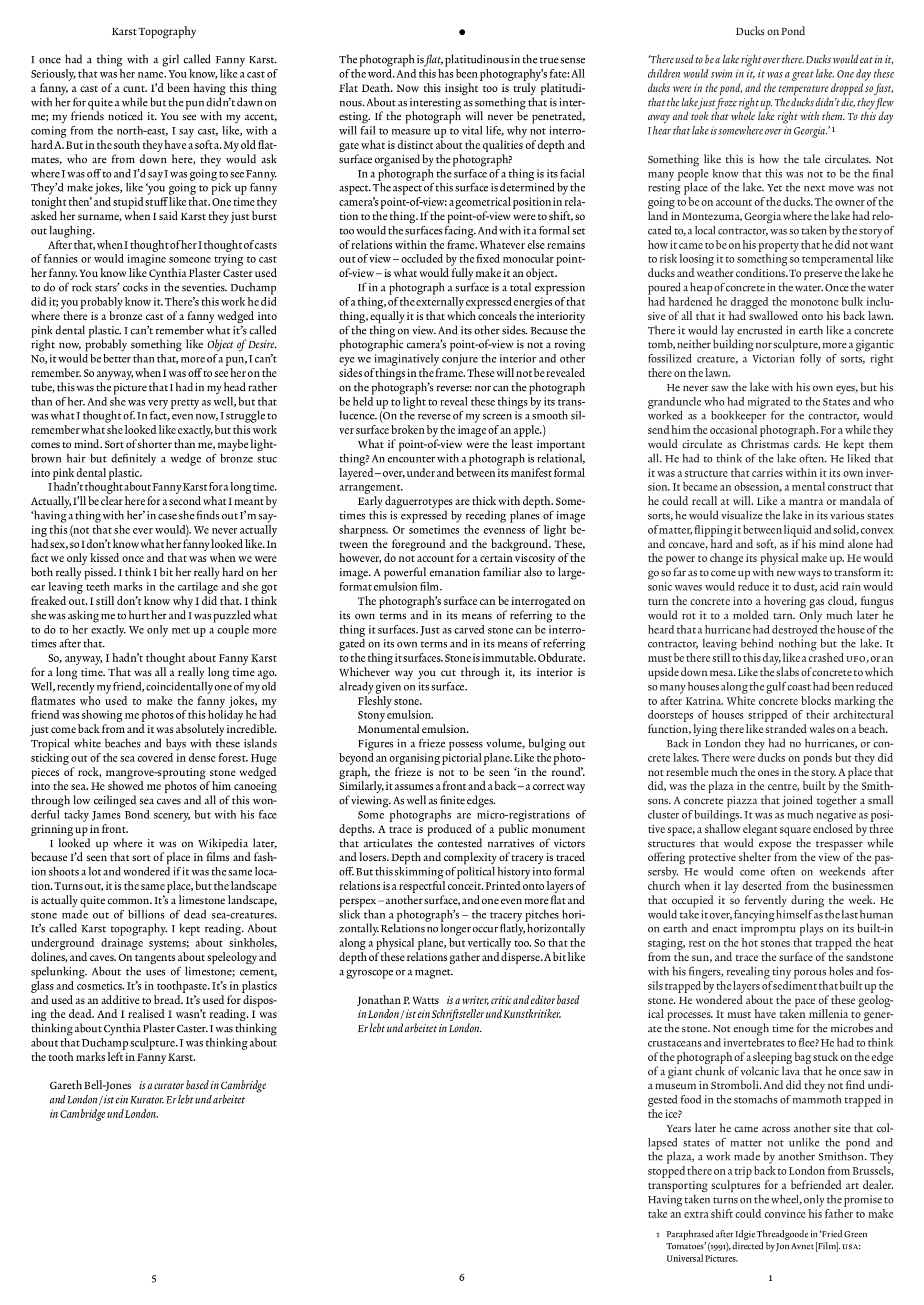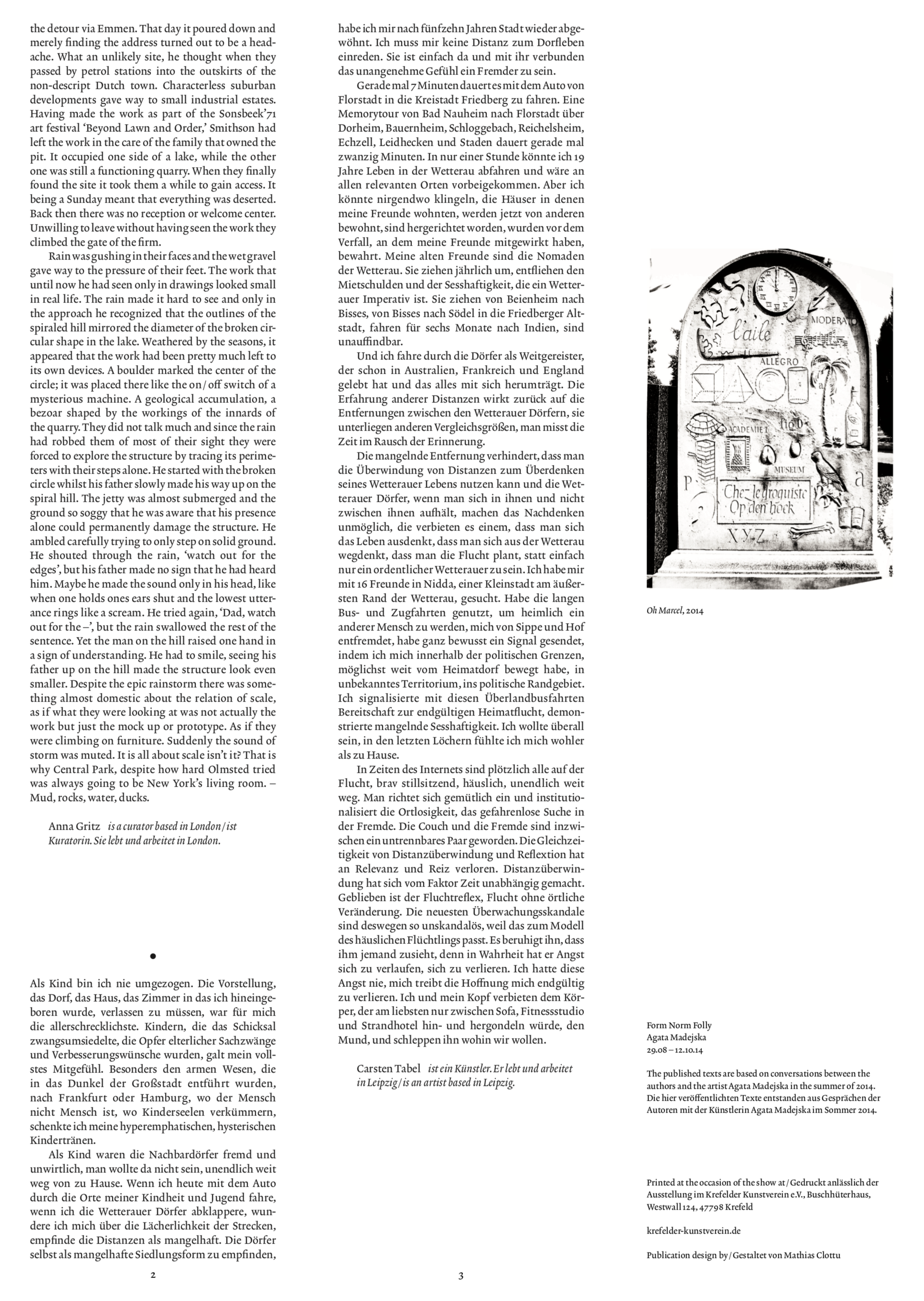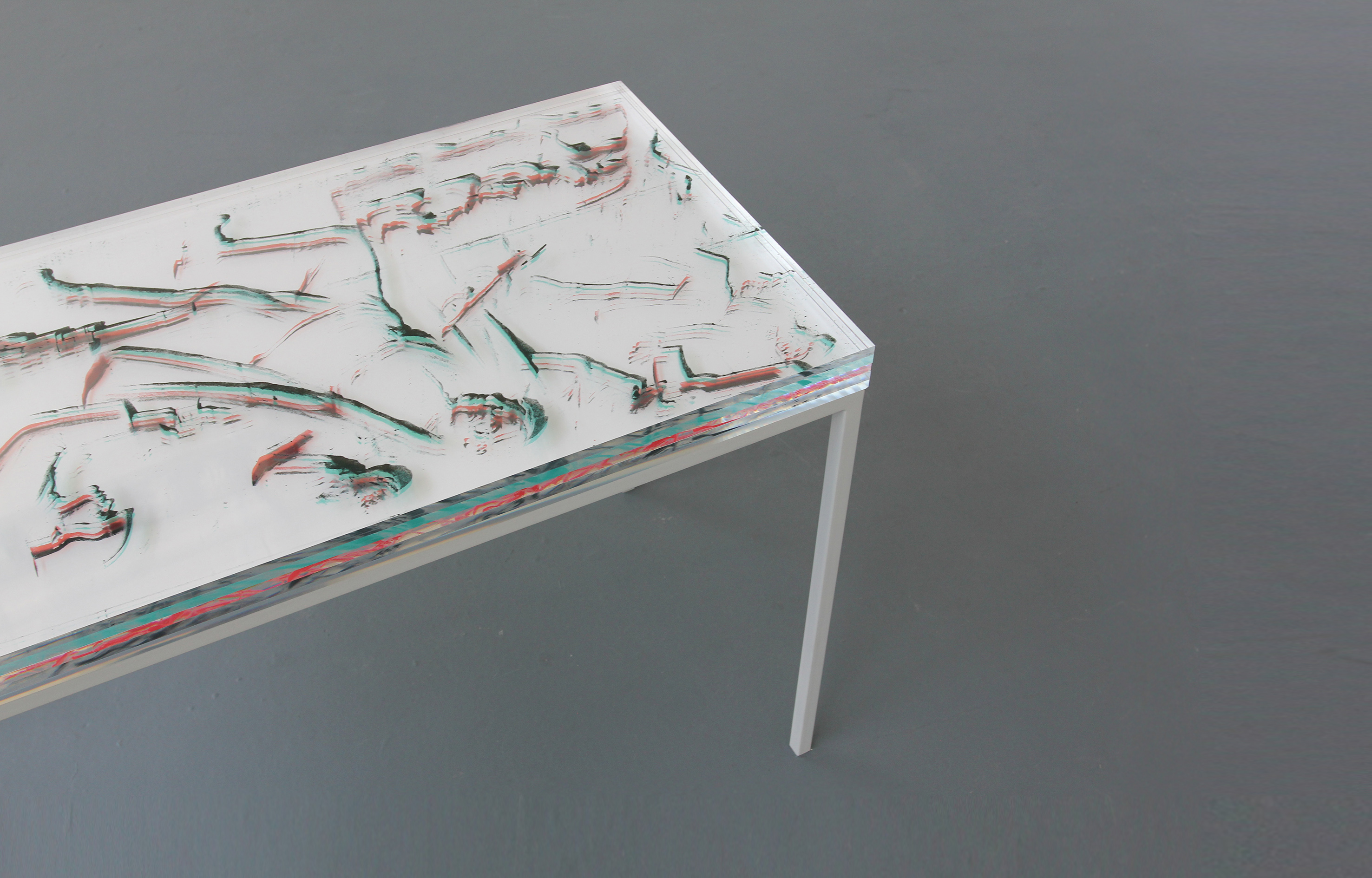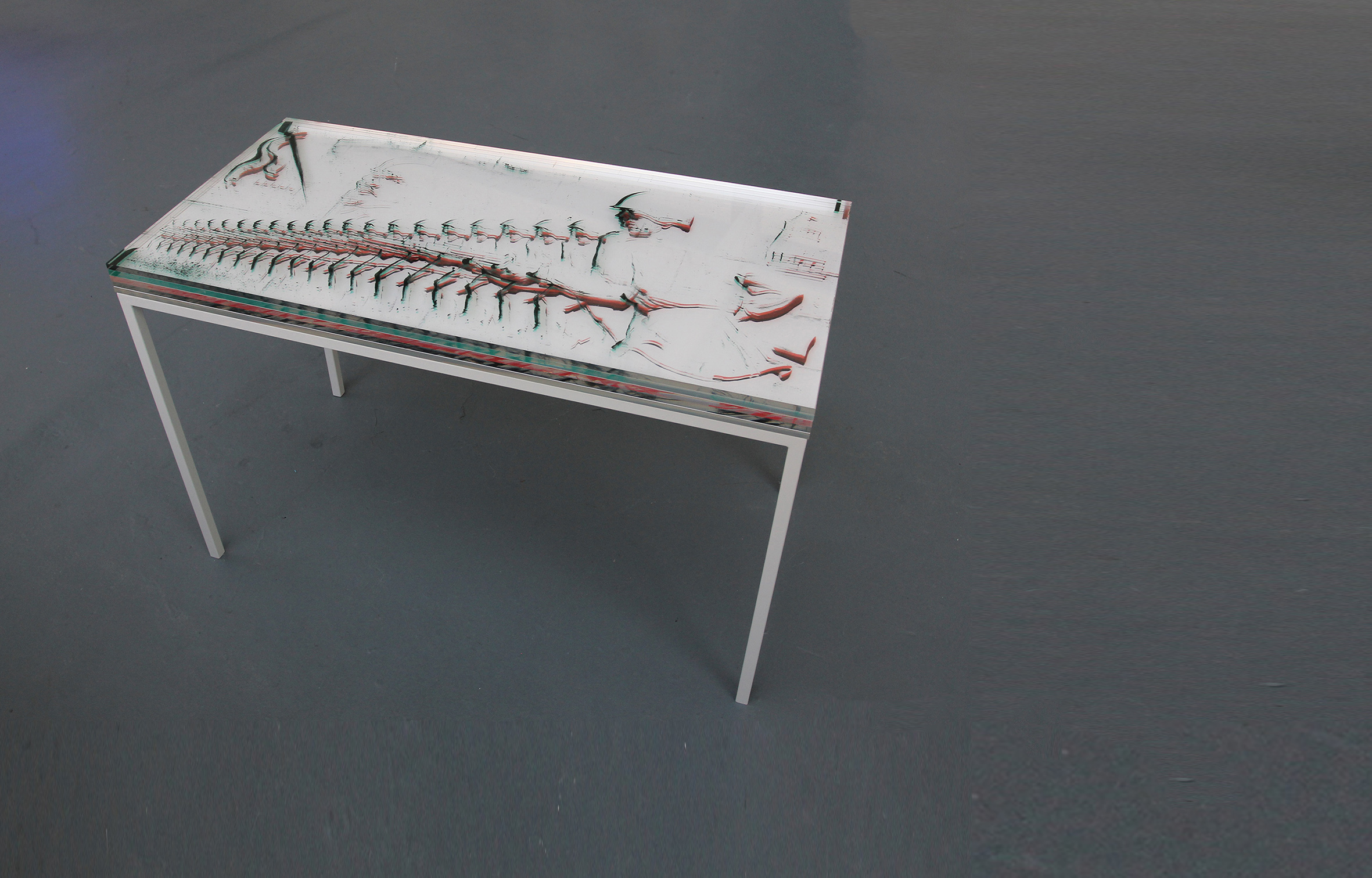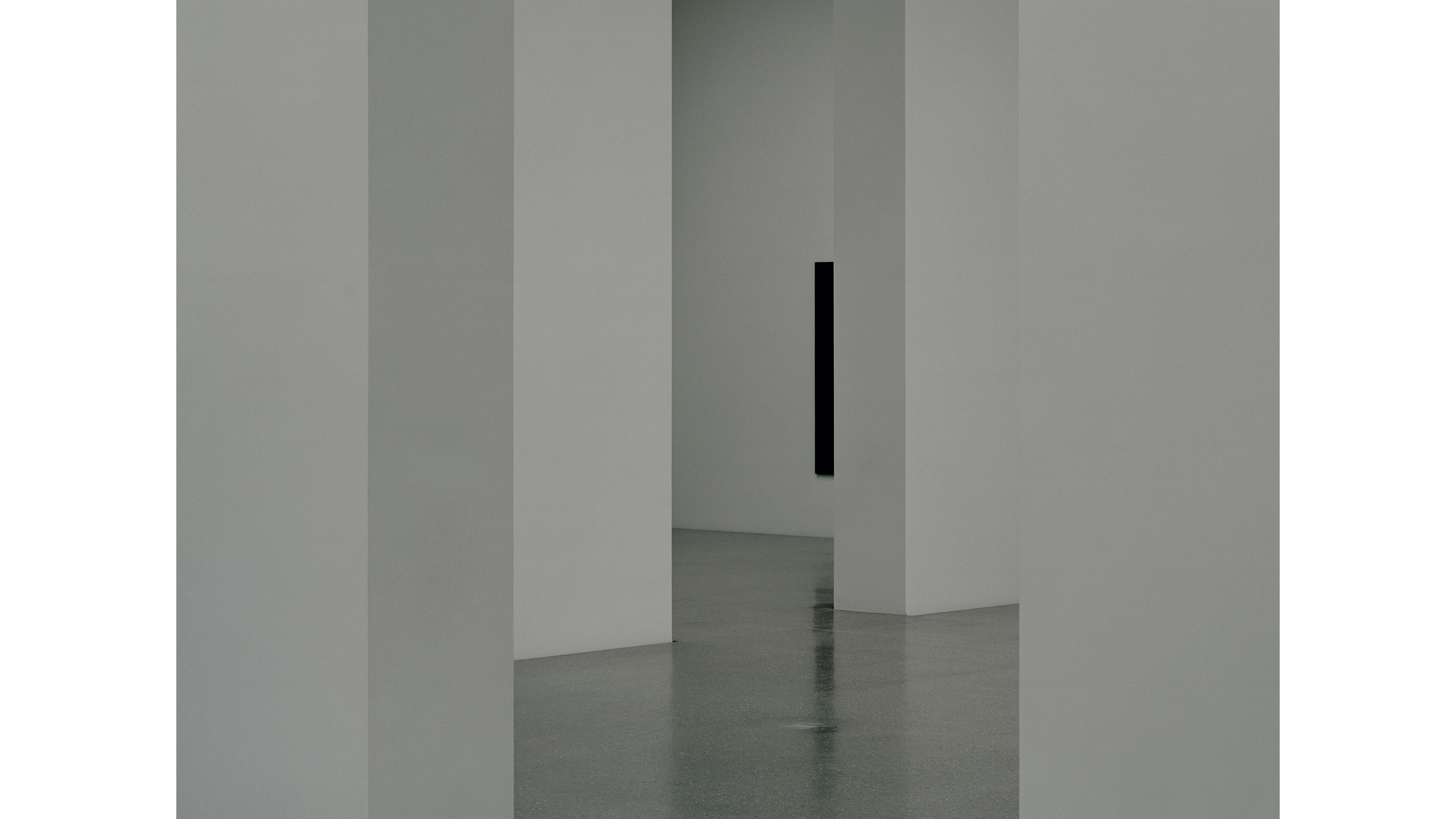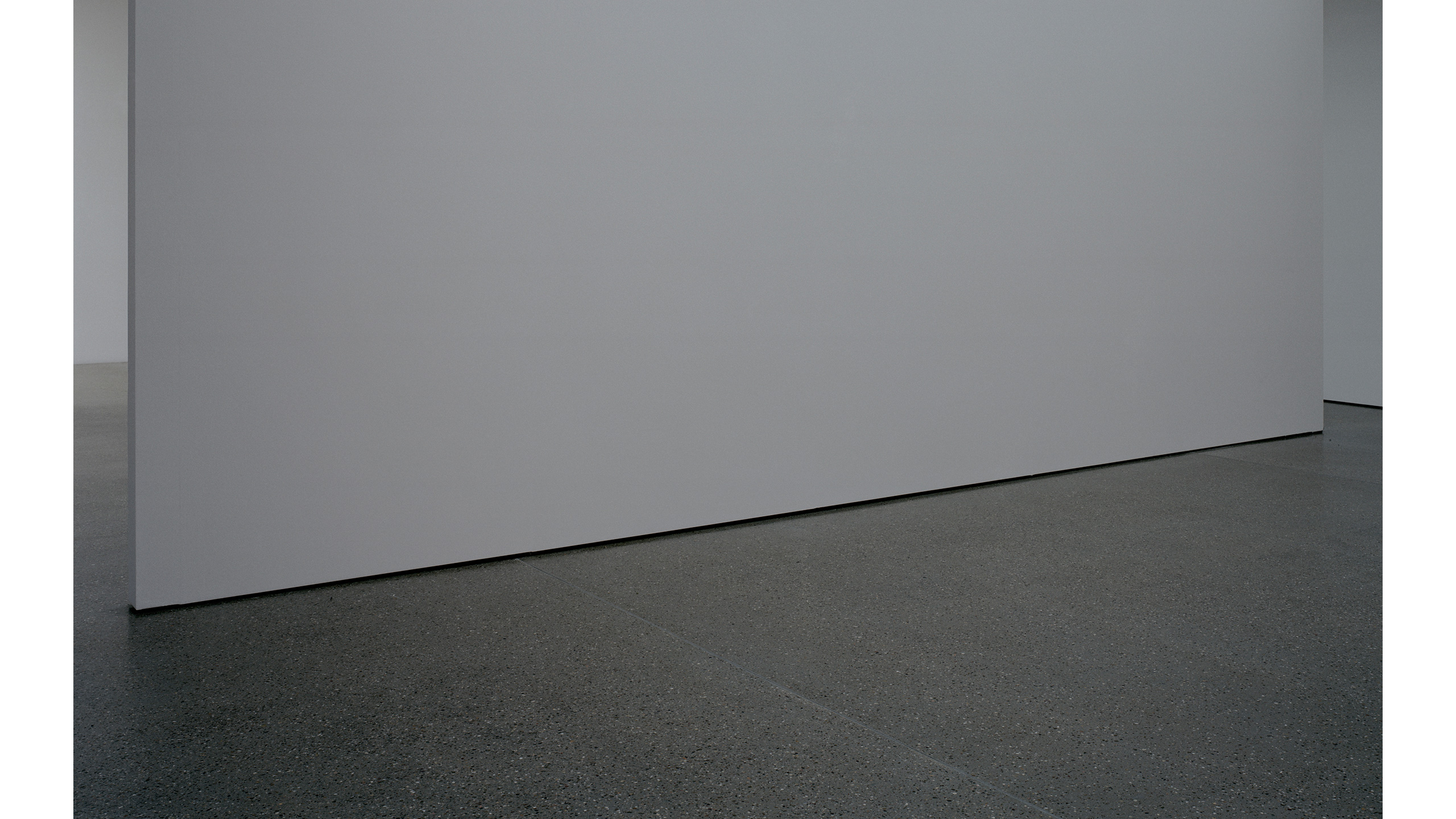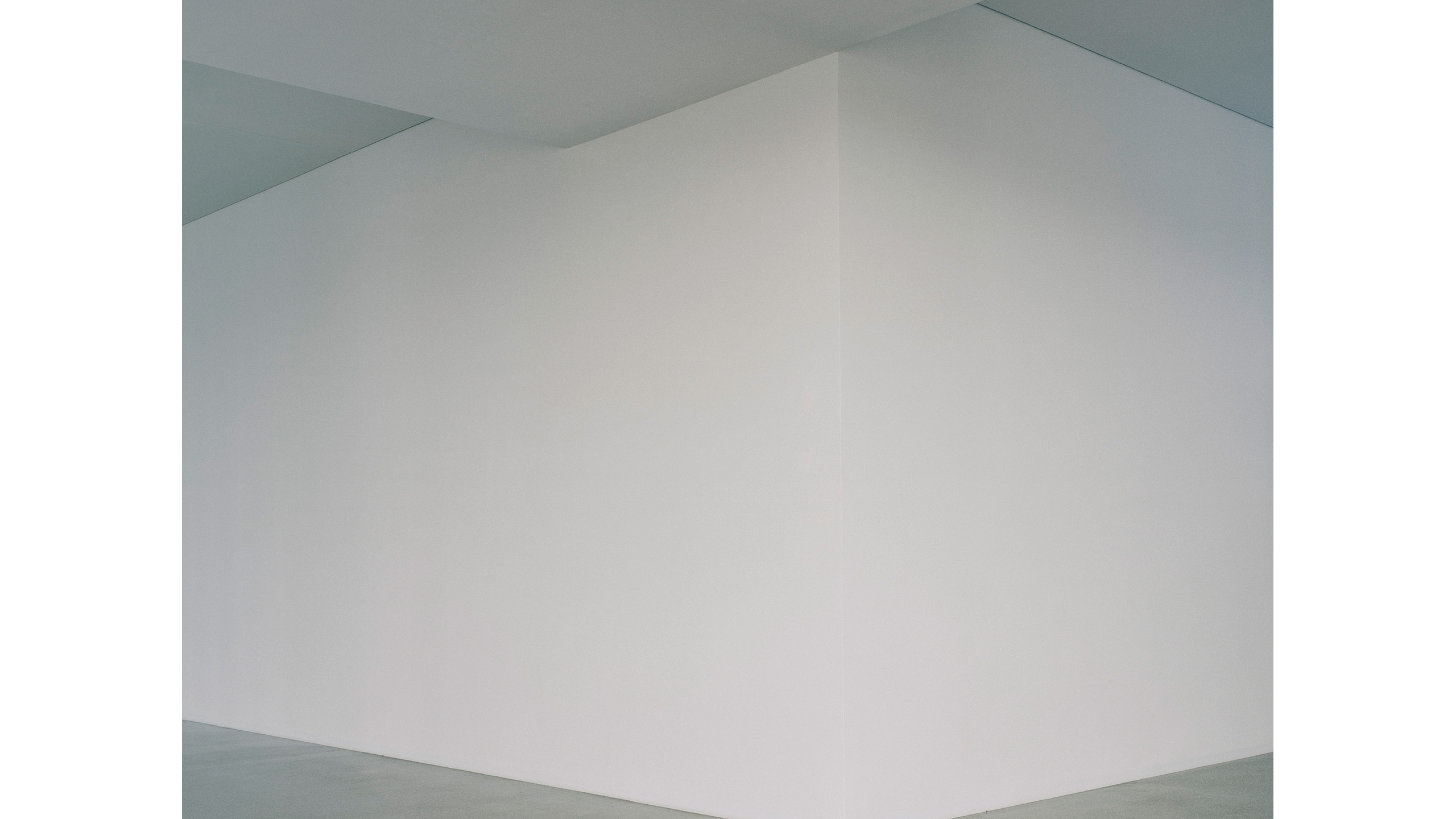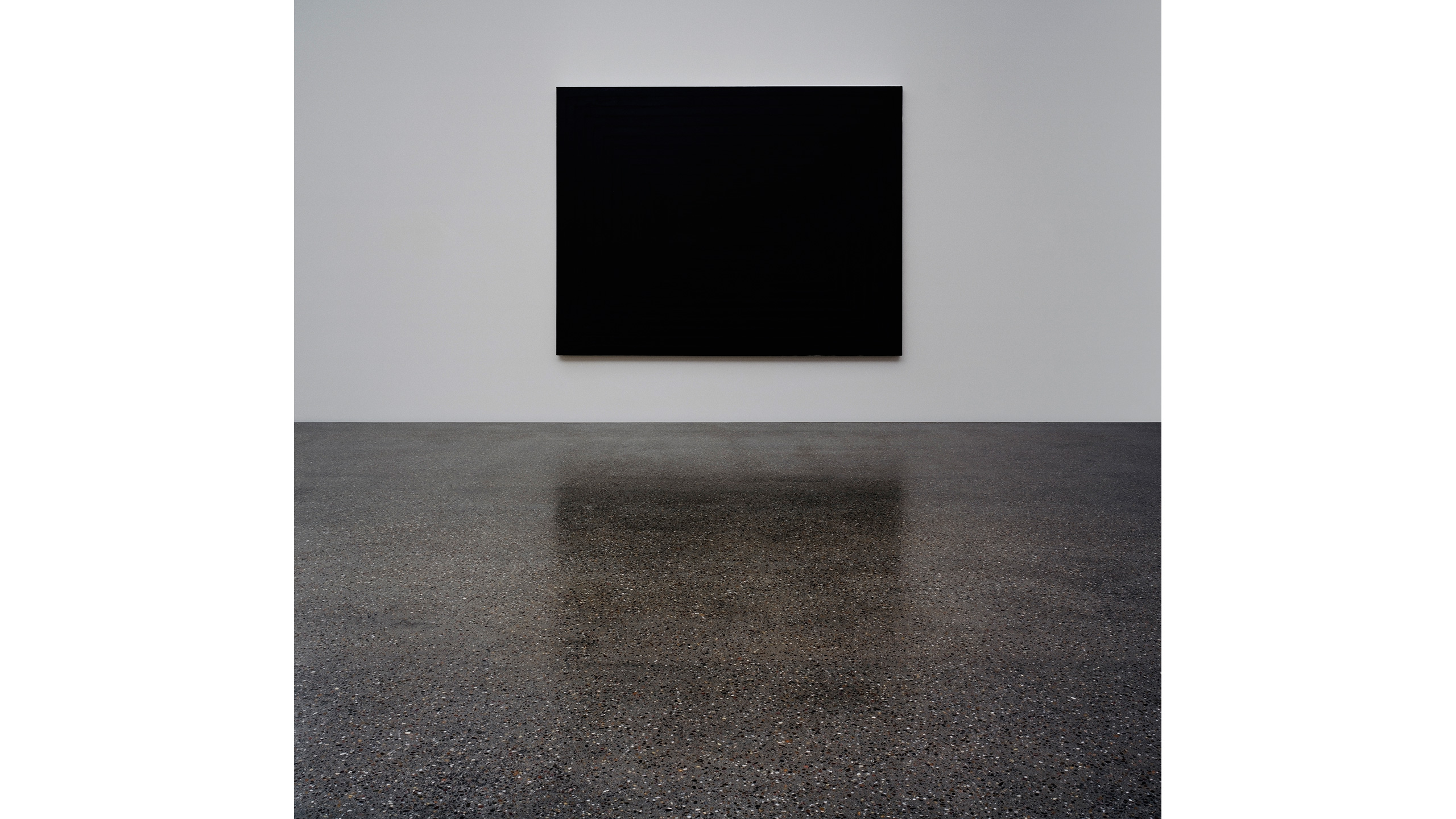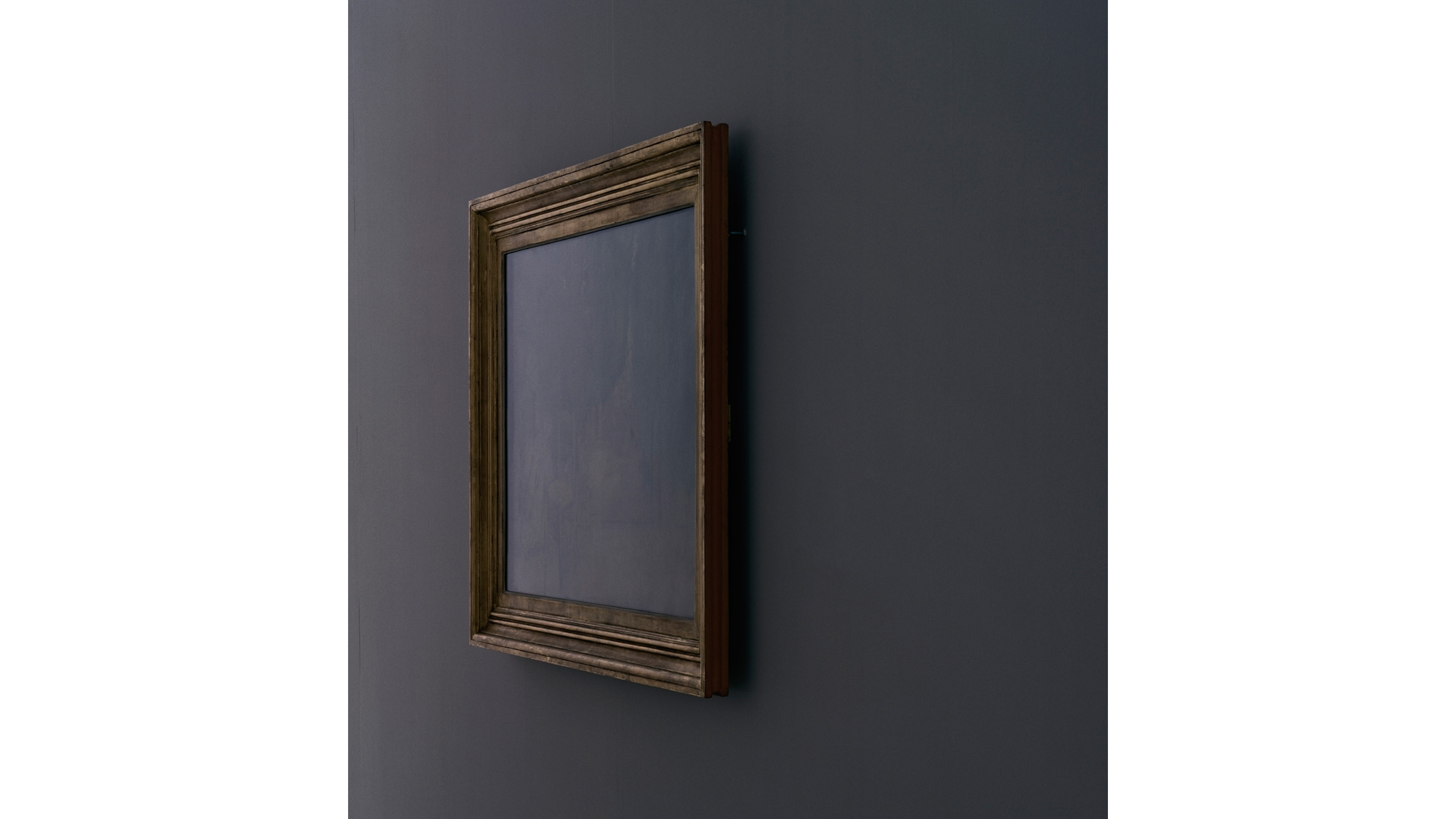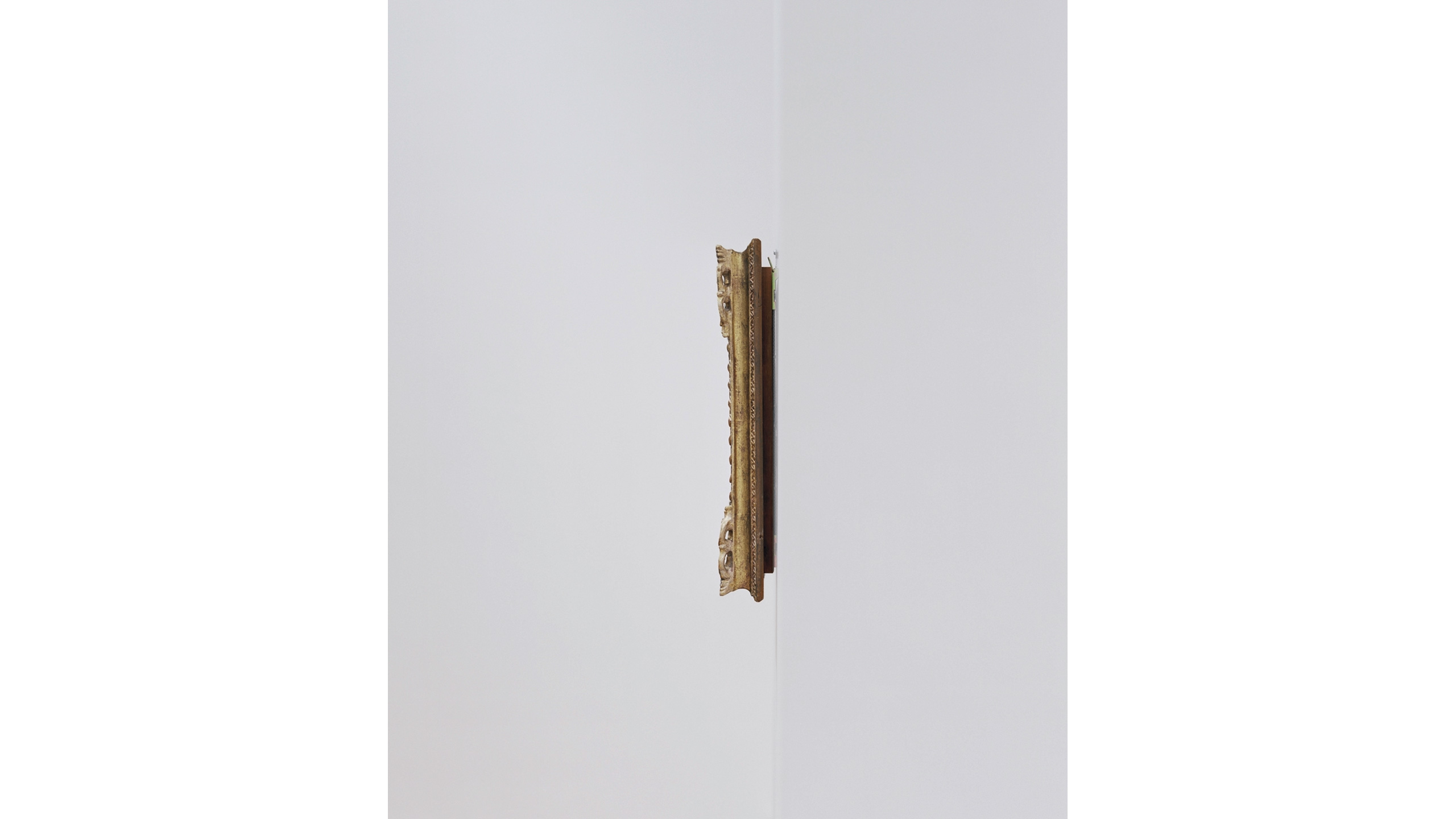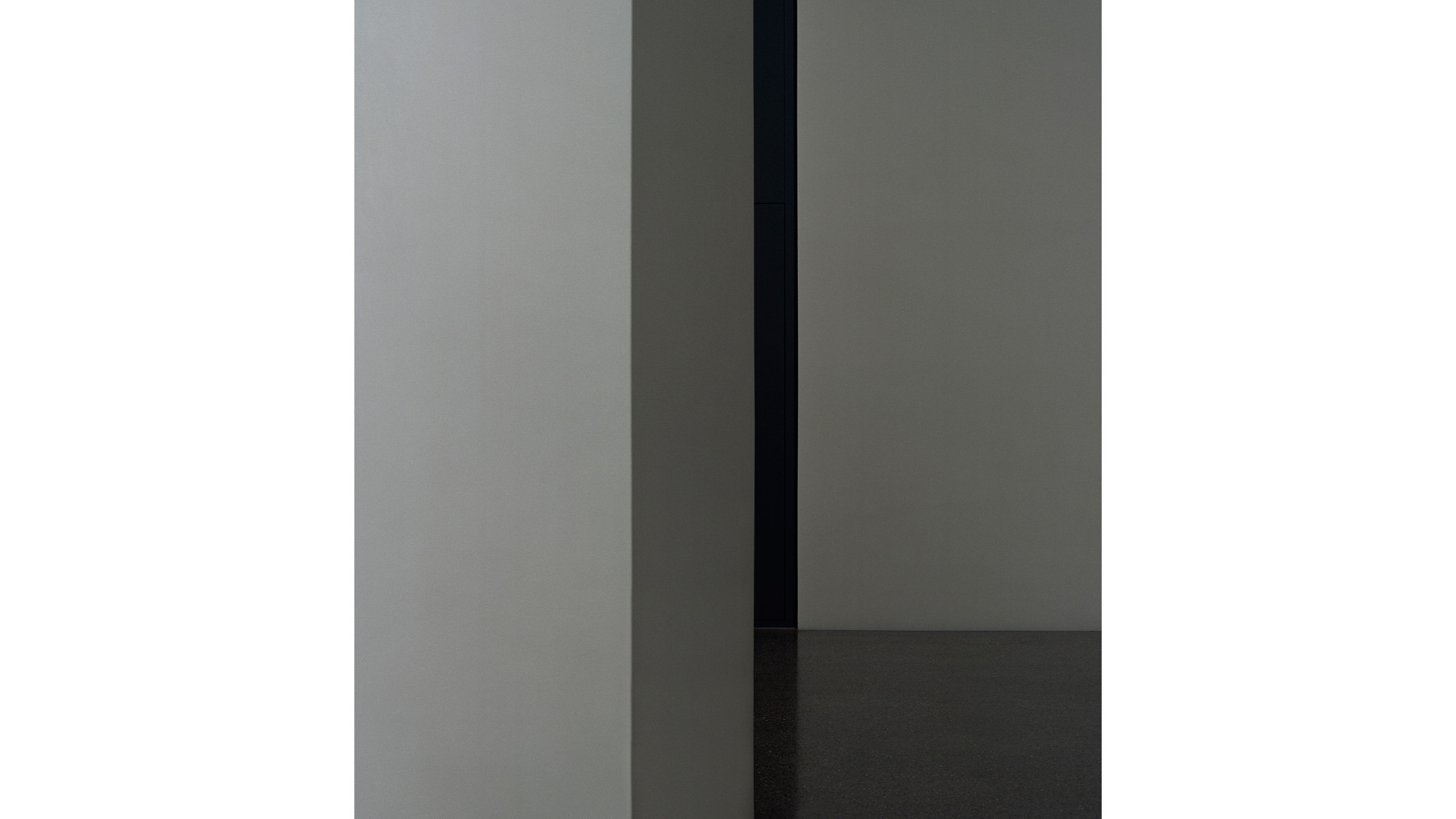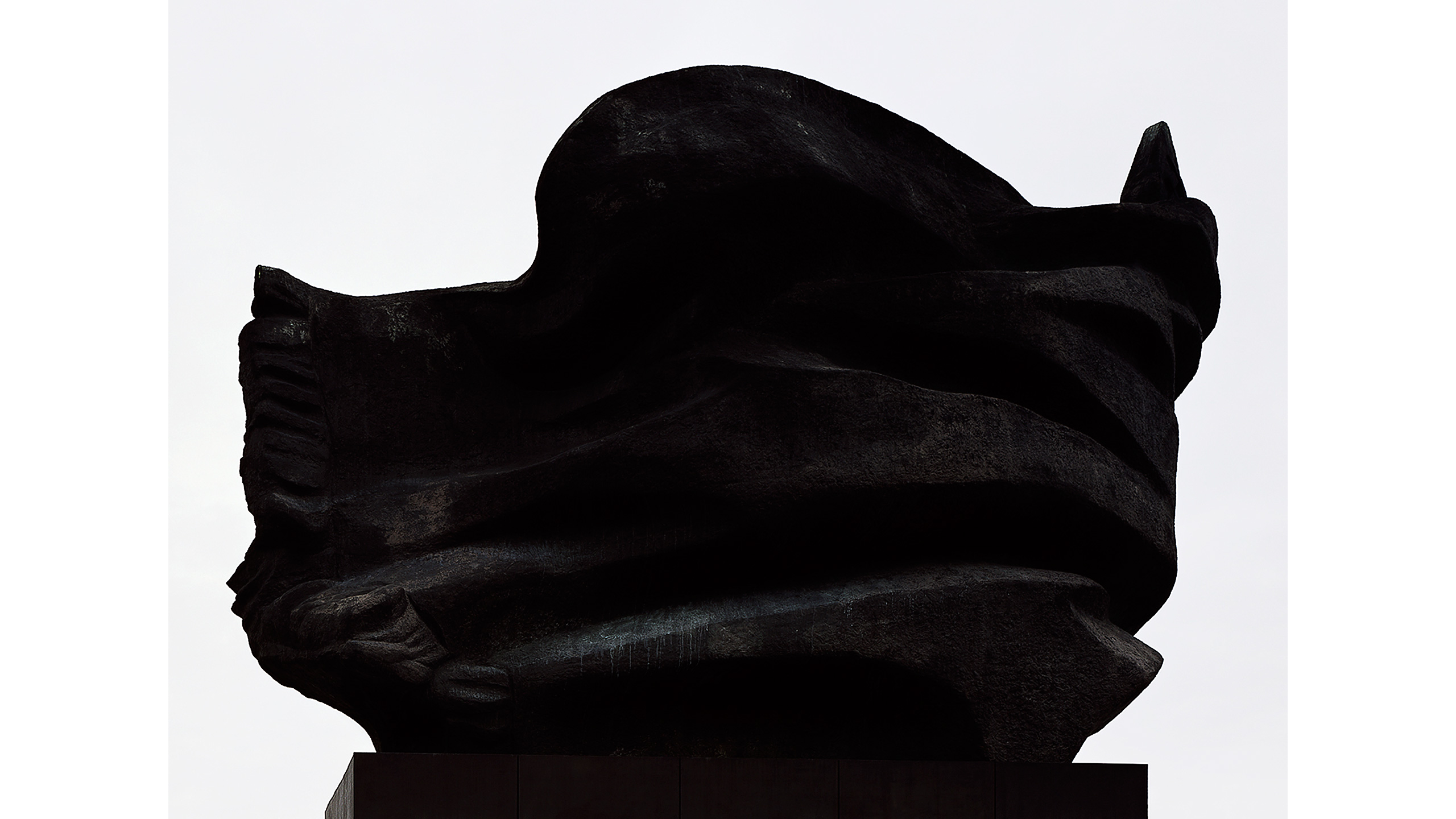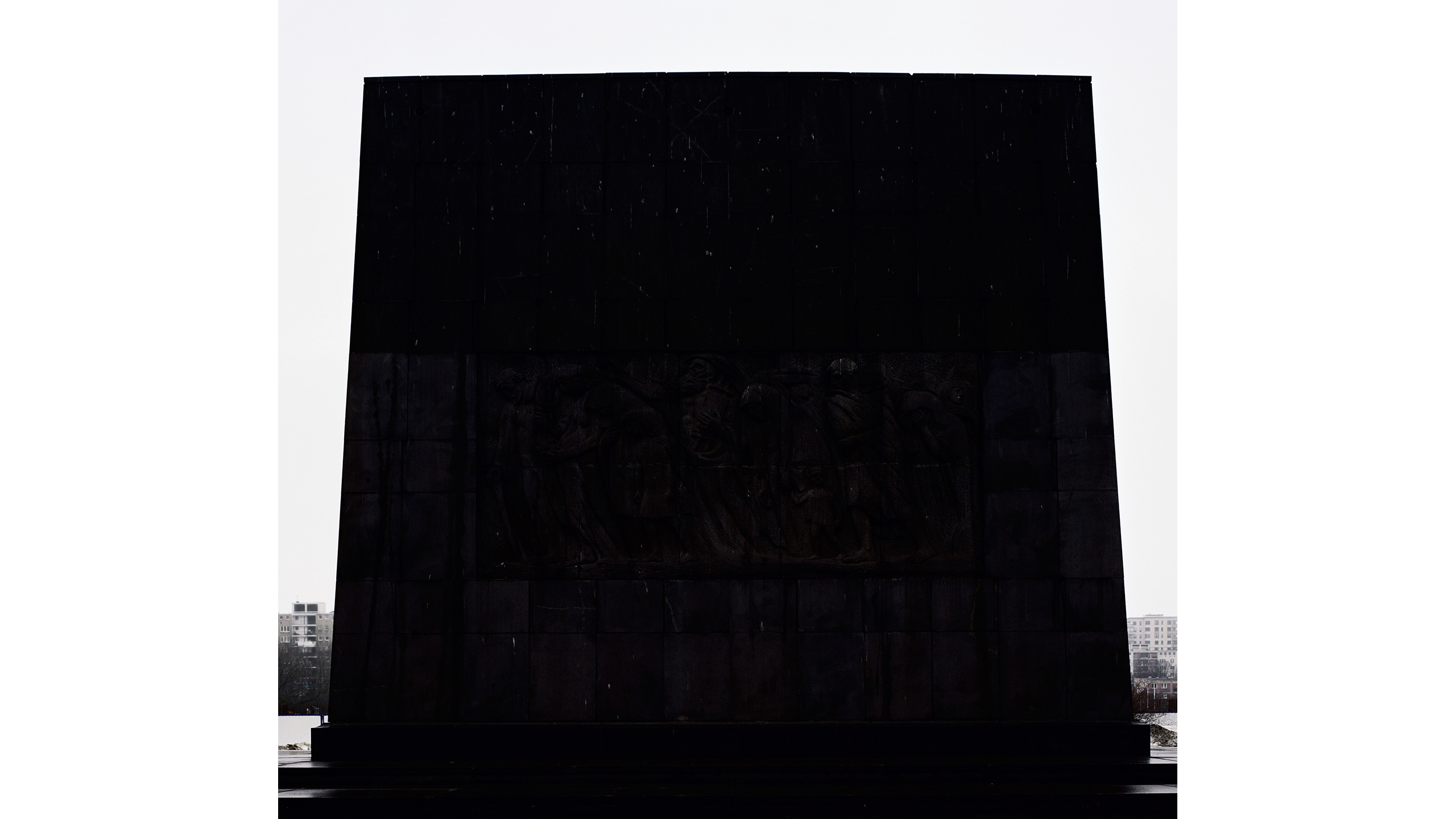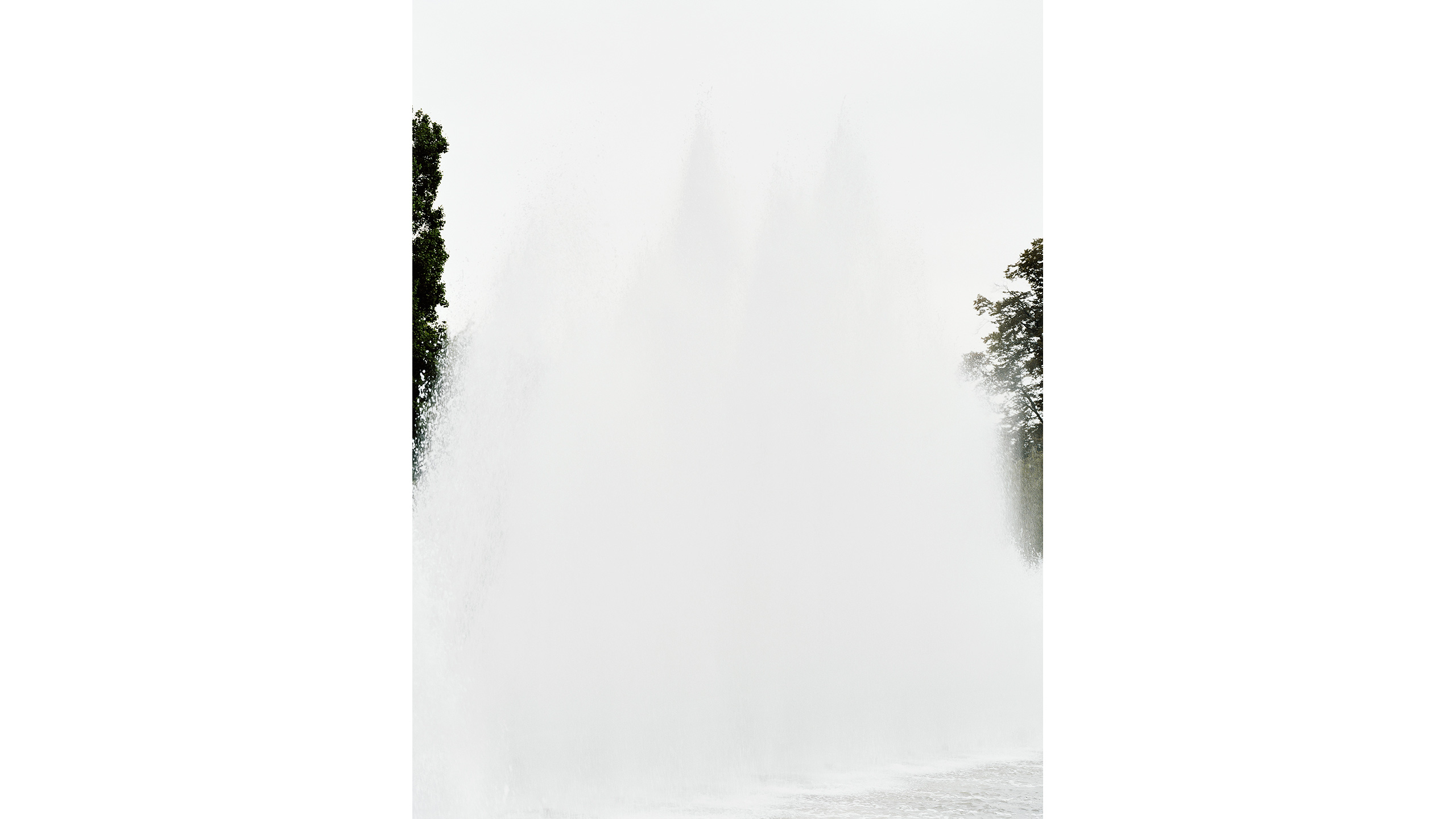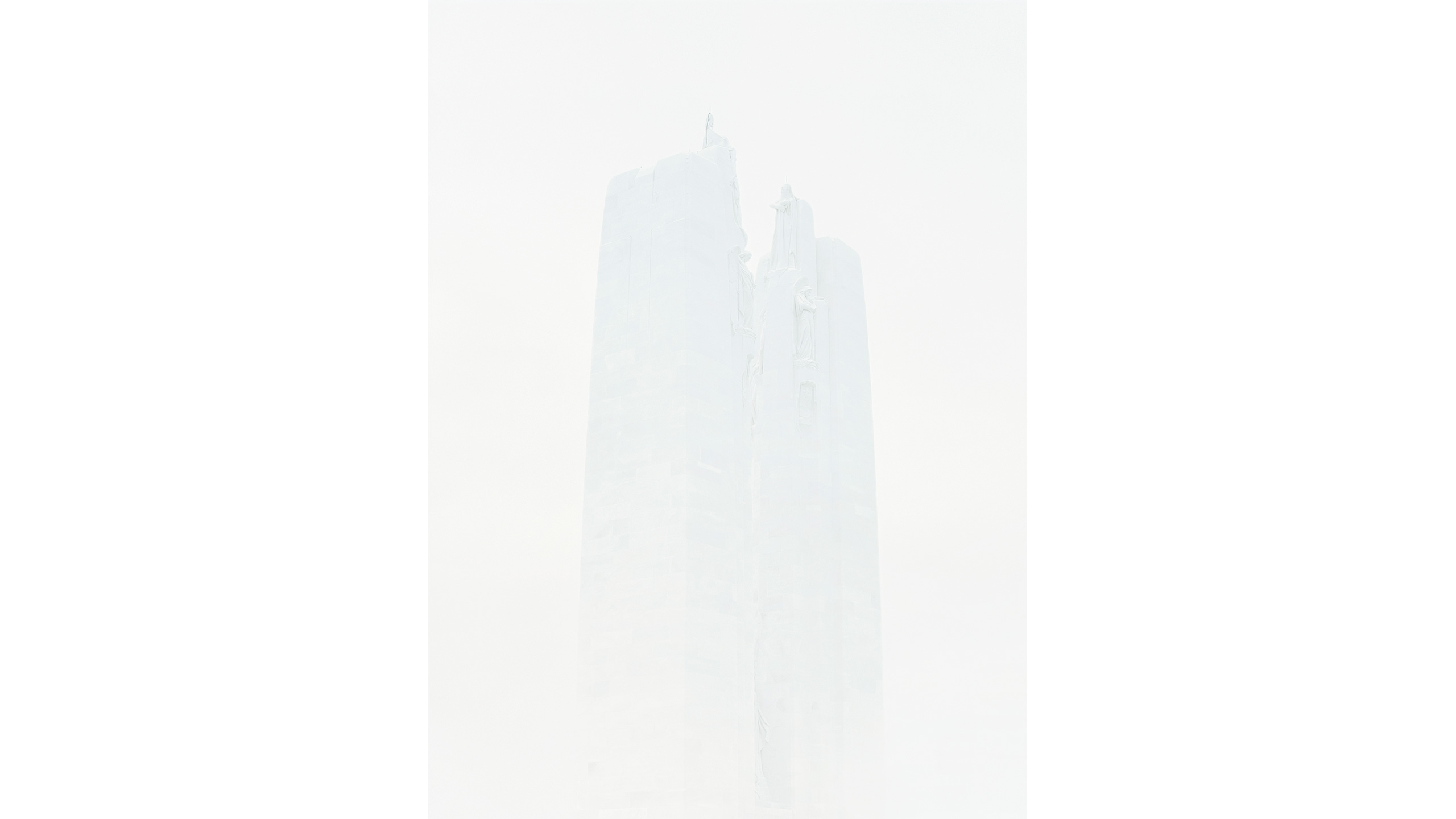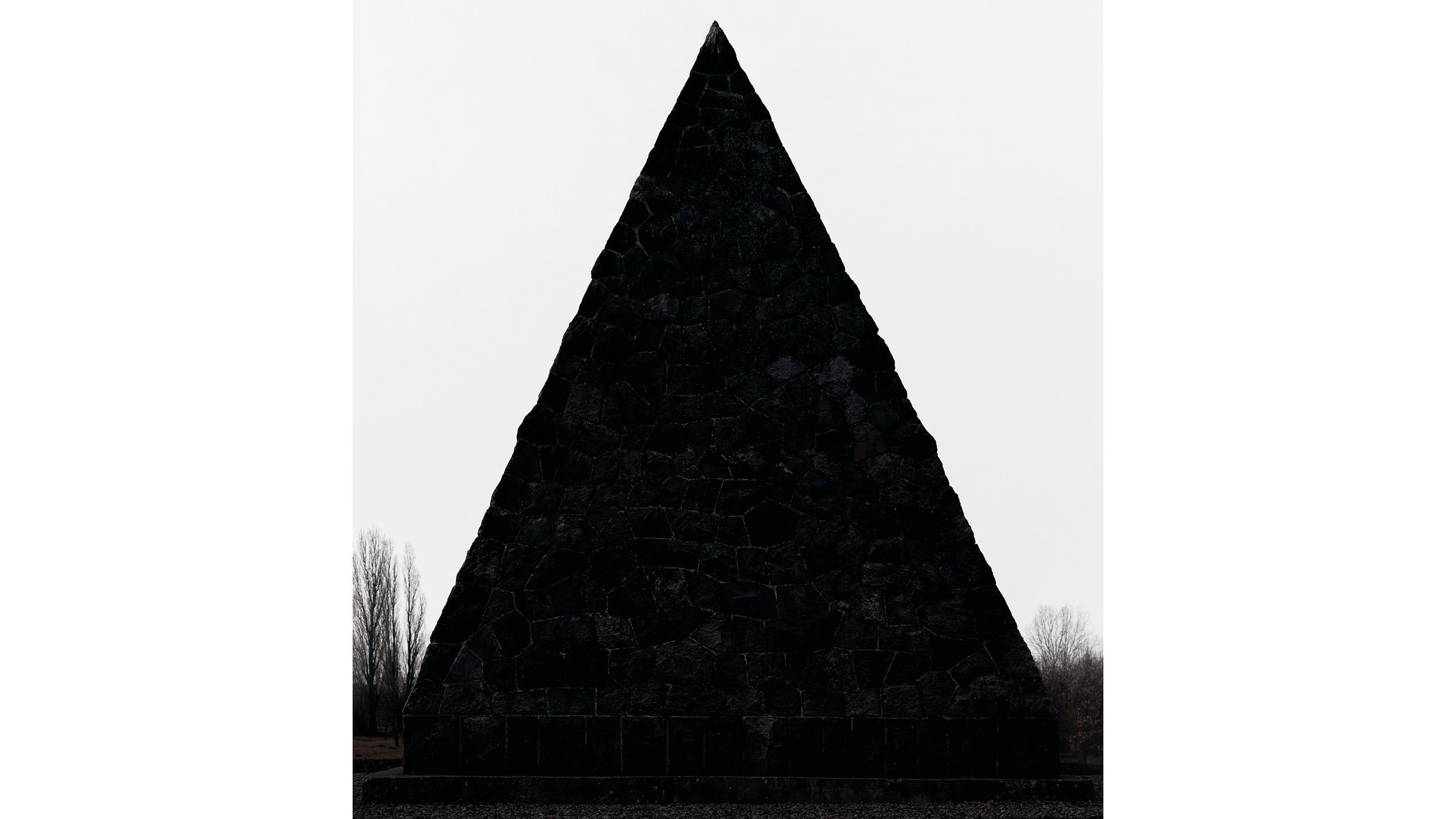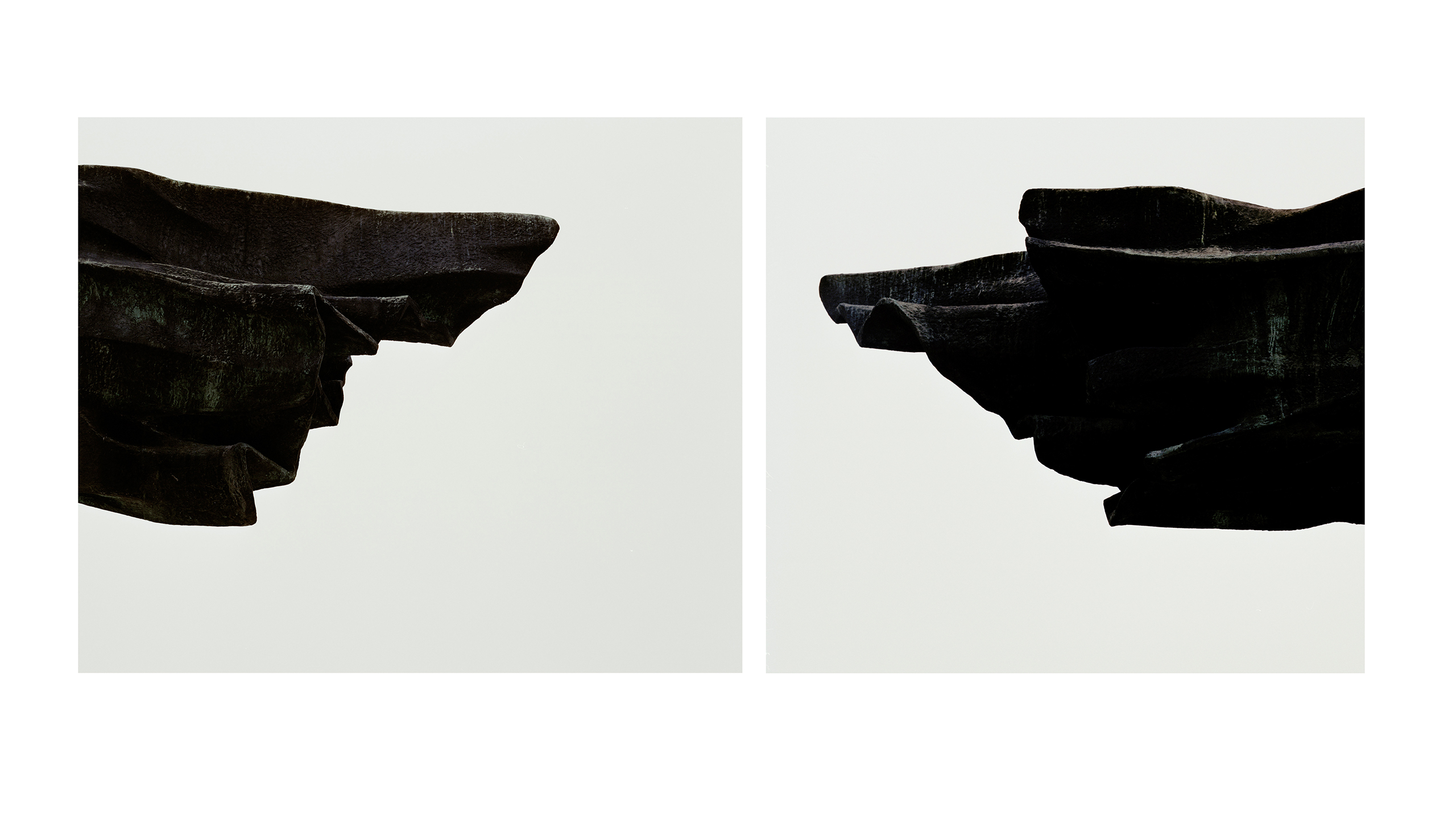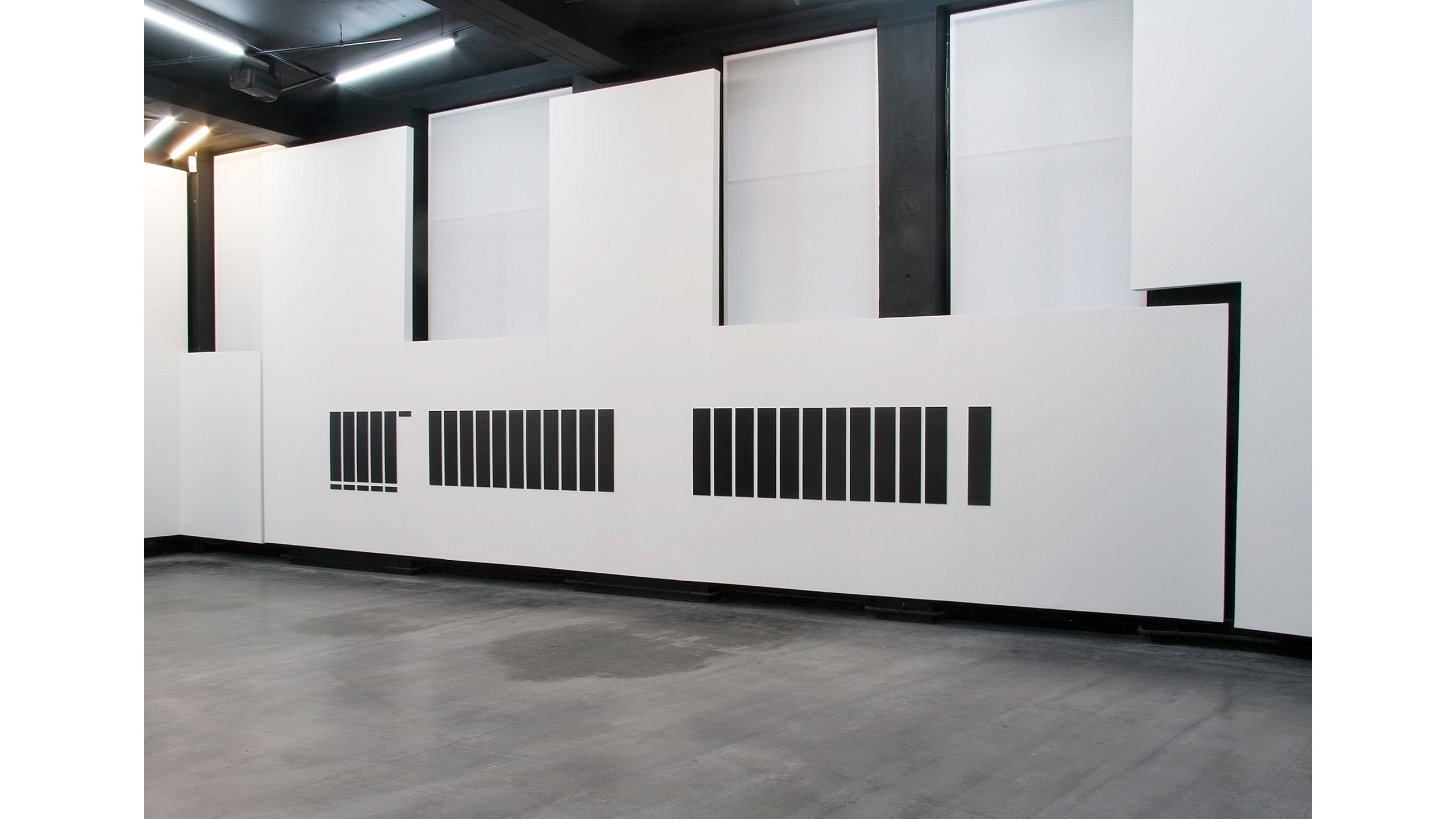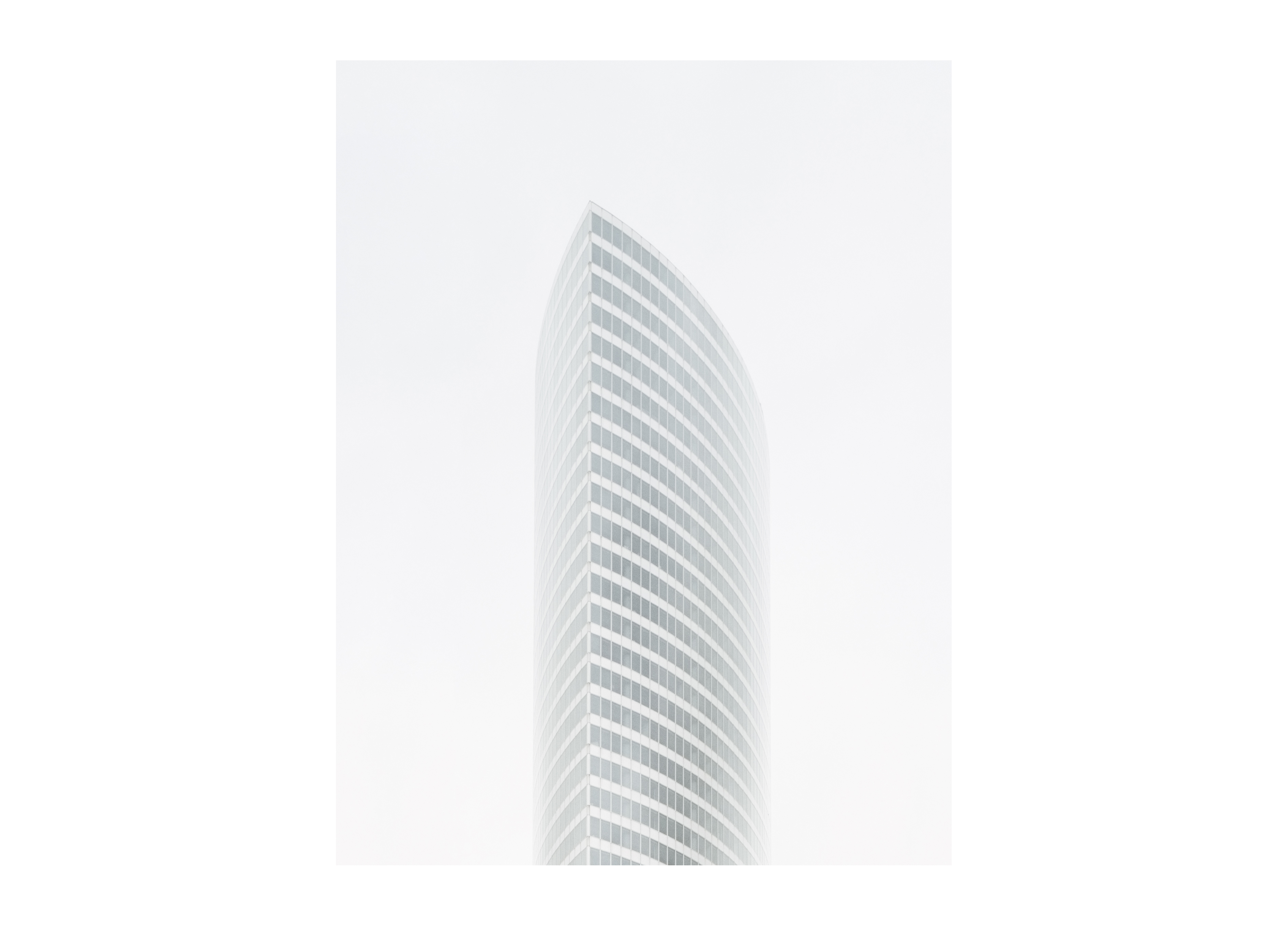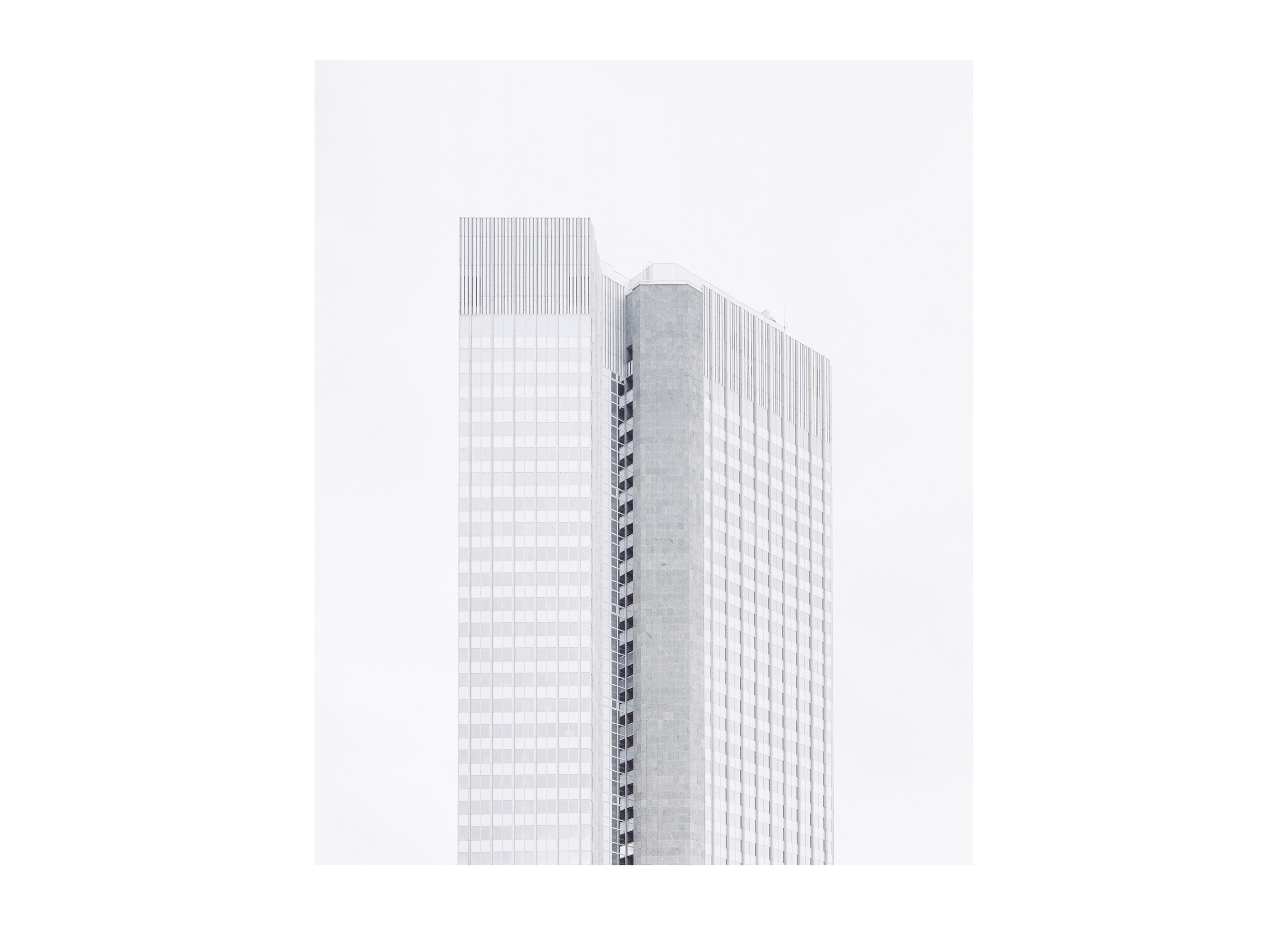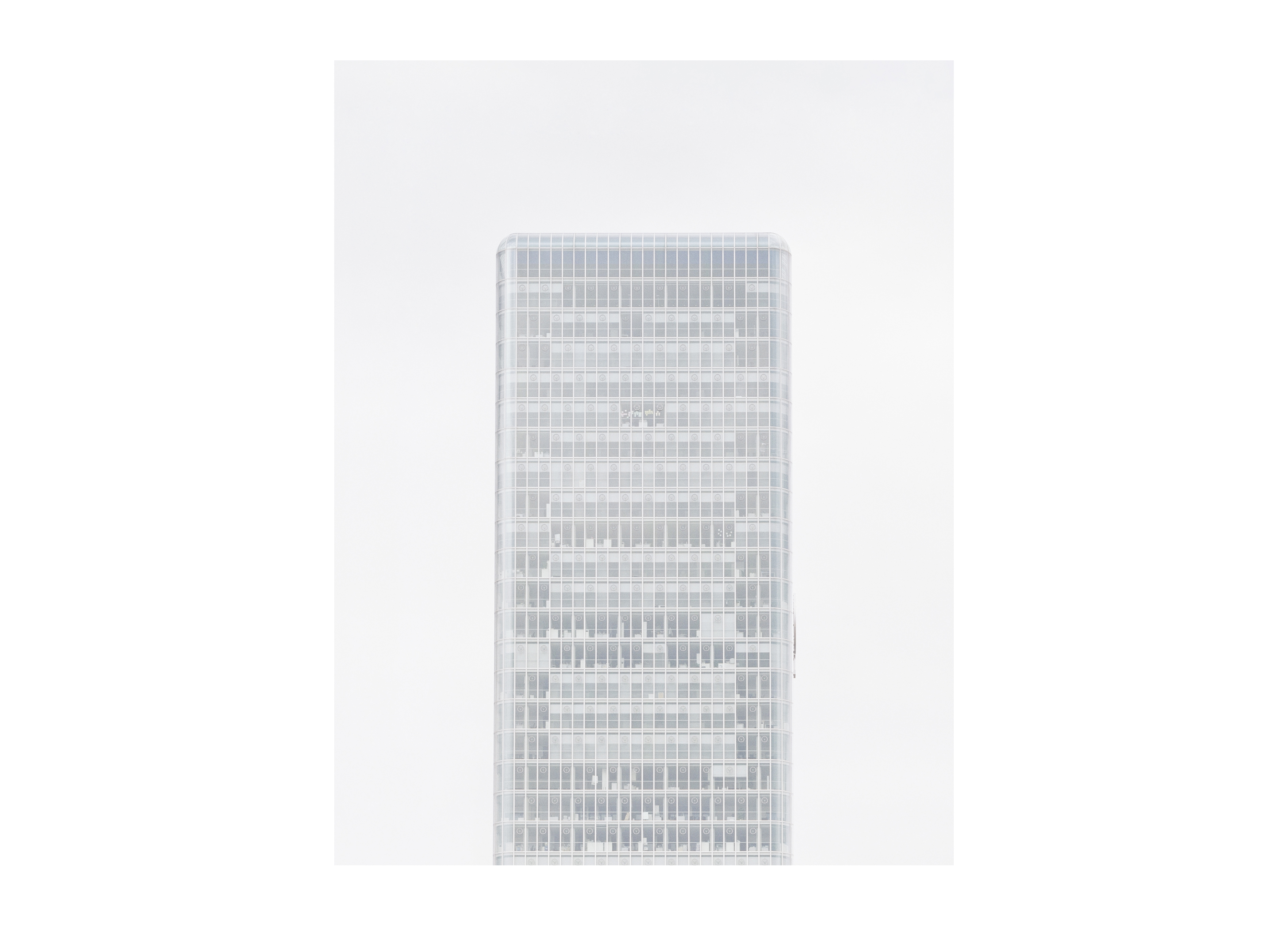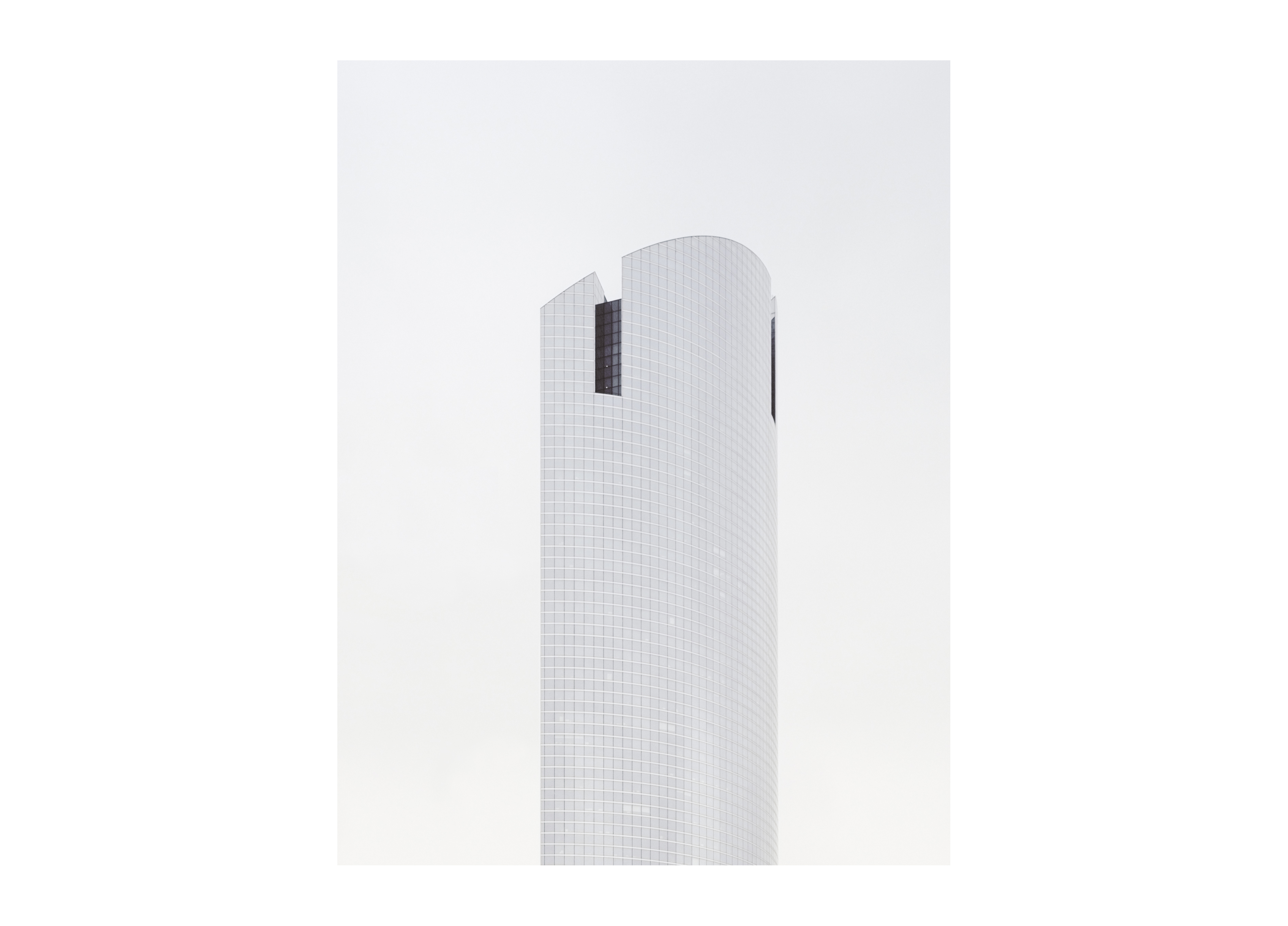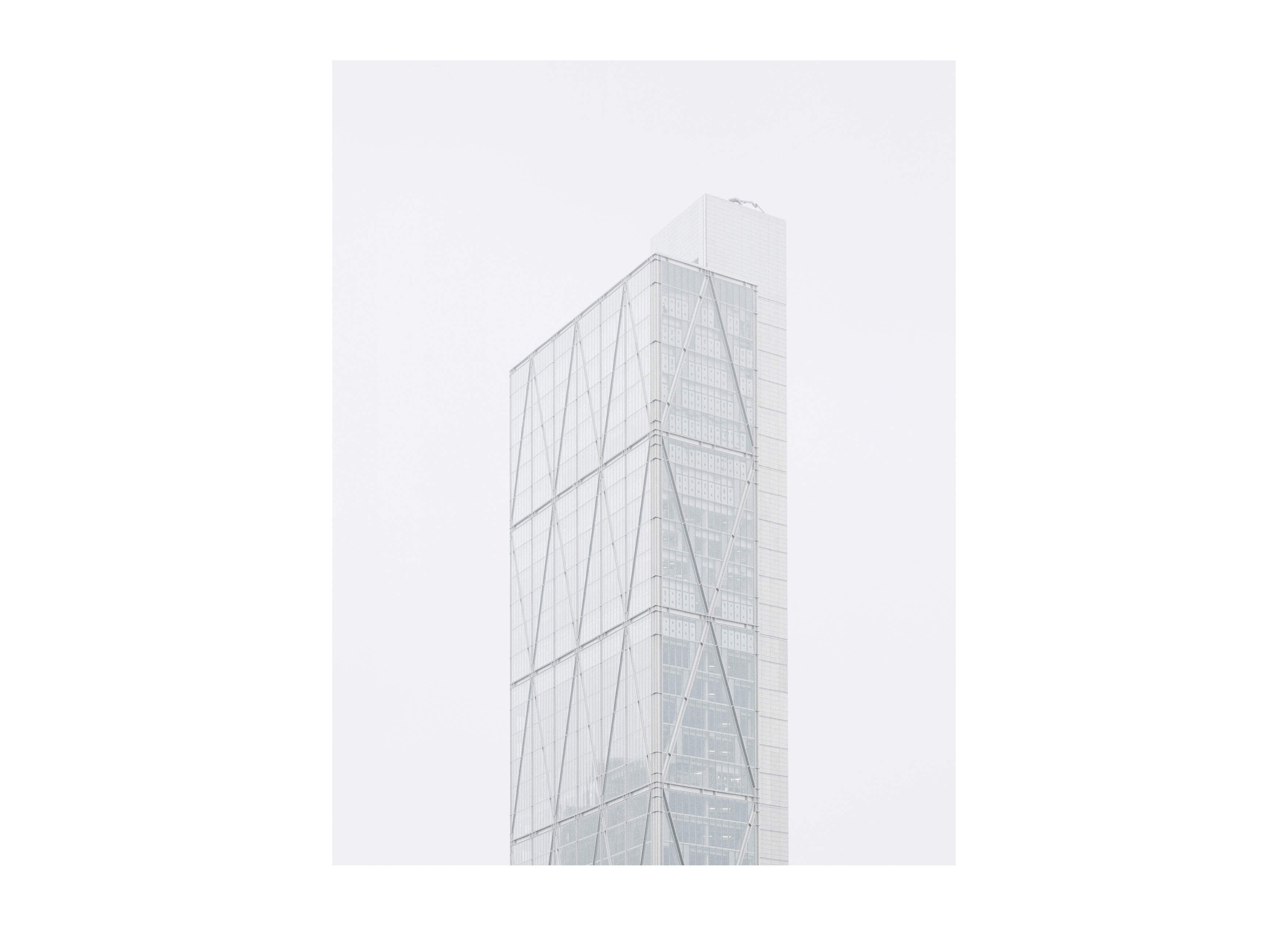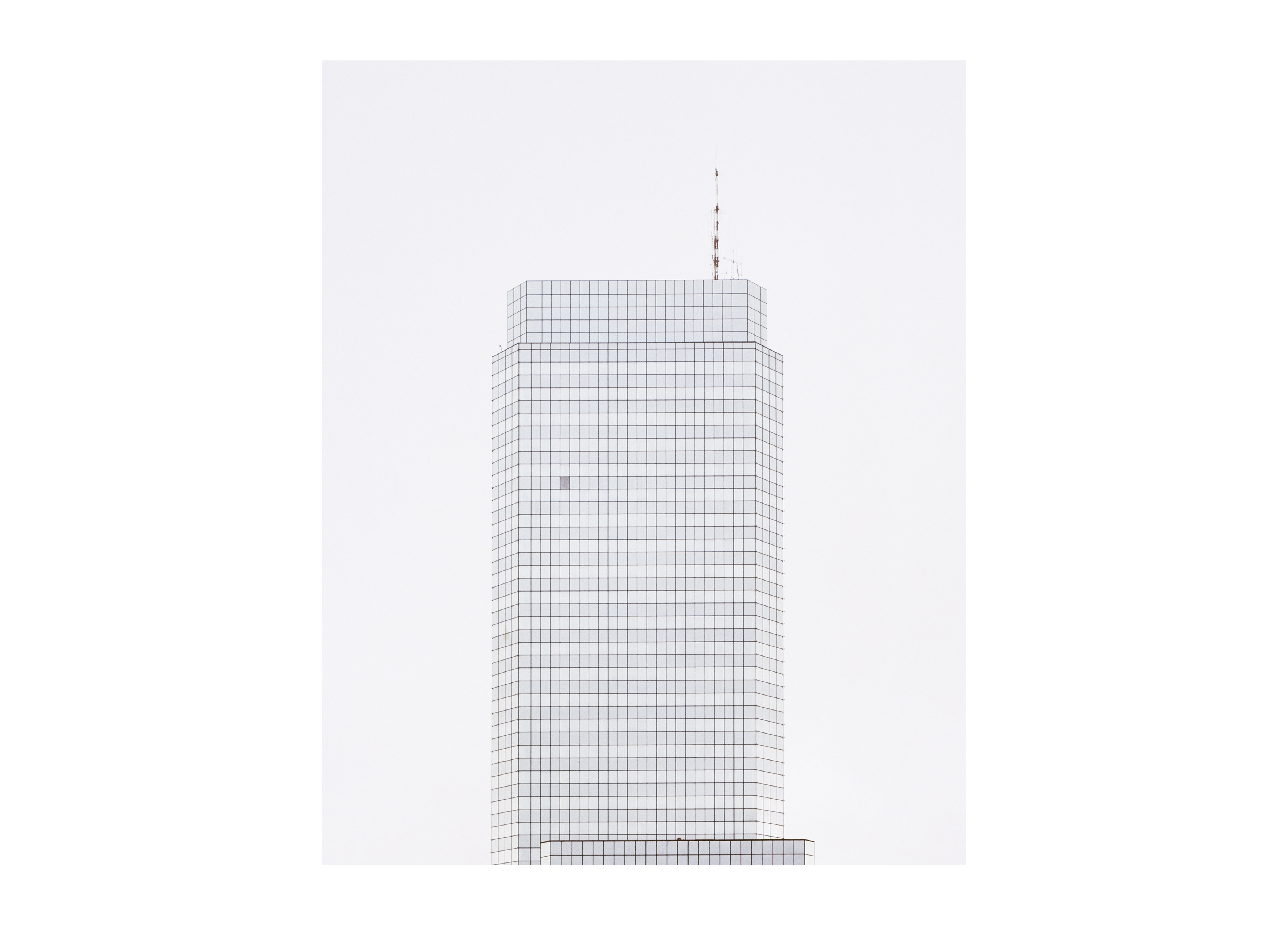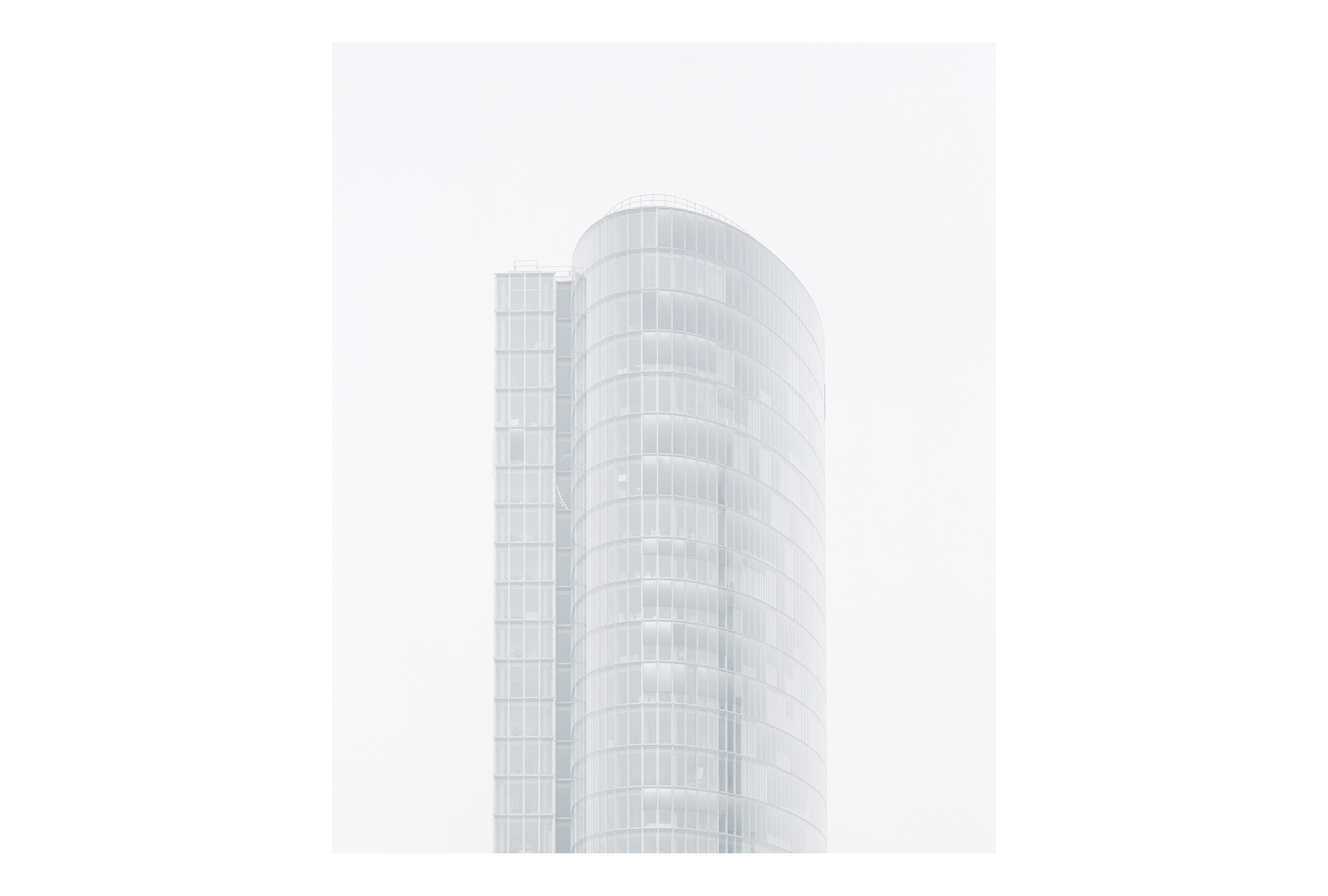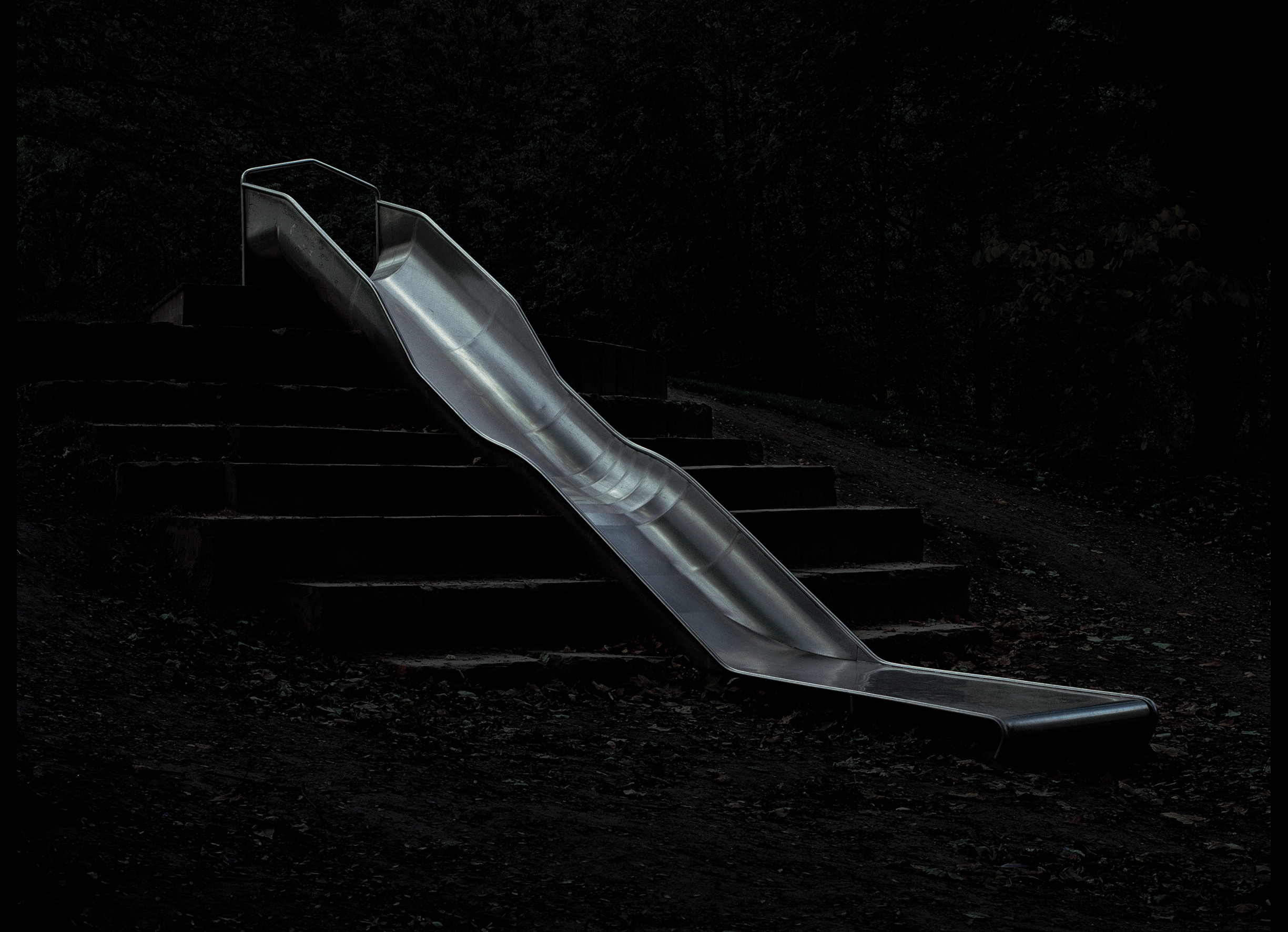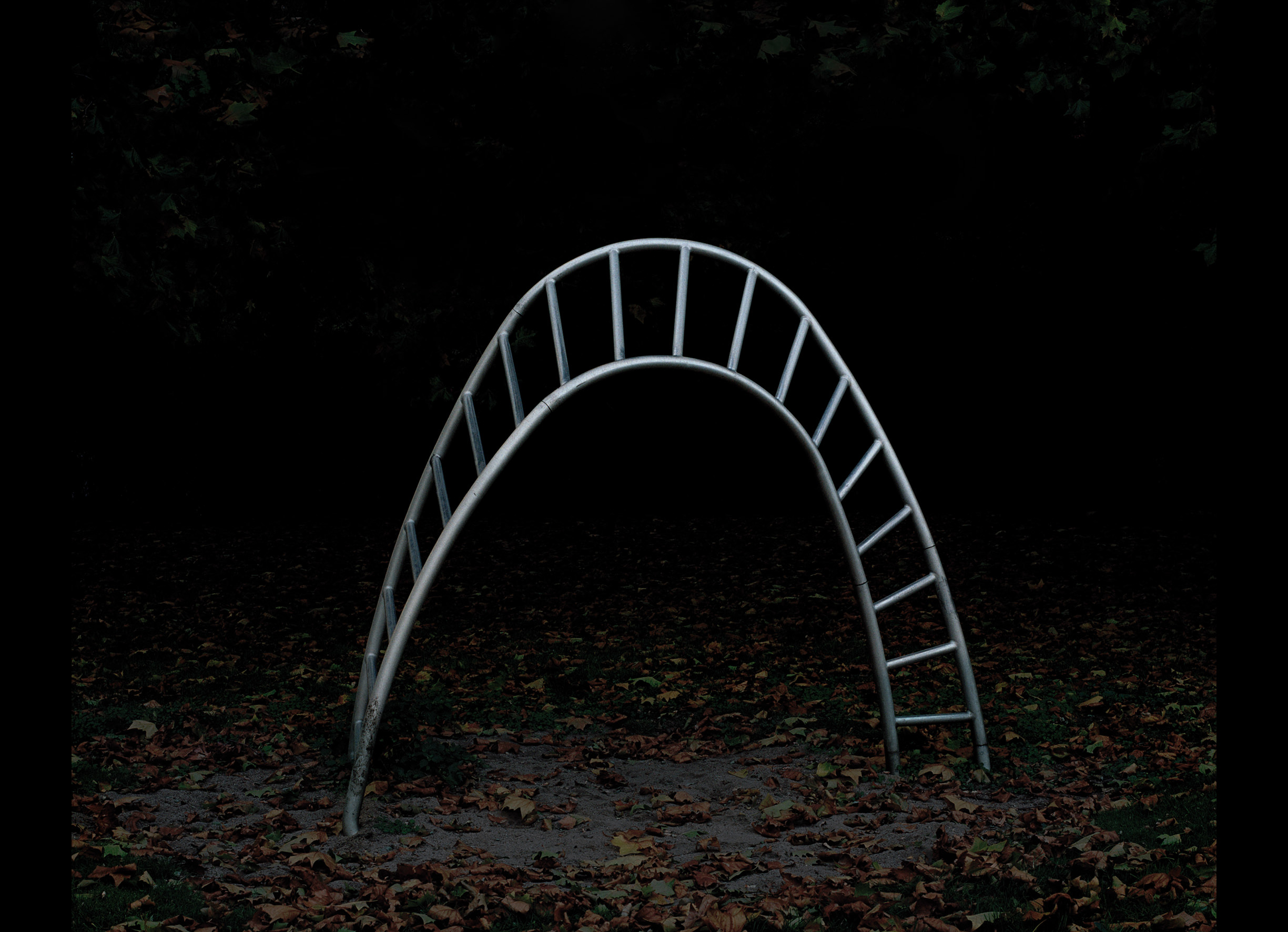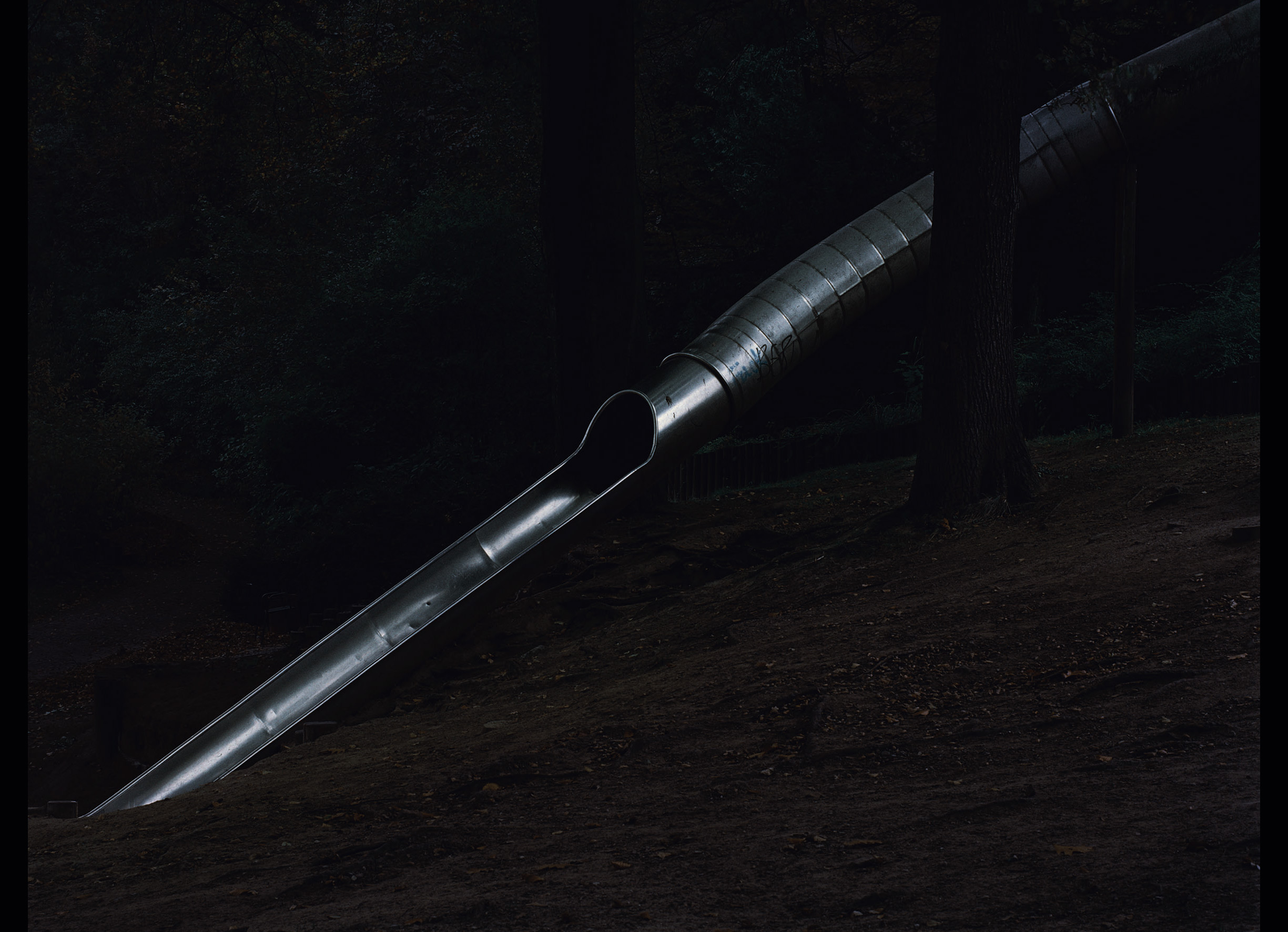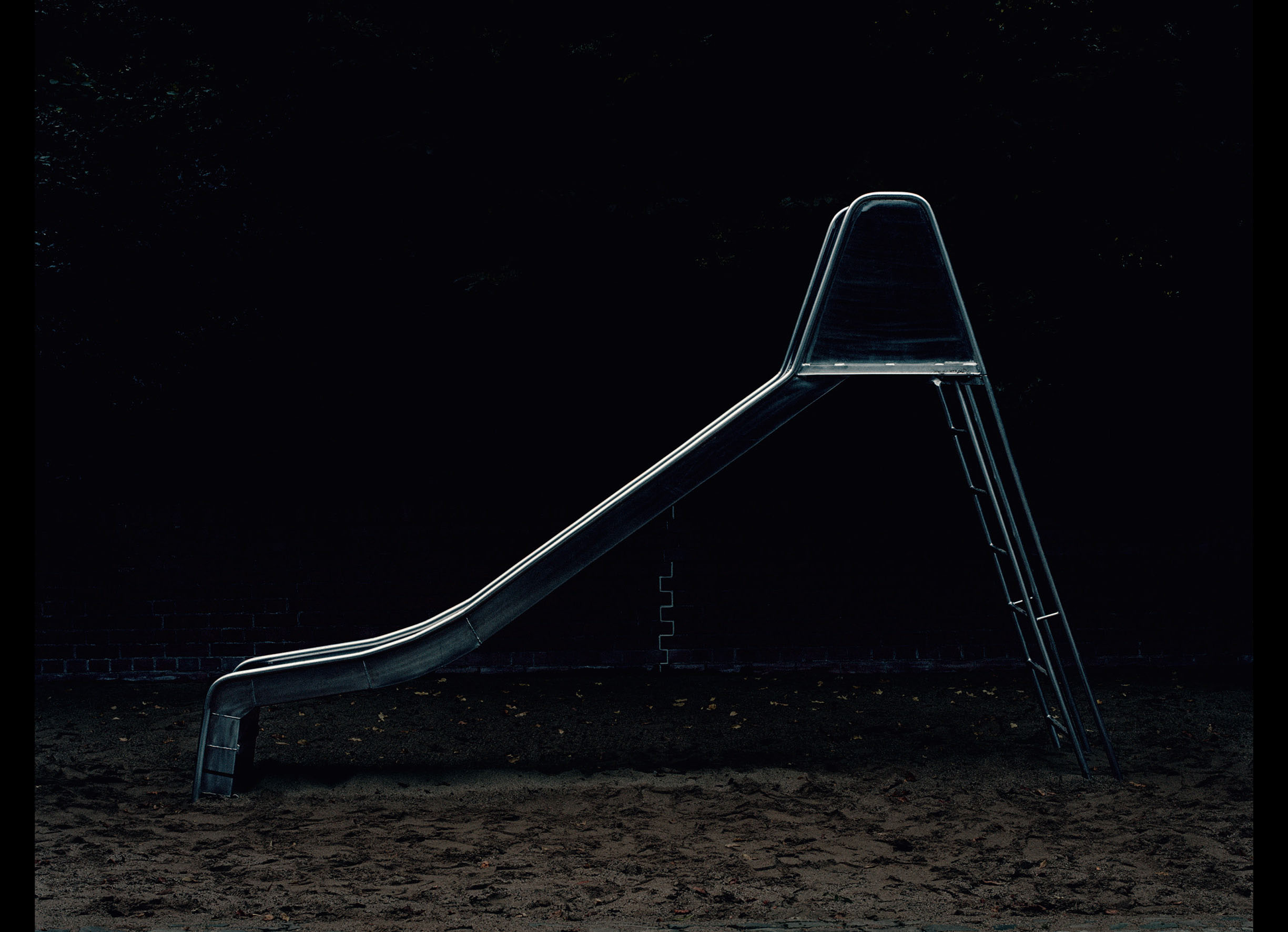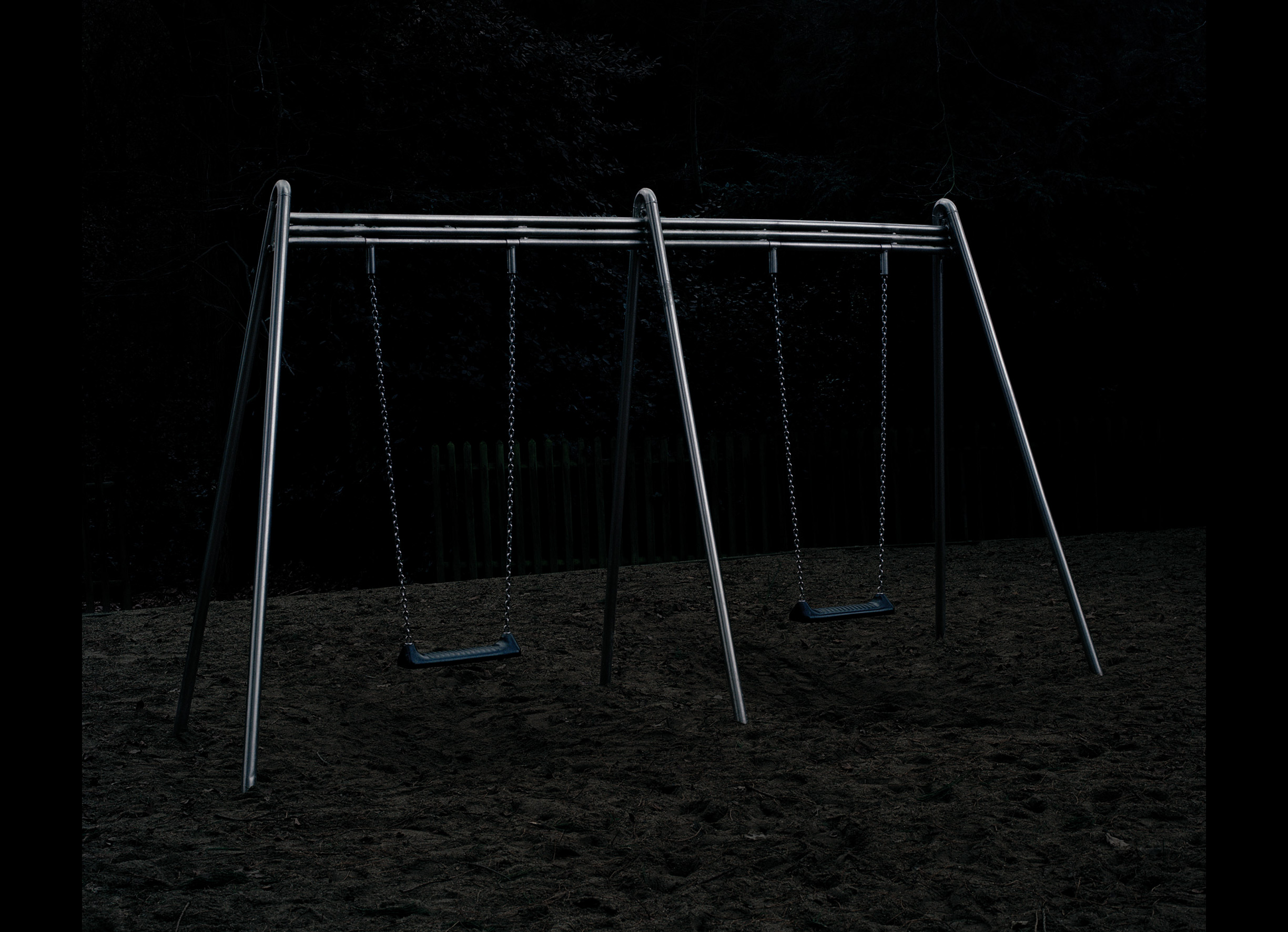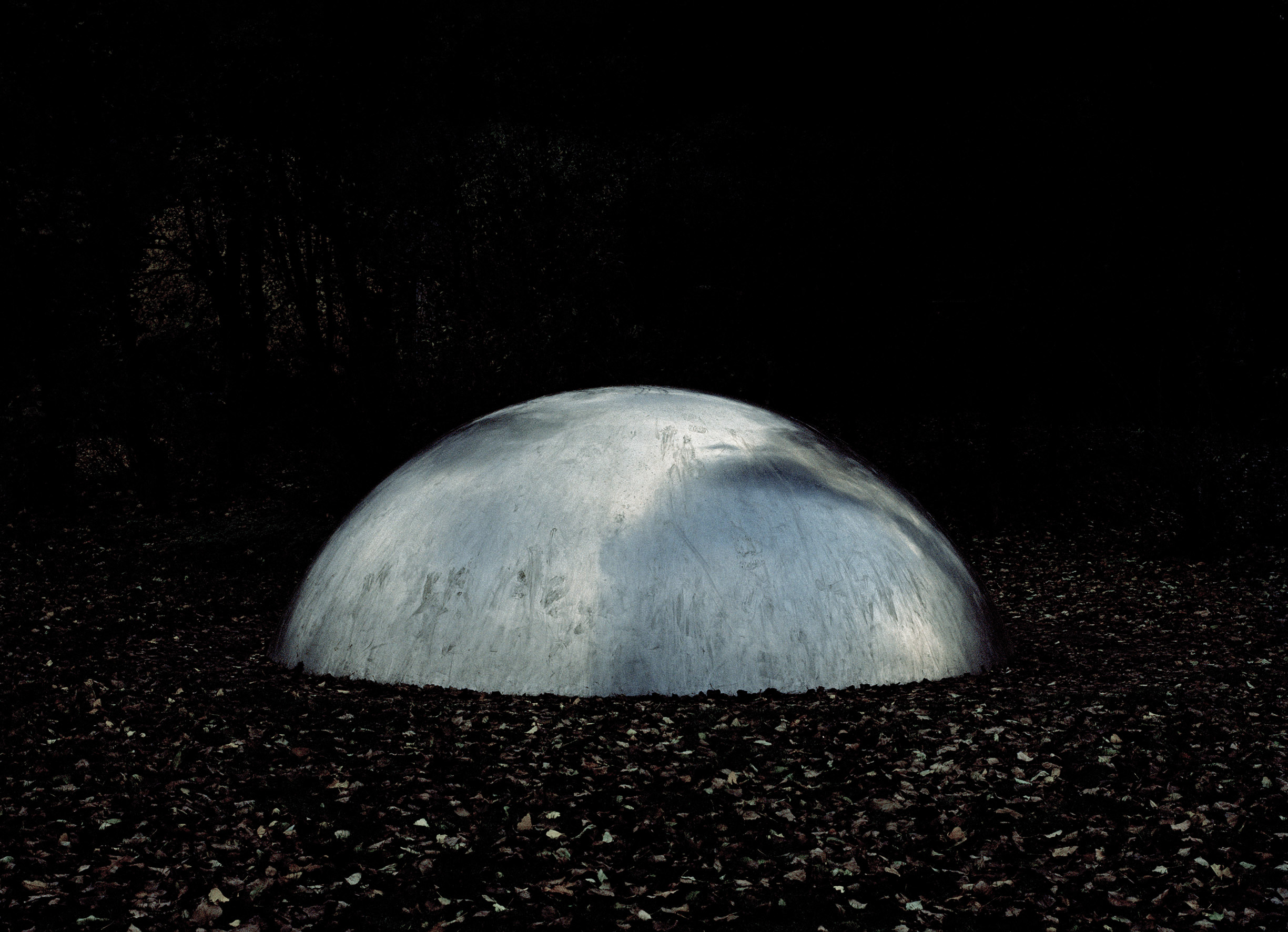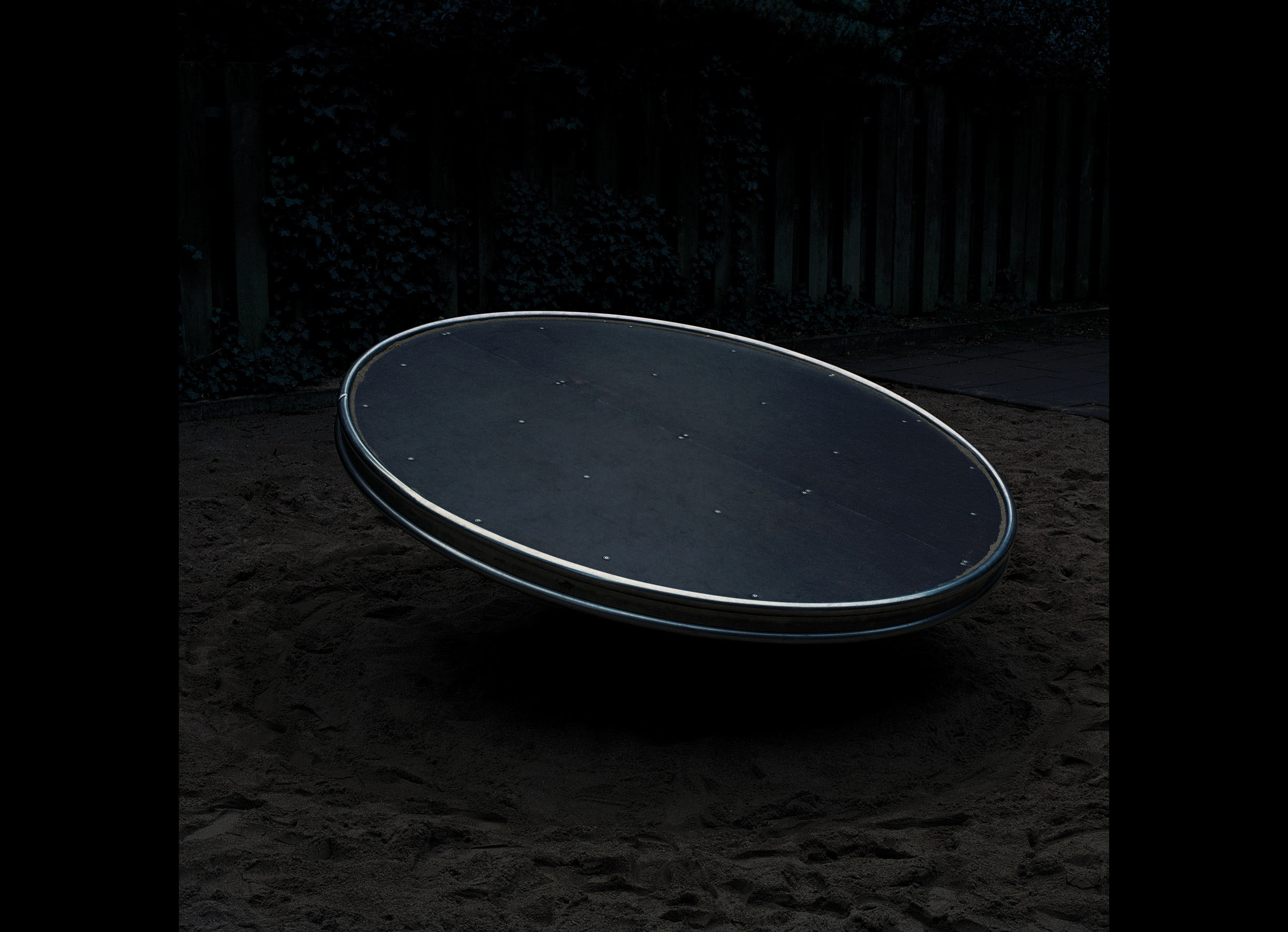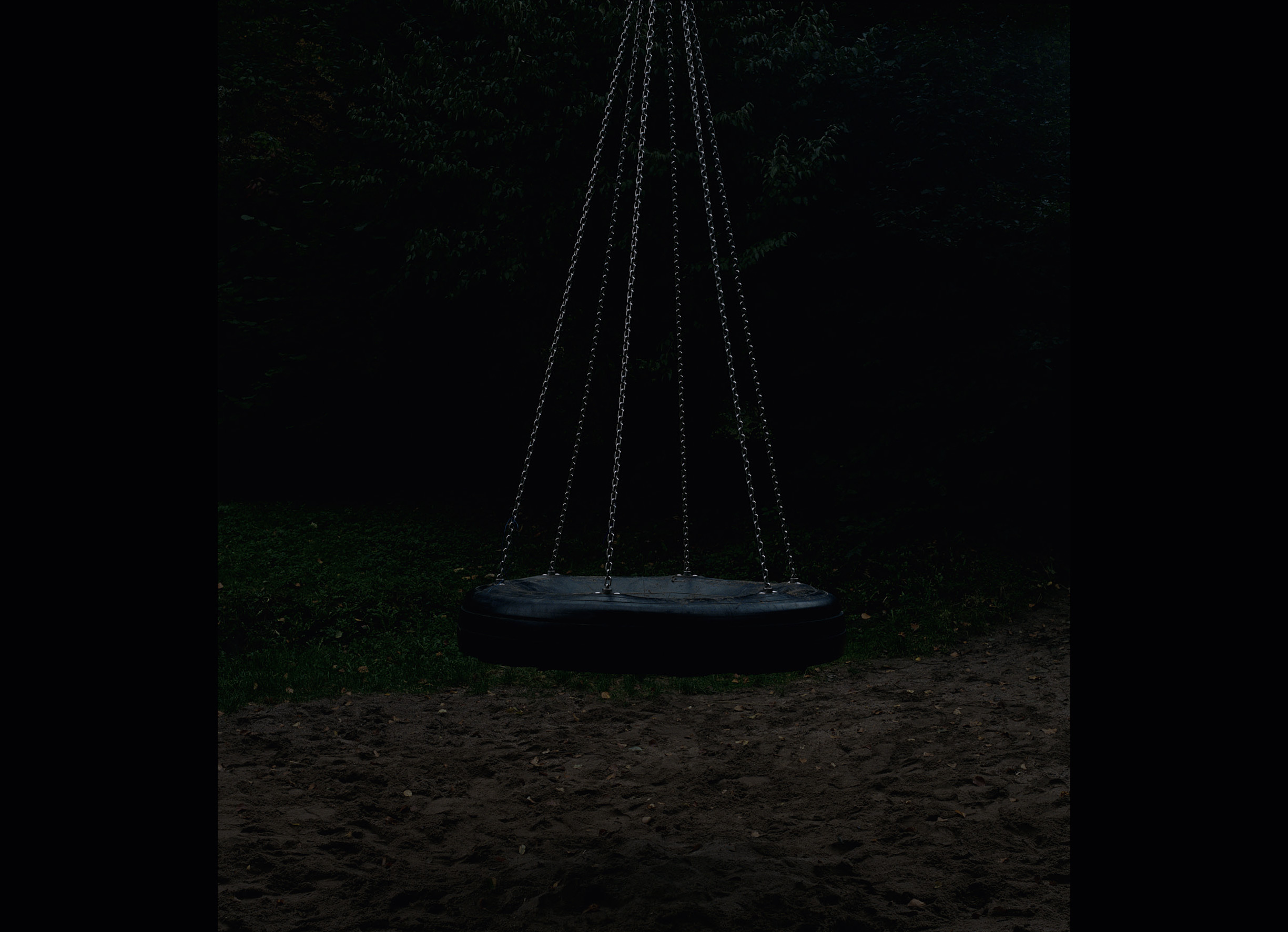Agata Madejska
available works
Agata Madejska (b.1979, Warsaw, Poland), graduated from Folkwang University of the Arts, Essen in 2007 and the Royal College of Art, London in 2010.
Through post-(and)photographic processes, sculptural interventions, and installation, Agata delves into the multiple ways in which power can be manifest. With their liquidus feel, her works question the smooth façades of language, architecture, and public agreements – forms that hold associative or symbolic value. In turn, Agata poses deeply philosophical questions which demand viewers to think and re-think how we have come to know not only our world but ourselves in this world-space – how and why.
Selected exhibitions include: I Dialogue, Kinch, Belmacz, London (2021); Mother Mercury, Art Night, London (2019), Modified Limited Hangout, Kunsthalle Wilhelmshaven (2018), Technocomplex, Parrotta Contemporary Art, Stuttgart (2017); Place. Tlomackie 3/5, Jewish Historical Institute, Warsaw (2017); Entoptic Screening, Galeria ASP, Warsaw (2016); Johanna Jaeger & Agata Madejska, Kunstraum griffelkunst, Hamburg (2016); Kingly Things, Chandelier Projects, London (2015); Conflict, Time, Photography, Museum Folkwang, Essen, Albertinum Dresden (2015) and Tate Modern, London (2014); Form Norm Folly, Kunstverein Krefeld, Krefeld (2014); Twisted Entities, Museum Morsbroich, Leverkusen (2013); Man and his Objects, Museum Folkwang, Essen (2012); Made in Germany Zwei, kestnergesellschaft, Hannover (2012); Menos tiempo que lugar, Palacio National de las Artes, Buenos Aires (2010); reGeneration 2, Musée de l’Elysée, Lausanne (2010) and Aperture, New York (2011).Bloomberg New Contemporaries, ICA, London (2010). Menos tiempo que lugar, Centro de Arte Contemporaneo, Quito, Ecuador (2009); Agata Madejska, allerArt, Bludenz (2009); gute aussichten 2007/2008, Goethe Institut, Washington D.C., USA (2008); XIII European Photography Prize Riccardo Pezza, Triennale di Milano, Italy (2008); The poetry of the functional, SMWK, Dresden, Germany (2007); Kodak Nachwuchs Förderpreis, Haus der Wirtschaft, Stuttgart, Germany (2007); Agata Madejska, Projektraum Mikro, Düsseldorf, Germany (2006).
Agata was awarded the renowned Contemporary German Photography award by the Alfried Krupp von Bohlen and Halbach Foundation in 2008 and the Emerging Artist Award of the State of North Rhine-Westphalia in 2011. She has also been the recipient of public funding awards in both the UK and Germany.
Agata lives and works in London.
Mistakes Were Made
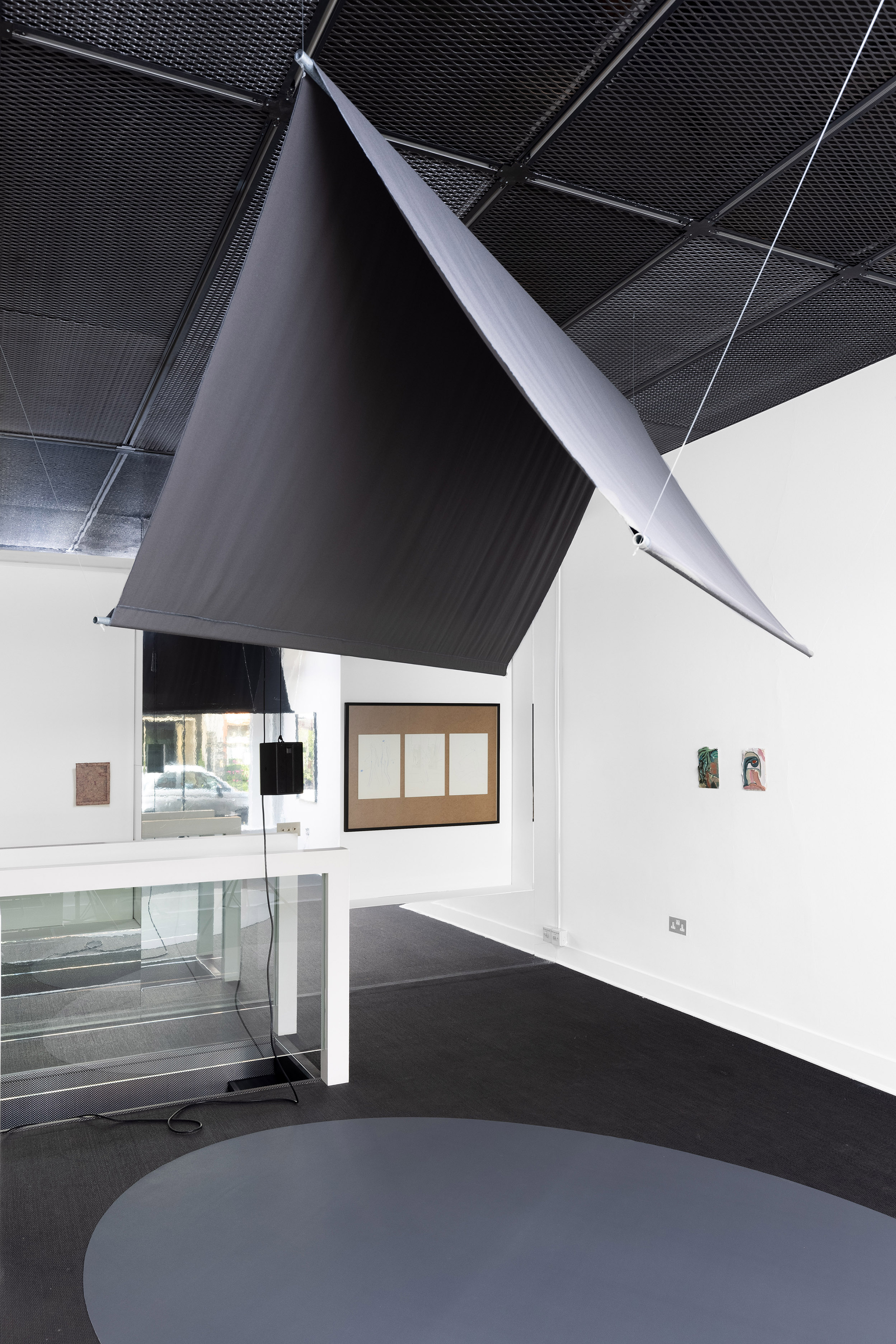
Agata Madejska, Mistakes Were Made, 2021
installation: fabric, steel, nylon fishing line, vinyl, speakers, cables, media player, dimensions variable
£7,000 (ex vat)
Agata Madejska, Mistakes Were Made 005 (extract) , 2021
audio: 44 mins. ed.12+2AP
MAD_21_0001
[…] The work Mistakes Were Made (2018), where politicians’ speeches, sans the factography, are recited by professional voice actors, is an example of this practice. Madejska manages to touch upon something unobvious here. The recordings are of State of the Union speeches and similar addresses. Through “surgical” procedures, by editing and redacting, the artist turns them into admissions of weakness, declarations of love, reflections on community. On the semantic level, these touching monologues are a kind of secular confession addressed at a loved one. In times of post-truth, one could hardly think of a more significant gesture imbuing words with emotions and values that accompany relationships of familial and romantic love. Simultaneously with this “ballasting” of words, their political undertone bears the marks of universality and a reference to the mythical roots of the contract between the state and its citizens. Madejska recovers a word-based community from the recesses of shattered history, investing it with a new, emotional quality.
In Mistakes Were Made, this mythological community is something rough and very soft at the same time. The apparent contradiction stems from the fact of these being confessions, which, after all, are admissions of failure, sin, and weakness, made by people who are supposed to take helm and provide leadership. Such a tender treatment of community is like a reappraisal of the Hobbesian social contract, the main purpose of which is survival under the sovereign power of the Leviathan. In Mistakes Were Made, survival however seems to be an insufficient condition for the contract to be kept. Experienced by the spectator in the intimate space of a black tent, the moment of the admission of failure is like a promise of its rewriting to include a new postulate – investing society with agency on the same terms on which two persons can talk to each other in a committed relationship.
Agata Madejska construes politicalness first and foremost as a dynamic of human activities. It is politicalness that organizes the space of human life. The tensions and bulges of this space, which can be different in terms of organization, but its undersoil, its building material is always the same, will continue until history ends, as Fukuyama wanted to believe until recently. The artist seeks to bring out these special moments of the ocean’s activity on particular examples from the past. It is in it that she finds images, genre scenes, as it were, that allow us to better feel the power of politicalness even if not necessarily to better understand it.[…]
excerpt, Changes in the Ocean. On the Art of Agata Madejska by Jakub Śwircz, 2019

Agata Madejska, Mistakes Were Made, 2019
installation: fabric, steel, nylon fishing line, vinyl, speakers, cables, media player, dimensions variable
£7,000 (ex vat)
Modified Limited Hangout

Agata Madejska, Simon Says, 2018
powder coated aluminium, dimensions variable, unlimited edition each unique
MAD_18_0009

Agata Madejska, Loser's Loss, Winner's Gain, 2018
powder coated aluminium, 200 x 25 x 200 cm
£10,600 (ex vat), unique
Agata Madejska , Rise 001, 2018
lightjet c-type print, perspex, alu dibond, 160 x 121 cm, ed.5+2AP
MAD_18_0001
Agata Madejska , Rise 002, 2018
lightjet c-type print, perspex, alu dibond, 160 x 121 cm, ed.5+2AP
MAD_18_0002
Agata Madejska , Rise 003, 2018
lightjet c-type print, perspex, alu dibond, 160 x 121 cm, ed.5+2AP
MAD_18_0003
Agata Madejska , Rise 004, 2018
lightjet c-type print, perspex, alu dibond, 160 x 121 cm, ed.5+2AP
MAD_18_0004
Agata Madejska , Rise 005, 2018
lightjet c-type print, perspex, alu dibond, 160 x 121 cm, ed.5+2AP
MAD_18_0005
[…]For the Wilhelmshaven show, Madejska has also prepared a work that appears to be a continuation of solaristic observations, this time conducted with the aid of mathematical formulas. Simon Says (2018) is a series inspired by the Josephus permutation, a theoretical problem in combinatorial mathematics, which for the artist becomes an opportunity to reflect on the randomness of or even to predict bulges and tensions in political space, especially those related to racial or religious conflicts or lack of empathy. However, as it often happens for solarists and for Madejska too, the ocean remains unperturbed here, and in this particular case, grey.
Sharing the same tonality is yet another series made for Modified Limited Hangout, titled RISE (2018). These are special works for the show, looking as if straight out of a Lem-style science-fiction laboratory – images of photochemical smog caused by the interaction of ultraviolet solar radiation with a high concentration of exhaust fumes and industrial emissions. RISE is an extreme record of the entropy materializing in present-day space, notably in big cities. In Madejska’s formulation, those are samples of changes, of factors that the Leviathan hasn’t yet responded to, perhaps hasn’t even noticed. […]
excerpt, Changes in the Ocean. On the Art of Agata Madejska by Jakub Śwircz, 2019
Agata Madejska , Simon Says (Installation view, Modified Limited Hangout, Kunsthalle Wilhelmshaven, 2018), 2018
powder coated aluminium, dimensions variable, unlimited edition each unique
MAD_18_0009
Installation View
Agata Madejska , Mistakes Were Made (Installation view, Modified Limited Hangout, Kunsthalle Wilhelmshaven, 2018), 2018
fabric, steel, nylon fishing line, vinyl, speakers, cables, media player, 350 × 200 × 300 cm, audio duration: 15:45 min
MAD_18_0029
Agata Madejska , Installation view, Modified Limited Hangout, Kunsthalle Wilhelmshaven, 2018), 2018
fabric, dimensions variable, site specific, unlimited edition
MAD_18_0008
, Modified Limited Hangout, Kunsthalle Wilhelmshaven, 2018
Installation View
Installation View
Installation View
Agata Madejska , Voyage, Voyage (Installation view, Modified Limited Hangout, Kunsthalle Wilhelmshaven, 2018), 2018
carpet tiles, dimensions variable, unlimited edition
MAD_18_0007
Installation View
Mistakes Were Made, drawings
Agata Madejska, Mistakes Were Made, 2018
light sensitive emulsion on paper, 20 × 31 cm, unique
MAD_18_0020
Agata Madejska, Mistakes Were Made, 2018
light sensitive emulsion on paper, 20 × 31 cm, unique
MAD_18_0021
Agata Madejska, Mistakes Were Made, 2018
light sensitive emulsion on paper, 20 × 31 cm, unique
MAD_18_0019
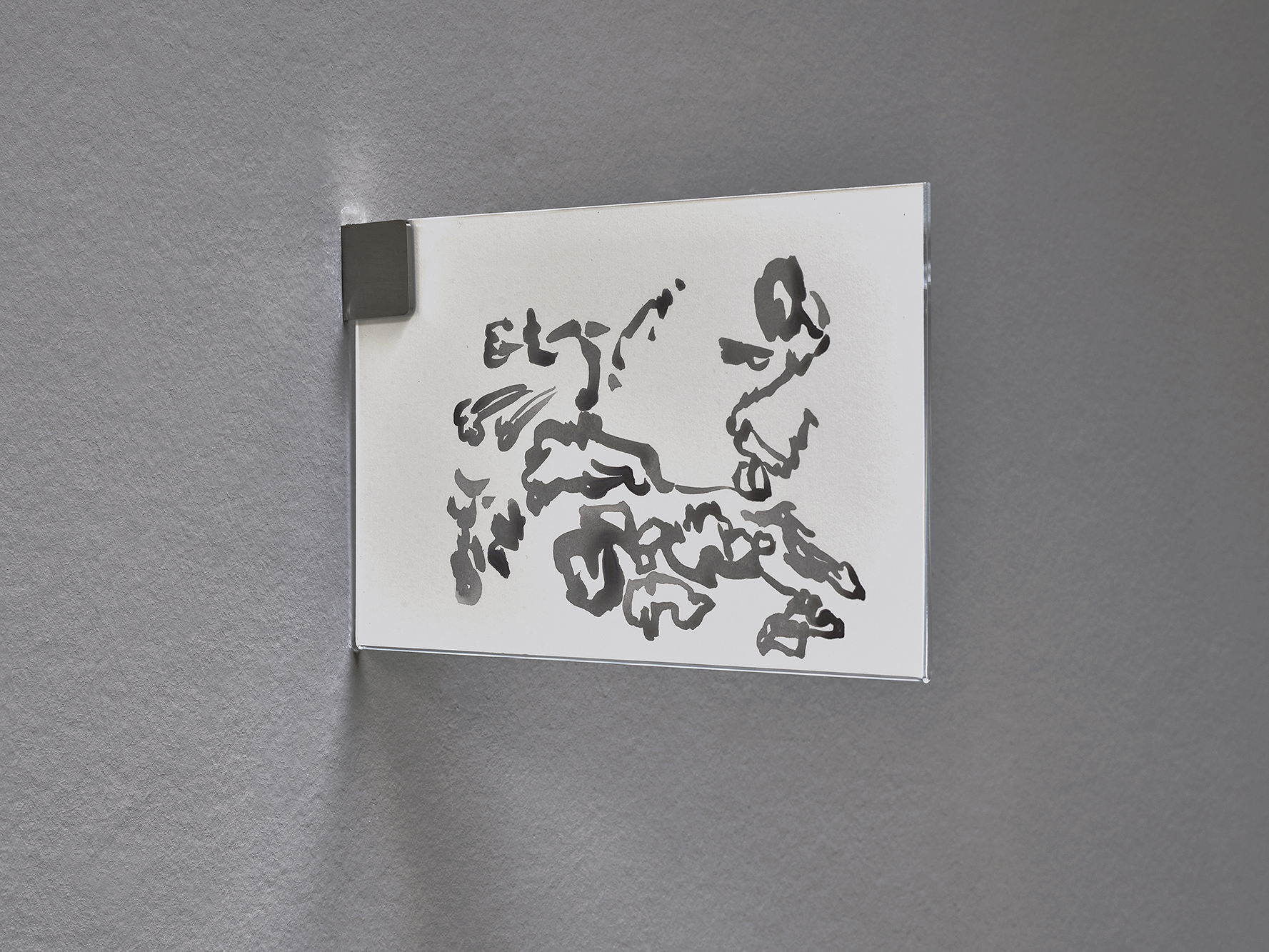
Installation view Modified Limited Hangout, cabinet at Kunsthalle Wilhelmshaven, 2018
Tender Offer
Agata Madejska , Tender Offer (Blackfriars), 2017
giclée print on Canson Infinity Fibre Rag, 130 x 95 cm, edition 5+2AP
MAD_17_0020
Agata Madejska, Tender Offer (Broadgate), 2017
giclée print on Canson Infinity Fibre Rag, 130 x 106.2 cm, edition 5+2AP
MAD_17_0012
Agata Madejska , Tender Offer (Aldgate), 2017
giclée print on Canson Infinity Fibre Rag, 130 x 98.3, edition 5+2AP
MAD_17_0013
Agata Madejska , Tender Offer (Farringdon), 2017
giclée print on Canson Infinity Fibre Rag, 130 x 111.5 cm, edition 5+2AP
MAD_17_0017
Agata Madejska , Tender Offer (Goswell Road), 2017
giclée print on Canson Infinity Fibre Rag, 130 x 107.6 cm, edition 5+2AP
MAD_17_0016
Agata Madejska , Tender Offer (Holborn), 2017
giclée print on Canson Infinity Fibre Rag, 130 x 107.6 cm, edition 5+2AP
MAD_17_0018
Agata Madejska , Tender Offer (Holborn II), 2017
giclée print on Canson Infinity Fibre Rag, 130 x 99 cm, edition 5+2AP
MAD_17_0019
Agata Madejska , Tender Offer (London Bridge I), 2017
giclée print on Canson Infinity Fibre Rag, 130 x 112.3 cm, edition 5+2AP
MAD_17_0014
Agata Madejska , Tender Offer (London Bridge II), 2017
giclée print on Canson Infinity Fibre Rag, 130 x 95.4 cm, edition 5+2AP
MAD_17_0015
Agata Madejska, Tender Offer (Victoria Embankment I), 2017
giclée print on Canson Infinity Fibre Rag, 130 x 105 cm, edition 5+2AP
MAD_17_0010
Agata Madejska , Tender Offer (Victoria Embankment II), 2017
giclée print on Canson Infinity Fibre Rag, 130 x 103 cm, edition 5+2AP
MAD_17_0011

Installation view, Technocomplex, Parrotta Contemporary Art, Stuttgart, 2017
The title Technocomplex is a term borrowed from archeology and refers to a collection of found objects from a specific cultural period within a certain geographical space. In her show Madejska deals with architectural, political and ideological space of the City of London, the so called Square Mile. The City of London is an enclave and historical and economical core of Greater London. Over centuries the City has been granted political and judicial privileges, a status which has been embraced by the financial and investment sector. The boundaries of the City are marked by 11 iron cast dragons placed on tall plinths, which a passer-by can only see from below.
Anna Gritz writes in her essay: In her new series (Tender Offer, 2017), Madejska focuses on these curious insignias of power through photographing the dragons from below using a close crop of the testicles in question. The perspective of the wandering observer is one that she has occupied herself on her many walks of the perimeters of the city, walks that she has been undertaking with increased frequency in the wake of the EU referendum, pondering the City’s stake and role in the pending divorce.” (click for complete essay)
(1) Published on the occasion of the exhibition Technocomplex at Parrotta Contemporary Art, Stuttgart.
De Beers
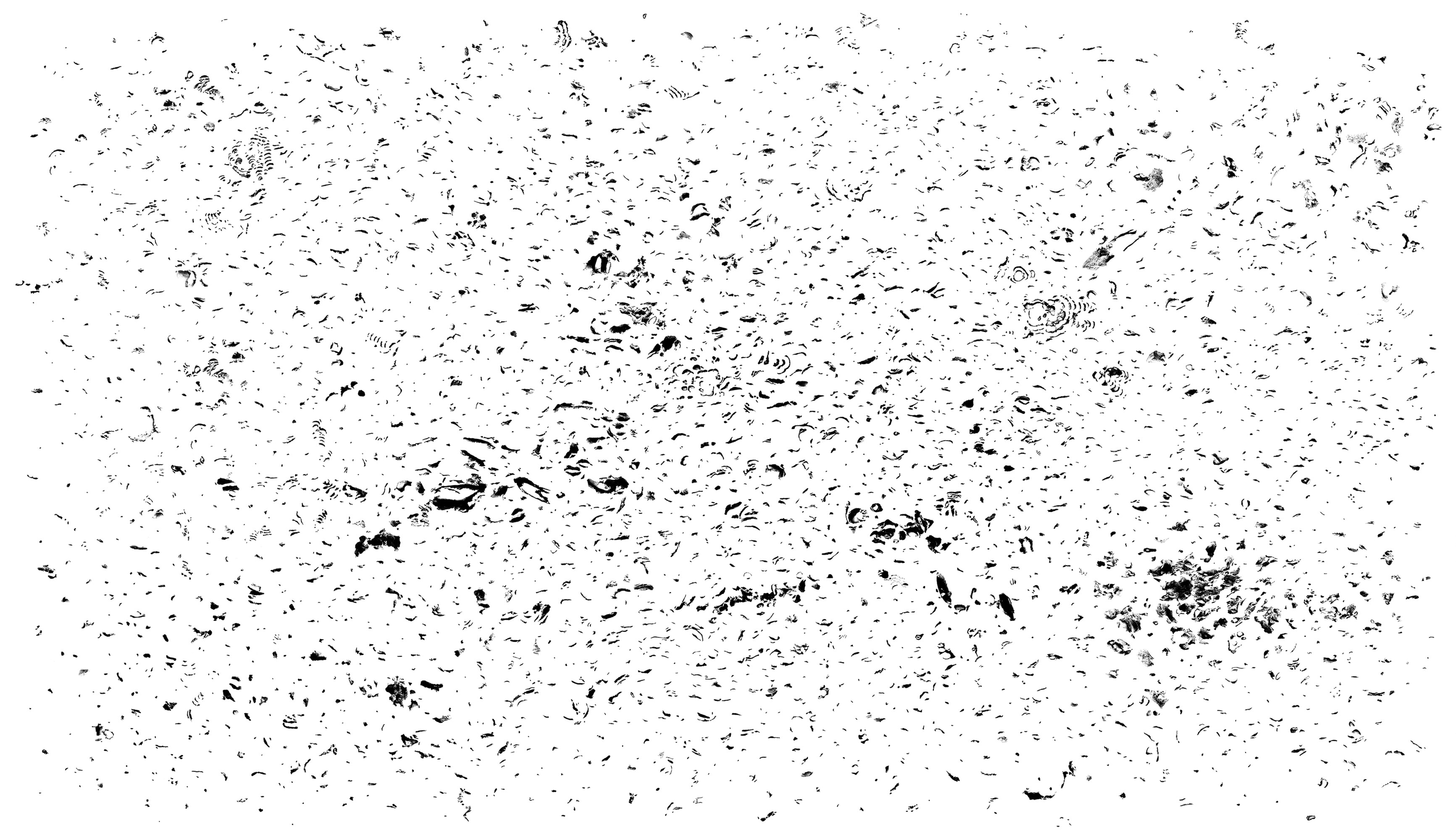
Agata Madejska, De Beers, 2017
giclée print on Hahnemühle Photo Rag Ultra Smooth, 100 × 60 cm, unlimited edition each unique
MAD_17_0023

Agata Madejska, De Beers, 2017
giclée print on Hahnemühle Photo Rag Ultra Smooth
Installation view, Technocomplex, Parrotta Contemporary Art, Stuttgart, 2017
[…] An excellent example of this practice is an untitled series of large-format photographs representing almost organic, cellular black-and-white patches. The first impression is of magma, of a difficulty to find one’s bearings in the here and now. Only upon closer inspection, as the gaze becomes more pensive, do shapes, patterns, and details emerge from the magma. The black-and- white dots gain value as shells appear in them, prehistoric organisms trapped in stone. A moment later the works’ titles – De Beers (2017), London Stock Exchange (2017), The Economist (2015) – begin to tell another part of the story. These minimalistic works are collages of photographs of the limestone façades of buildings such as the London Stock Exchange or the headquarters of the world’s leading diamond company. Each print is unique, produced as a montage of multiple images, thus representing the time-stretched modality contained in the stone deposits.[…]
excerpt, Changes in the Ocean. On the Art of Agata Madejska by Jakub Śwircz, 2019
The Economist
London Stock Exchange
Agata Madejska, The Economist (detail), 2014
giclée print on Hahnemühle Photo Rag Ultra Smooth, 150 x 210 cm, unlimited edition each unique
MAD_17_0021
Agata Madejska , London Stock Exchange (detail), 2017
giclée print on Hahnemühle Photo Rag Ultra Smooth, 150 x 260 cm, unlimited edition
MAD_17_0022
Technocomplex
Agata Madejska, Technocomplex 006, 2017
light sensitive coating on pewter, 54 x 65 x 1.3 cm
£28,00 (ex vat). unique
Agata Madejska, Technocomplex 007, 2017
light sensitive coating on pewter, 54 x 65 x 1.3 cm (unique)
Agata Madejska, Technocomplex 002, 2017
light sensitive coating on pewter, 57 x 68 x 1 cm (unique)
Agata Madejska, Technocomplex 003, 2017
light sensitive coating on pewter, 54 x 65 x 1.3 cm
£2,800 (ex vat). unique
Agata Madejska, Technocomplex 004, 2017
light sensitive coating on pewter, 54 x 65 x 1.3 cm
£2,800 (ex vat). unique
Agata Madejska, Technocomplex 005, 2017
light sensitive coating on pewter, 54 x 65 x 1.3 cm
£2,800 (ex vat). unique
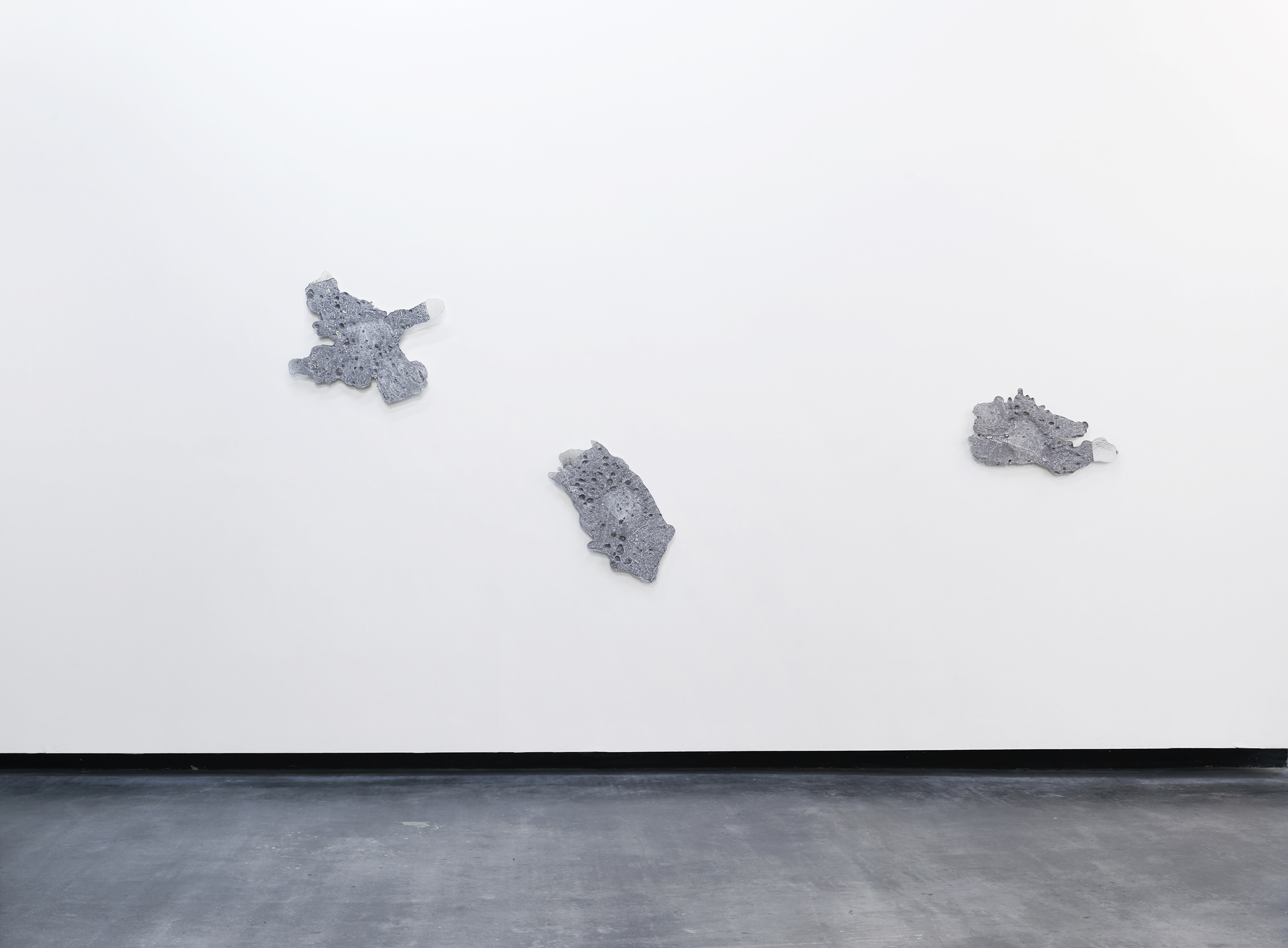
Agata Madejska, Technocomplex
installation view, Technocomplex, Parrotta Contemporary Art, Stuttgart, 2017
[…] The third body of work in the show Technokomplex, 2017, which lends its title to the exhibition, is also informed by Madejska’s research into the City of London. On her ex- ploration Madejska witnessed the Square Mile’s corporate occupants celebrating them- selves through ever larger, sleeker and increasingly opulent representative architectural en- deavours; capital ventures that devour anything that may stand in their way and that have little or no concerns for the needs and concerns of the citizens affected by them.
One of these representative architectures, 20 Fenchurch Street, or as nicknamed by the people of London the ‘Walkie Talkie’, had a particularly severe impact on its surround- ings. The building is characterized by its unique concave curvature, a feature that had the calamitous side effect of reflecting intense sunlight, sending a heat-ray onto the pavement of the street below and melting parts of a parked car. This physical relationship between the architecture, the sunlight and the surrounding environment prompted Madejska to synthesize her photographic explorations into sculptural form. The complex has, akin to the fossil stitchings, an untimely quality that is both prehistoric and of the now. Through the unique combination of photographic paper and poured pewter, Madejska transfers the light-sensitive resin coating of the photographic paper onto a sculptural object. The two elements unite in the hardening process, leaving the light-sensitive resin removed from the paper and melted into the poured pewter surface. The chemical reaction be- tween the pewter and the photographic paper results in a surface structure that resem- bles enamel or metal work and yet the photo sensitivity of the resin proceeds in a grad- ual darkening of the object’s surface until the exposure is completed. Not unlike an al- chemist, Madejska’s marriage of elements is a search for purification. Her use of metal in the photographic process reaches back to the early days of photography when metal plates were still customary. Technocomplex is resultantly revisiting the origins of photo- graphy in an age where its physical properties are about to become extinct. Madejska allows the resulting piece a life of its own, noble, immortal, fossilized. Removed from the image or the notion of a source her process is a form of deconstruction that separates the image from its carrier leaving us with an object instead of an image. The material eats itself. A process of emancipation has begun.
Ouroboros, the self-consuming dragon may very well be the underlying symbol of this constellation of works. The Square Mile with its boundary mark dragons, who in its greed and struggle for self protection and exclusion consumes itself, is united with pho- tography, a field based on the transformation of light into the representation of an im- age, here liberated from that task through the re-imagination of the original process de- void of its duty to depict. As symbol for alchemy, Ourobouros represents both this strive for gold and the perfection of a process through self-referentiality—making itself the prima materia. […]
by Anna Gritz, Ballsy (2017)
Near Here, Not Here, Come Here, Over Here, Right Here, Here We Are
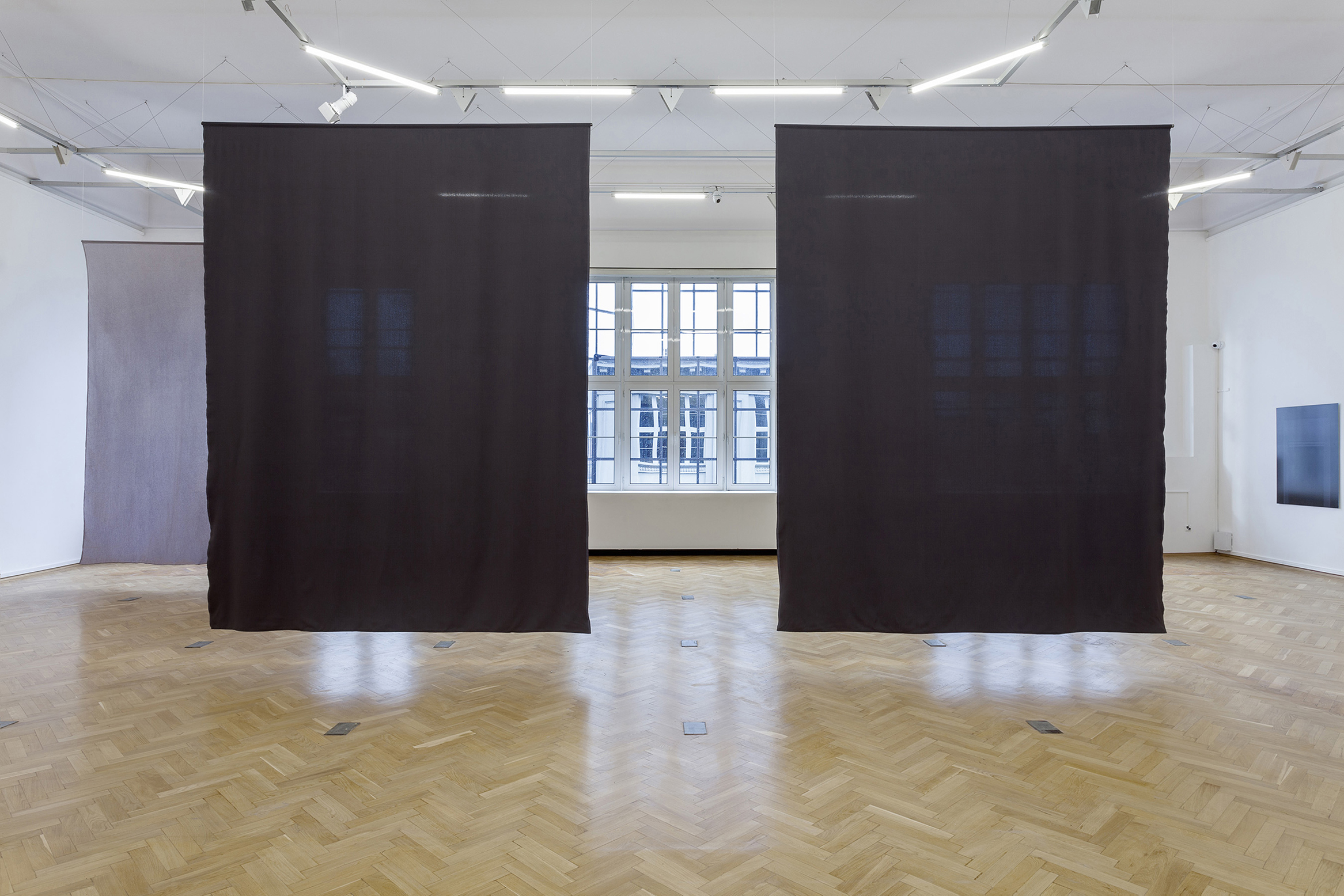
Agata Madejska, Near Here, Not Here, Come Here, Over Here, Right Here, Here We Are, 2017
light sensitive fabric, grey cotton and polyester fabric, steel rods. , 360 × 300 cm each. Installation view, Place. Tłomackie 3/5, Jewish Historical Institute, Warsaw, 2017
unlimited edition each unique

Agata Madejska, Near Here, Not Here, Come Here, Over Here, Right Here, Here We Are, 2017
photosensitive fabric, grey cotton & polyester fabric, steel rods, dimensions variable site specific
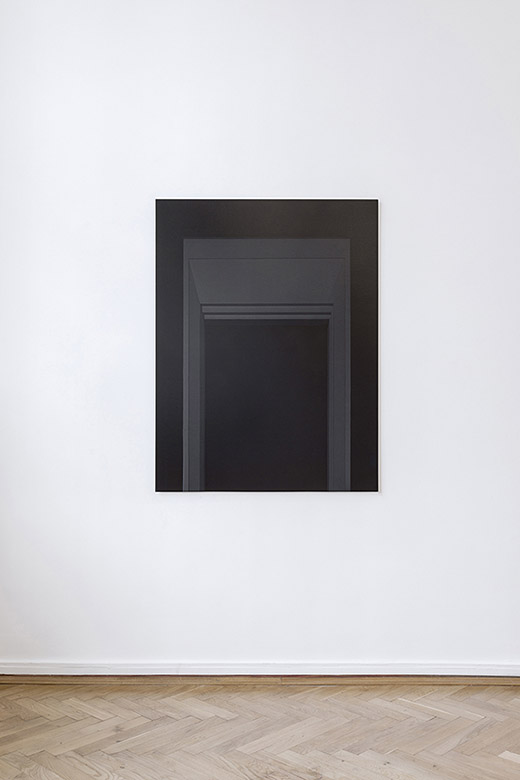
Agata Madejska, Every City Has Its Echo, 2017
digital C-type print on aluminium, 100 x 130 cm
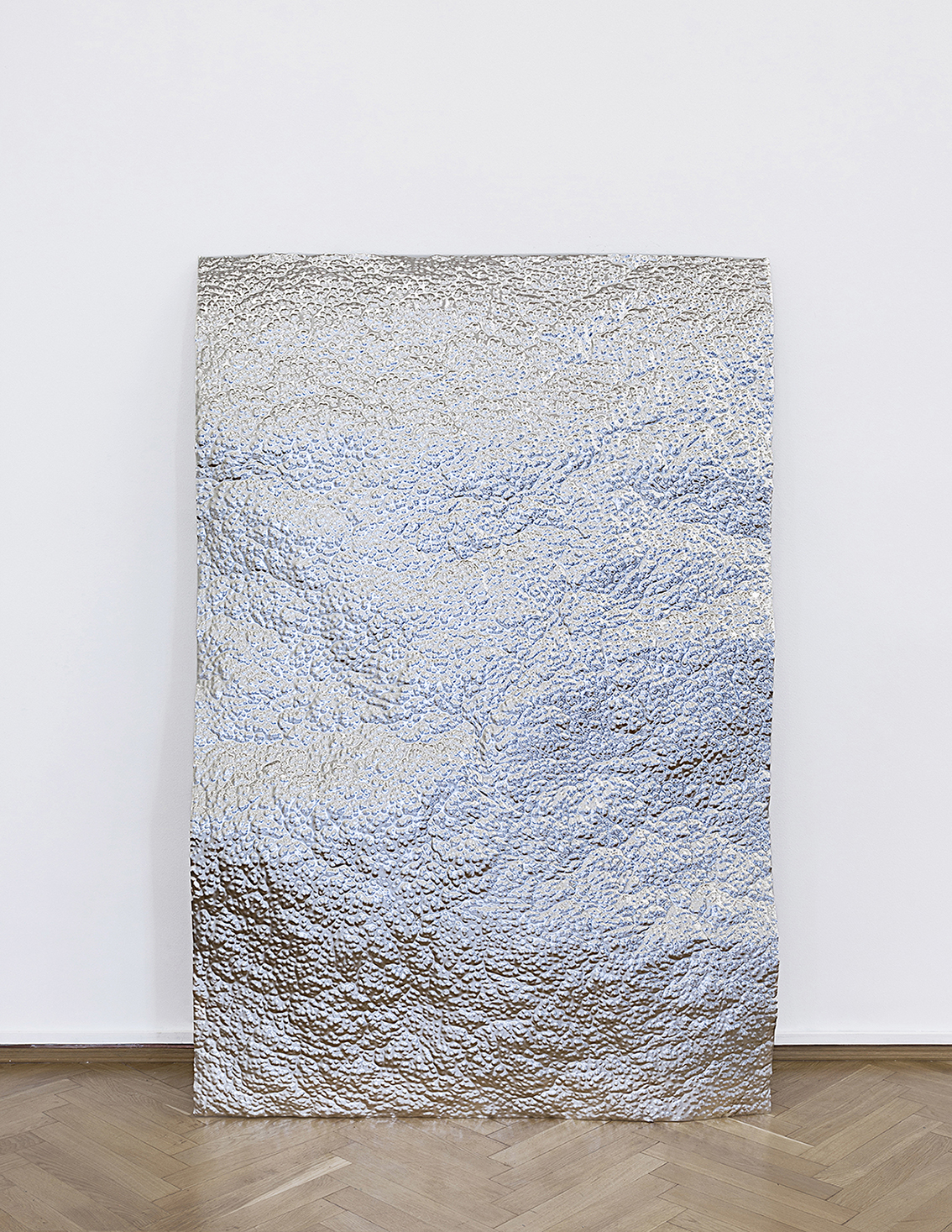
Agata Madejska, 18 Minutes, 2017
aluminium , 200 x 125 cm
[…] With its faux curtains, Agata Madejska’s installation, Near Here, Not Here, Come Here, Over Here, Right Here, Here We Are emphasizes the particular view from the Jewish Historical Institute’s windows — the Blue Tower. The centrally positioned two main sheets virtually leave the viewer no choice but to confront that which is outside the window.
Reflected in the mirror façade of the Blue Tower is not only the building at 3/5 Tłomackie Street but also the surrounding area, once a micro-world of the Jewish community. There are moments when the blue sheet of glass becomes almost invisible, and one gets the impression that it is possible to look beyond, that perhaps the building is not screened from view at all. Symmetrically dividing the space, Madejska’s textiles are catchers of reflexes, of glimpses, accumulating the daily images in the form of shapeless magma. That is also how the building’s memory can work — in itself, the building is immobile, after all, passively awaiting the successive events. In order to emphasize this process of the quasi-accumulation of memory, the artist has covered one of the curtains with a light-sensitive sub- stance. Gradually exposed, it produces a special photographic image. This enduring image will be identical with the way architecture itself participates in the course of the events. In its form and total exposition to light, it also alludes to the charred floor in the main lobby.
Agata Madejska tackles themes spanning architecture, memory, and the image. The first medium used is photography, which penetrates deeply into the structures of the photographed objects and their duration in time. In Every City Has Its Echo, a photograph abstracts the rectangular motif of the Blue Tower’s façade, echoing a shape reminiscent of the details of the Great Synagogue building. Madejska’s composition contains a visual memento.
Another significant object here, 18 Minutes, is a sheet of repoussé aluminum, a reference to the copper reflectors used in synagogues to illuminate the interior. Here the metal reflects glimpses of the city, mirrored in the walls of the Blue Tower. The title itself is an allusion to the ritual lighting of the Sabbath candles. […]
From Now On (Folly)
Agata Madejska, From Now On (Folly), 2014
photo sensitive emulsion, jesmonite, 160 x 250 cm
MAD_14_0001
For Now (Folly), For Now (Folly), 2015
concrete, photochromic paint, 100 x 6 x 6 cm, unlimited edition each unique
MAD_15_0001
Agata Madejska, Seesaw (Folly), 2016
stainless steel, 120 x 12.5 x 0.3 cm, ed.3 + 1 AP
MAD_14_0002
Agata Madejska , Retouch I, 2016
concrete, iron, 40 x 40 x 7 cm unique
MAD_16_0001
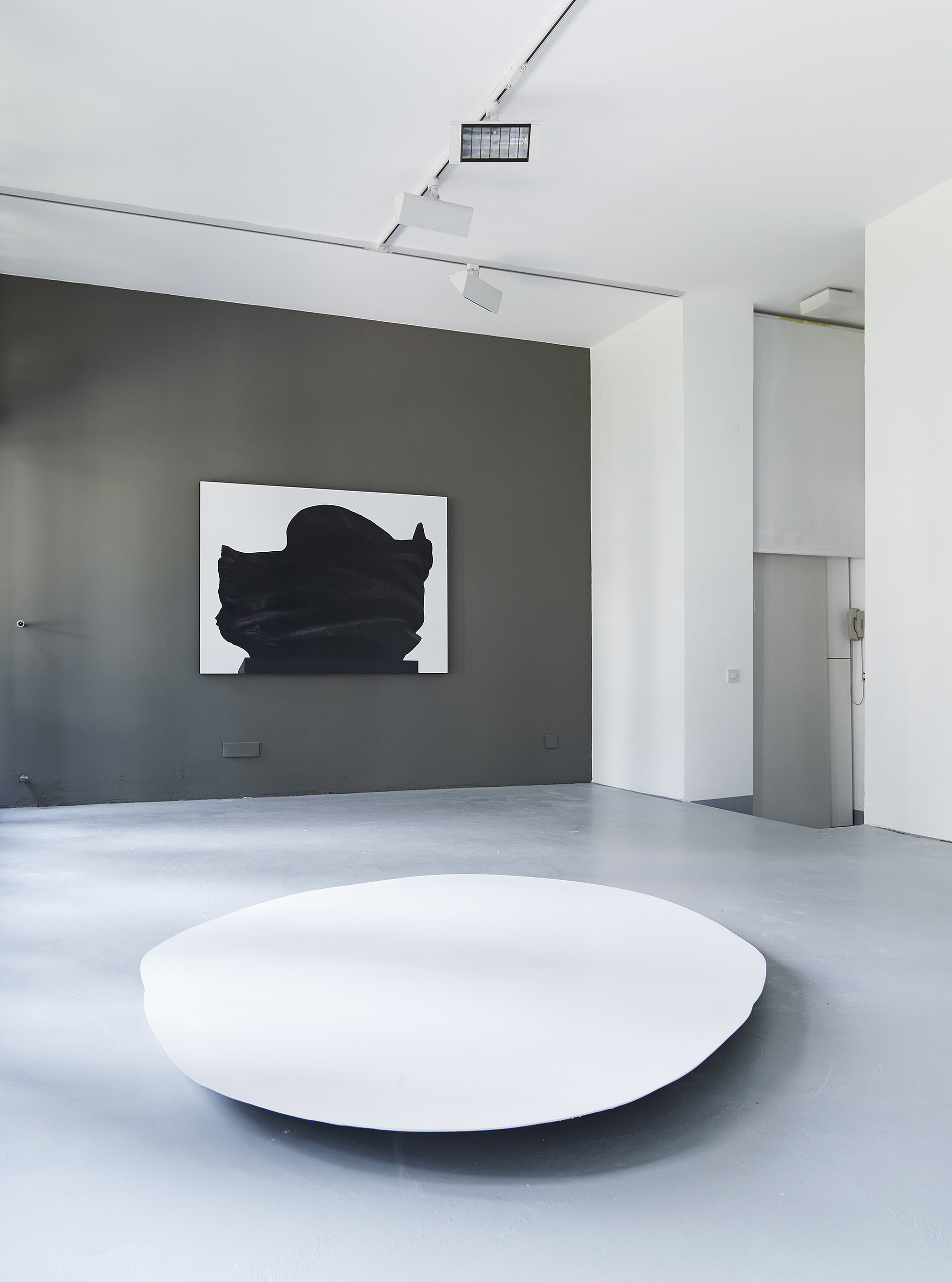
, Installation view, Form Norm Folly, Krefelder Kunstverein, 2014
Published texts based on conversations between the authors and Agata Madejska in the summer of 2014, printed at the occasion of the show Form Norm Folly at Krefelder Kunstverein
Published texts based on conversations between the authors and Agata Madejska in the summer of 2014, printed at the occasion of the show Form Norm Folly at Krefelder Kunstverein
Factum
Agata Madejska, Factum, 2014
UV-print on perspex, paper, powder-coated steel frame, 50 x 100 x 60 cm
price on request. price on request. ed. 3 + 1 AP
Agata Madejska, Factum, 2014
UV-print on perspex, paper, powder-coated steel frame, 50 x 100 x 60 cm
price on request. price on request. ed. 3 + 1 AP
Agata Madejska, Factum, 2014
UV-print on perspex, paper, powder-coated steel frame, 50 x 100 x 60 cm, ed.3 + 1 AP

Agata Madejska, Kingly Things, Chandelier Projects, London, 2015
installation view, 50 x 100 x 60 cm, ed.3 + 1 AP
[…] It is also worth noting that Madejska with her practice can hardly be classified as a single-medium artist, even if photography suits her well. In one of her letters to Johanna Jaeger, she talks about how painting was her earlier experience; she discovered photography for herself only during her studies in Essen, and it is the medium’s imperfection that captivates her. The crevices hat she seeks to explore in her work originate precisely in the dubious perfection of the match between the intention to capture something and the actual representation. The difference between the initial condition and the final outcome feeds the artist’s sceptical attitude, divesting the medium itself of finality, of the power to name and indicate. Those are but approximations and modalities.
The first full embodiment of this approach is the work Factum (2014), consisting of sixteen small tables with abstract, almost stereographic images printed on layers of plexiglass. These hybrids, combining photography, installation, and sculpture, are a study of the extraordinary space that is the Soviet War Memorial in Treptower Park, Berlin. Its uniqueness consists in preserving in stone the mirror image that comprises the layout. The central area of the memorial is lined symmetrically on both sides by sixteen sarcophagi holding the ashes of Soviet soldiers killed in the Battle of Berlin. The sarcophagi are decorated with relief carvings of military scenes and quotations from Joseph Stalin; they can be considered as screens, or stage sets, very clearly indicating the intended viewing points. On one side, the quotations are in the original Russian; opposite are their German translations. […]
by Jakub Śwircz, November 2019
Temporary or Permanent
Agata Madejska, Space II (part of the photo essay Temporary or Permanent, published in Museum Folkwang. Die Architektur, Edition Folkwang, Steidl, Göttingen, 2012), 2011
digital C-type print, ed.5 + 2 AP
MAD_11_0009
Agata Madejska , Wall I, 2011
digital C-type print, ed.5 + 2 AP
MAD_11_0002
Agata Madejska, Corner, 2011
digital C-type print, ed.5 + 2 AP
MAD_11_0006
Agata Madejska, Image III, 2011
digital C-type print, ed.5 + 2 AP
MAD_11_0007
Agata Madejska, Corridor, 2011
digital C-type print, ed.5 + 2 AP
MAD_11_0004
Agata Madejska, Image I, 2011
digital C-type print, ed.5 + 2 AP
MAD_11_0003
Agata Madejska, Image II, 2011
digital C-type print, ed.5 + 2 AP
MAD_11_0005
Agata Madejska, Space I, 2011
digital C-type print, ed.5 + 2 AP
MAD_11_0008
Agata Madejska, Wall II, 2011
digital C-type print, ed.5 + 2 AP
MAD_11_0010
Agata Madejska, Entrance, 2011
digital C-type print, ed.5 + 2 AP
In 2010, the Folkwang Museum opened its new building designed by David Chipperfield Architects which was awarded the NRW Architecture Prize. The building complex, erected in just 23 months, is an extraordinary architectural and technical achievement, which is documented and explained in the publication Museum Folkwang. Die Architektur, for the first time with texts and images, drafts by the architects and photographic essays. The contributions are devoted to the prehistory of the project, the design features of David Chipperfield’s design and the relationship between architecture and museums in general.
Here Agata Madejska’s photo essay Temporary or Permanent explores the building and its structural environment.
With texts by David Chipperfield, Bruno Haas, Wolfgang Pehnt and others.
Other photo essays by Stephanie Kiwitt and Marion Poussier.
The Order of Solids
Agata Madejska, 81-86, 2010
digital C-type print on Forex and waxed black MDF , 119 x 162.7 cm, ed.5 + 2 AP
MAD_10_0002
Agata Madejska, 46-48, 2010
digital C-type print on Forex and waxed black MDF , 119 x 130 cm, ed.5 + 2 AP
MAD_10_0001
Agata Madejska, Crystal Display, 2010
digital C-type print on Forex and waxed black MDF , 139.5 x 180 cm, ed.5 + 2 AP
MAD_10_0003
Agata Madejska, 25-36, 2010
digital C-type print on Forex and varnished MDF, 161 x 200 cm, ed.5 + 2 AP
MAD_10_0005
Agata Madejska, Here and There, 2011
digital C-type print on Forex , wood , 12.5 x 33 cm
£1800 (ex vat). ed. 5 + 2 AP
Agata Madejska, 1906, 2012
digital C-type print on Forex and waxed black MDF , 130 x 119 cm, ed.5 + 2 AP
MAD_12_0001
Agata Madejska, Thereabouts, 2012
digital C-type print on Forex and waxed black MDF , 50 x 55 cm and 50 x 60 cm
£4400 (ex vat). ed. 5 + 2 AP
Agata Madejska, Memorial A-Z, 2013
Inkjet prints on aluminium , 28 panels 16 x 67 cm and 6 panels 16 x 5, ed.5 + 2 AP
Installation view, Parrotta Contemporary Art, Stuttgart, 2013
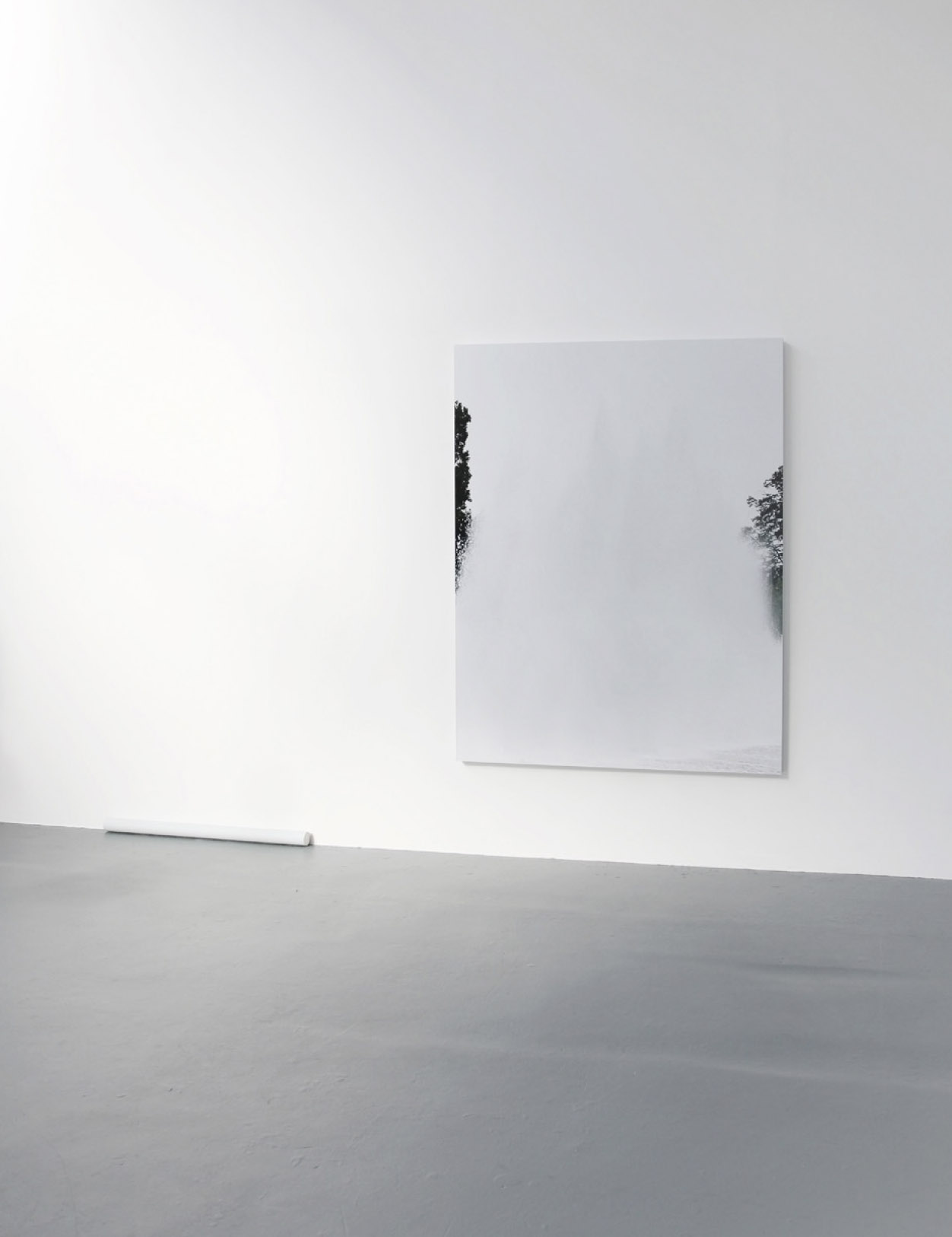
Installation view, Chandelier Projects, 2015

, Installation view, Conflict, Time, Photography, Tate Modern, London, 2014
[…] In The Order of Solids we see various public monuments, plazas, and sculptures. Unusual perspectives, changes in size ratio, and the precise translation of daylight into the light of photography gives them an aesthetic, alien quality; their concrete, solid materiality is dissolved into light and dark shapes that hover between stark abstraction and realistic representation. In a pictorial sense, Madejska knocks the monuments off their pedestals by presenting these as voids. Her photographic redistribution of the visible and invisible addresses the transitive character of symbolic representations in public space that prevail or pass on. She uses photography as an image-generating medium whose products are rooted in visible reality. The creation of this reference, however, takes from the representation any necessity to remain true to reality; rather, it is a symbolic reference to space. In an engagement with the physical space and the camera’s possibilities of representing it, Madejska creates subjectively charged images of space that visualize the production of space through its form and imagination. […]
by Kathrin Meyer, Of Places and Spaces: Mirages and other Manifestations of Reality
[…] A withdrawal of color is apparent in all Agata Madejska’s works, including the latest series The Order of Solids, which she began in 2010. Once again, Madejska demarcates her motifs – monuments, sculptures and fountains – from their environment. In the abstraction of the representation, it is sometimes the case that the objects from the public space that dominate the picture can only be deciphered by means oft he thin boarder, showing buildings and trees. Madejska is interested in their function as foils for a cultural context and can be seen as a powerful and at the same time abstracting exploration of history / the story and its representation. Moreover, The Order of Solids illustrates Madejska’s interest and focus sculpture, three-dimensionality and her understanding of photography as the starting and not the end point of her artist work. In presenting her images she always seeks to sculpturally expand her image space. It is irrelevant whether, as in the latest development of her works, there are actually objects in the space or whether this specific interest in space is expressed in the framing of the pictures. The precision of her working method is evident in her entire oeuvre – in the motivic stringency and her control of the print, form of presentation and installation. […]
by Lisa Marei Schmidt, click for full text
Ideogram
Agata Madejska , Ideogram 001, 2008
lightjet C-print, aluminium, 60 x 46 cm, edition 5 + 2 AP
MAD_08_0001
Agata Madejska , Ideogram 002, 2009
lightjet C-print, aluminium, 60 x 46 cm, edition 5 + 2 AP
MAD_08_0002
Agata Madejska , Ideogram 003, 2009
lightjet C-print, aluminium, 60 x 46 cm, edition 5 + 2 AP
MAD_08_0003
Agata Madejska , Ideogram 004, 2008
lightjet C-print, aluminium, 60 x 46 cm, edition 5 + 2 AP
MAD_08_0004
Agata Madejska , Ideogram 005, 2009
lightjet C-print, aluminium, 60 x 46 cm, edition 5 + 2 AP
MAD_08_0005
Agata Madejska , Ideogram 006, 2008
lightjet C-print, aluminium, 60 x 46 cm, edition 5 + 2 AP
MAD_08_0006
Agata Madejska , Ideogram 007, 2008
lightjet C-print, aluminium, 60 x 46 cm, edition 5 + 2 AP
MAD_08_0007
Agata Madejska , Ideogram 008, 2009
lightjet C-print, aluminium , 60 x 49 cm, edition 5 + 2 AP
MAD_08_0008
[…] In the series Ideogram (2007–2009) we find white instead of black, tones of gray, a milky absence of color. This series also consists of eight photographs 60 cm high and between 44 and 49 cm wide, depending on the motif. In Ideogram 001 (2008, 60×46 cm), the sharp edge of two curved grid-like surfaces meets in the middle, protruding towards the viewer. The edges are soft on the gray-white sur- face; it seems as though the form were emerging from fog or clouds—the ground cannot be seen. Ideogram 003 (2009, 60×43 cm) is a clearly delineated frontal block, while Ideogram 004 (60×45,5 cm) transforms a convex structure into a surface, a shimmering excerpt on a monochromatic background. These are photographs of office blocks of glass and steel; their ghostly appearance is due to their removal from the city context, the unreal white, and the arrangement. Not a sign of life can be seen, and there is no indication as to whether people have ever been present here, have ever lived or worked in the buildings. Madejska presents them as abstract struc- tures, as grid orders that are either pictorially flat or create a spatial effect—less as real buildings with a spatial or temporal location than as forms. It’s about creating images in which the buildings become ghosts.[…]
by Kathrin Meyer, Of Places and Spaces: Mirages and other Manifestations of Reality
[…] In the Ideogram series, a sharp geometric form, constituting part of a glass office block, pierces through a cloudy, unspecified space. This building is detached, isolated. It does not belong to any surroundings that are familiar to us. From experience we recognise that such forms of modern architecture serve business purposes and can be found in modern neighbourhoods and business centres. Buildings of this nature rarely stand alone. The isolated singular entity therefore loses its primary purpose and is detached from its social and functional role. Through selecting and detaching the object, Madejska returns the building to its former design stage. It becomes an idea, a sign. It is a mirage from the past. In other words, it constitutes the designer’s materialised, concrete idea.[…]
by Dobromiła Błaszczyk, founder and director of London-based arts organisation Contemporary Lynx, since 2013
kosmos
Agata Madejska, Kosmos #8, 2006
lightjet C-print, dibond aluminium, tray frame, 41.8 x 50.3 cm, edition 5 + 2 AP
MAD_06_0008
Agata Madejska, Kosmos #2, 2006
lightjet C-print, dibond aluminium, tray frame, 41.8 x 51.1 cm, edition 5 + 2 AP
MAD_06_0002
Agata Madejska, Kosmos # 1, 2006
lightjet C-print, dibond aluminium, tray frame , 41.8 x 54.8 cm, edition 5 + 2AP
MAD_06_0001
Agata Madejska , Kosmos # 4, 2006
lightjet C-print, dibond aluminium, tray frame, 41.8 x 54.3 cm, edition 5 + 2 AP
MAD_06_0004
Agata Madejska, Kosmos #6, 2006
lightjet C-print, dibond aluminium, tray frame, 41.8 x 50.3 cm, edition 5 + 2 AP
MAD_06_0006
Agata Madejska, Kosmos #7, 2006
lightjet C-print, dibond aluminium, tray frame, 41.8 x 50.3 cm, edition 5 + 2 AP
MAD_06_0007
Agata Madejska, Kosmos # 3, 2006
lightjet C-print, dibond aluminium, tray frame , 41.8 x 41.8 cm, edition 5 + 2 AP
MAD_06_0003
Agata Madejska , Kosmos #5, 2006
ightjet C-print, dibond aluminium, tray frame , 41.8 x 38.3 cm, edition 5 + 2 AP
MAD_06_0005
[…] The series kosmos was made at twilight, the “blue hour.” Some of the images required long periods of waiting in order to catch the right moment when the last bit of daylight shone upon the metal surfaces. The stark artificiality of the images arises from a precise handling of the camera through over- and underexposure, contrast gradation, and shutter speed. It would have been possible to achieve a similar result on the computer, through digital manipulation, but Agata Madejska describes the object’s presence before the camera—the searching and waiting, observing, sitting tight and then catching the moment—as indispensable to the process. She works with existing light and with photography’s ability to create an image from a momentary relationship between light and darkness that transports clearly recognizable objects from their everyday surroundings into an atmosphere far removed from the everyday. The fact that children actually play on these things is something almost impossible to imagine. It makes no sense that anything at all can be done with them. The images show a space that they themselves have created, in which the rules according to which matter behaves and becomes visible are different than they are in the world in which we walk past playgrounds or through them, in which children run around and play in them. […]
by Kathrin Meyer, Of Places and Spaces: Mirages and other Manifestations of Reality
[…] For a brief moment the spark throws light on forms and objects, which until then remain hidden in the dark. Photographs by Agata Madejska, which belong to the kosmos series depict the unique moment when our eyes make out subtly illuminated shapes amid the dark abyss of oblivion and neglect. At first these shapes are abstract; they resemble nothing meaningful. But as time passes, they form into numerous pictures – shapes of swings, slides, and playgrounds – familiar motifs of childhood memories. The artist draws from widely familiar concepts embedded within historical, social and cultural memory. She relies upon the associations these concepts evoke, thereby triggering our memory, forgetfulness, and things that are conscious and subconscious within us. […]
by Dobromiła Błaszczyk, founder and director of London-based arts organisation Contemporary Lynx, since 2013
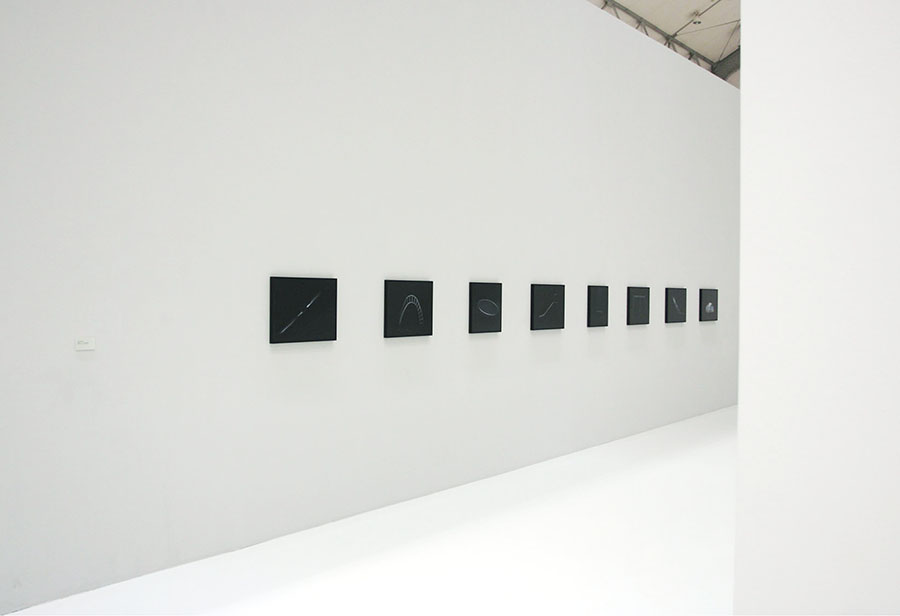
Installation view, Gute Aussichten: Junge Deutsche Fotografie, Haus der Fotografie, Hamburg, 2008
Enquiries
Please note that all works are subject to prior sales and tax where applicable.
